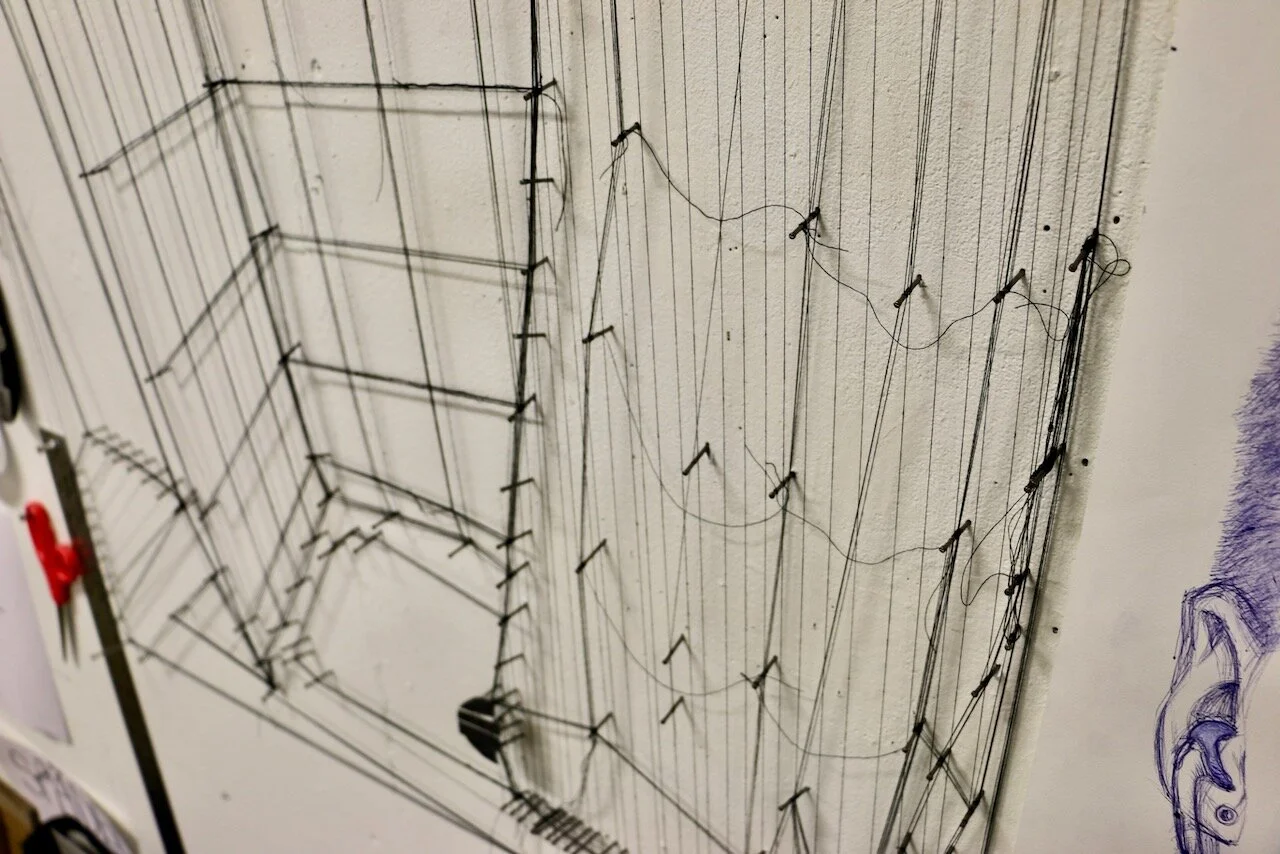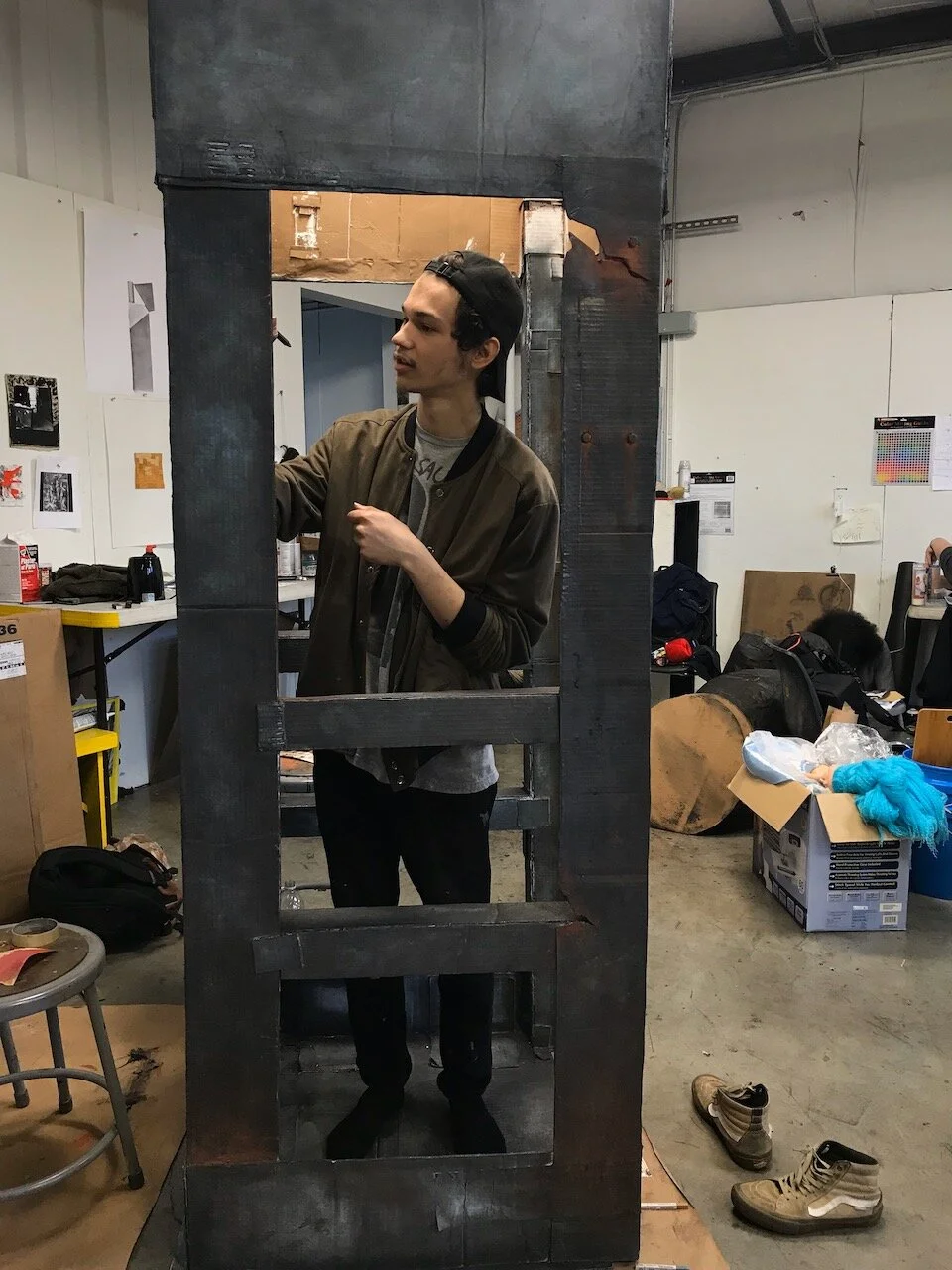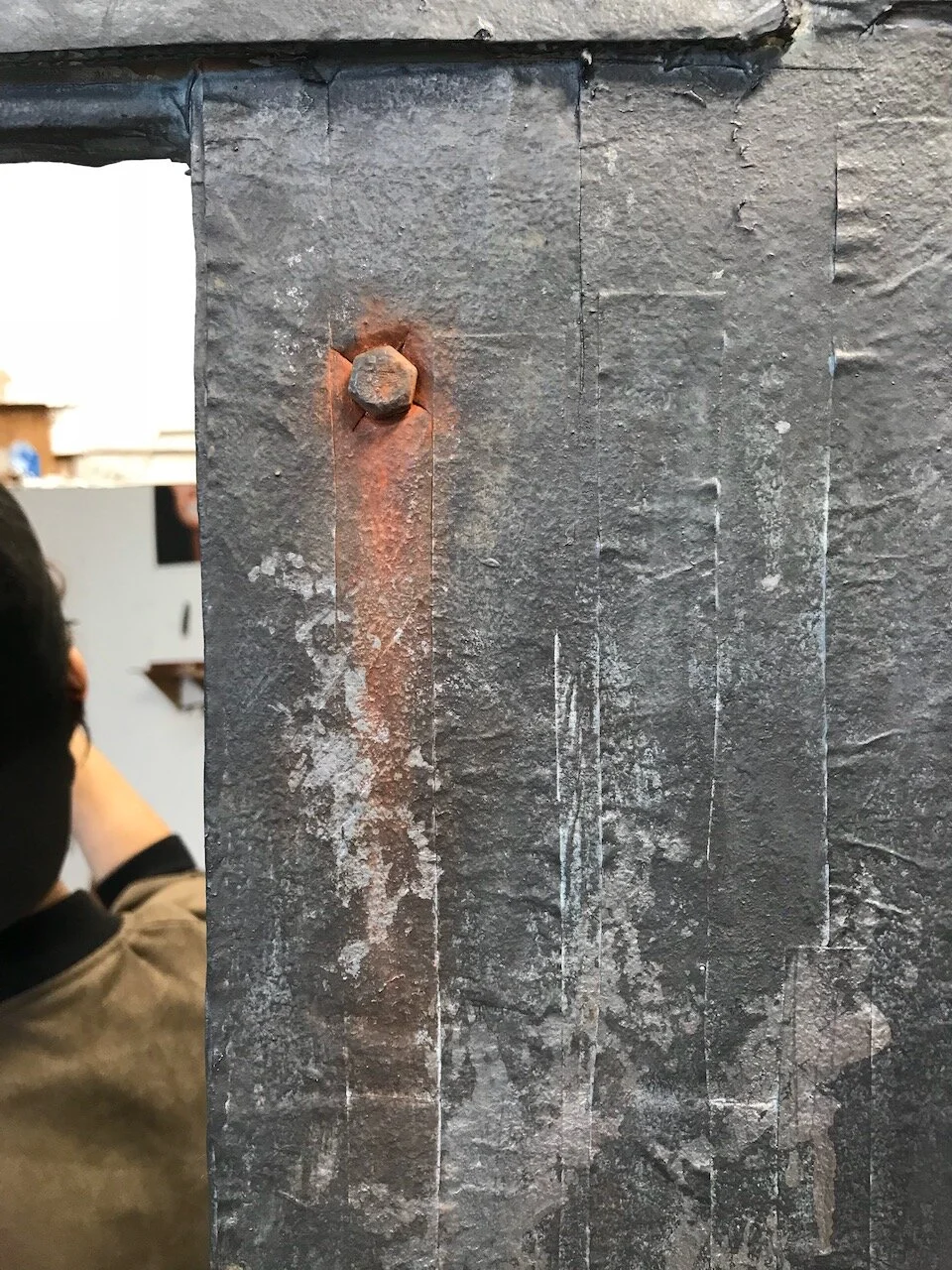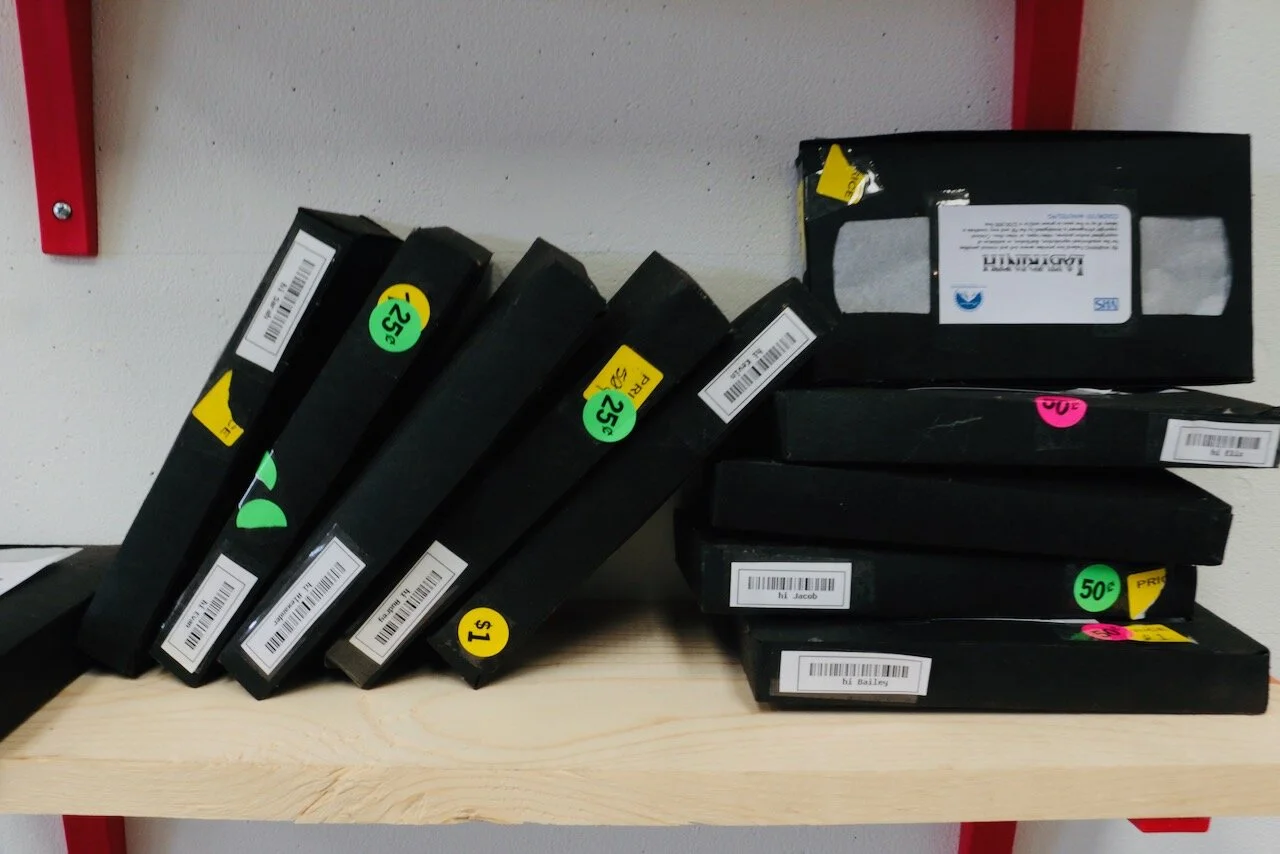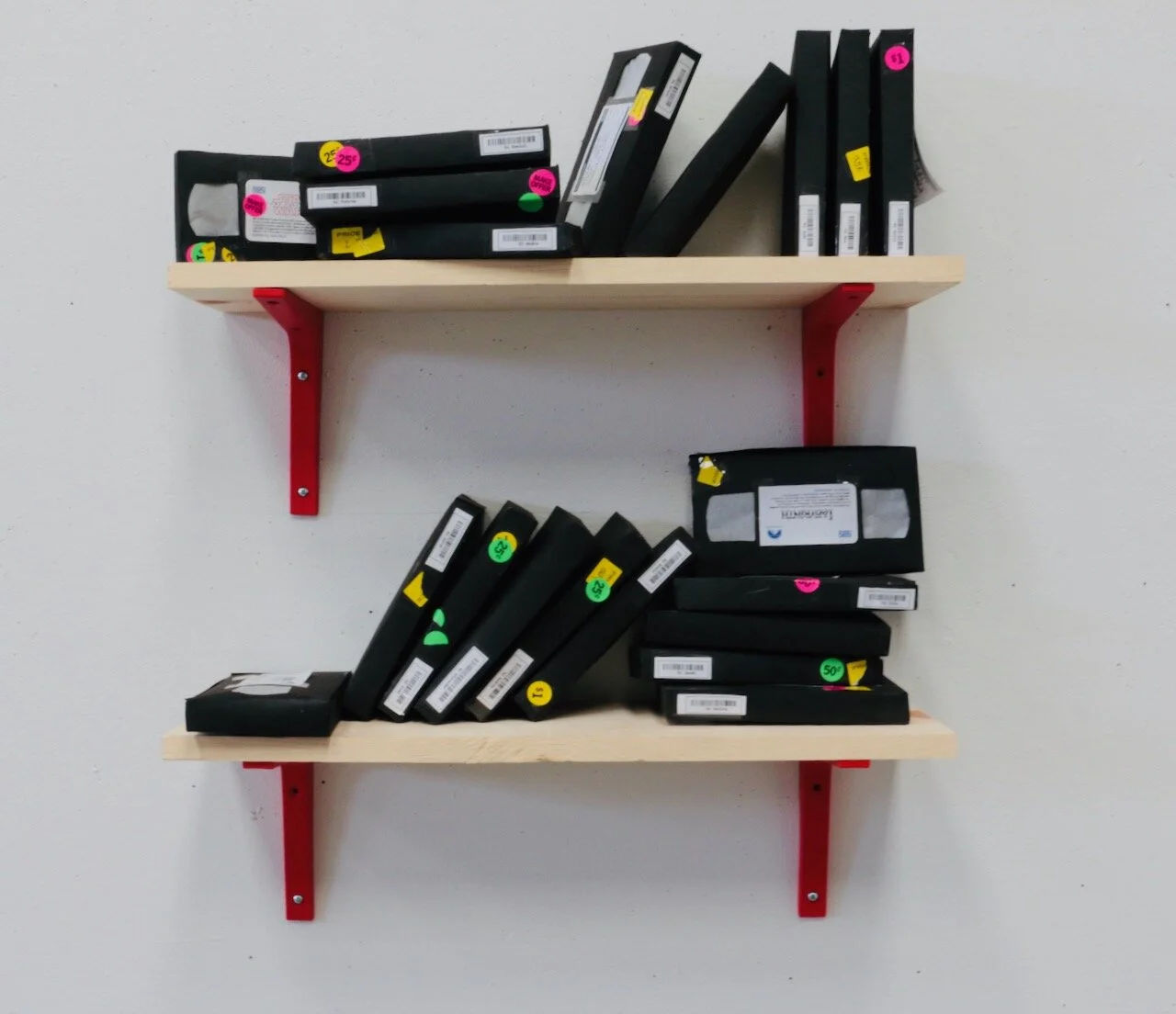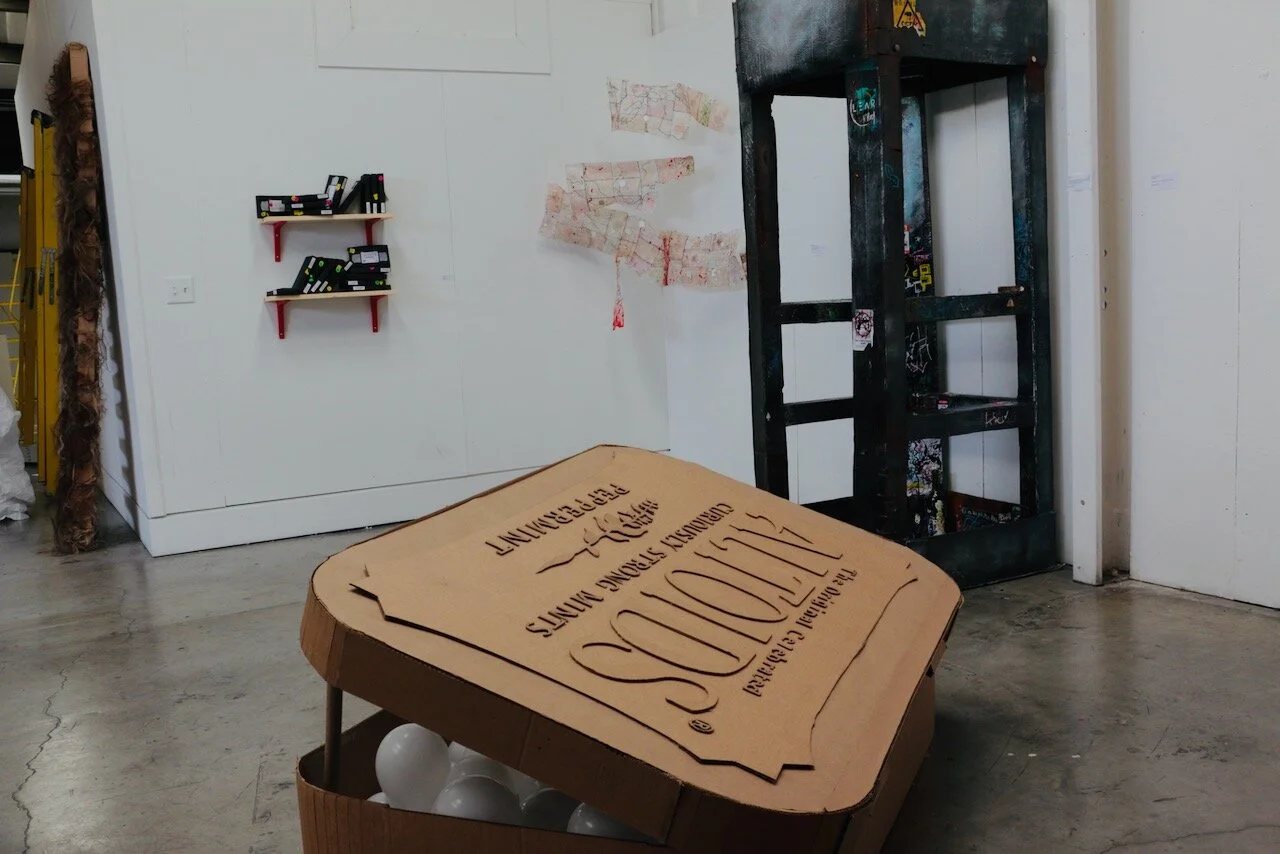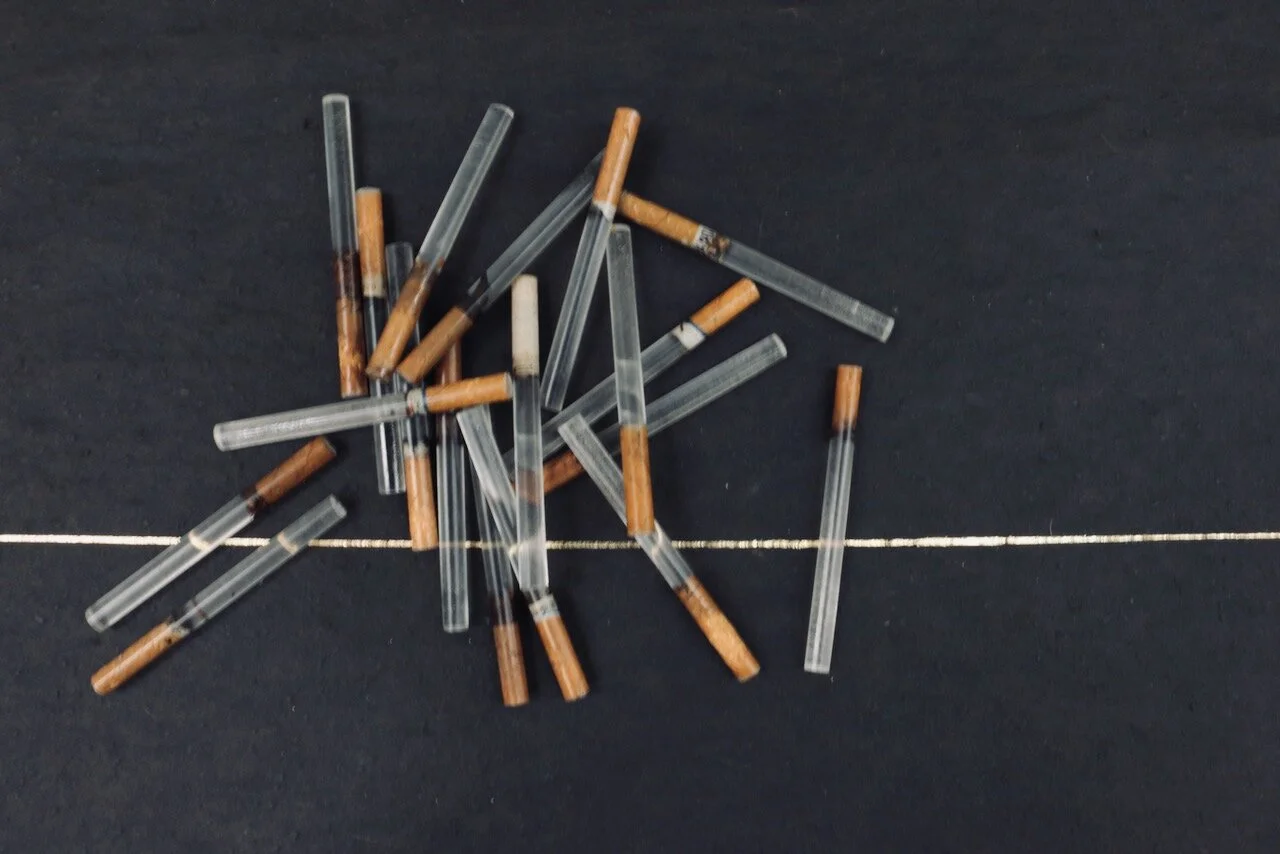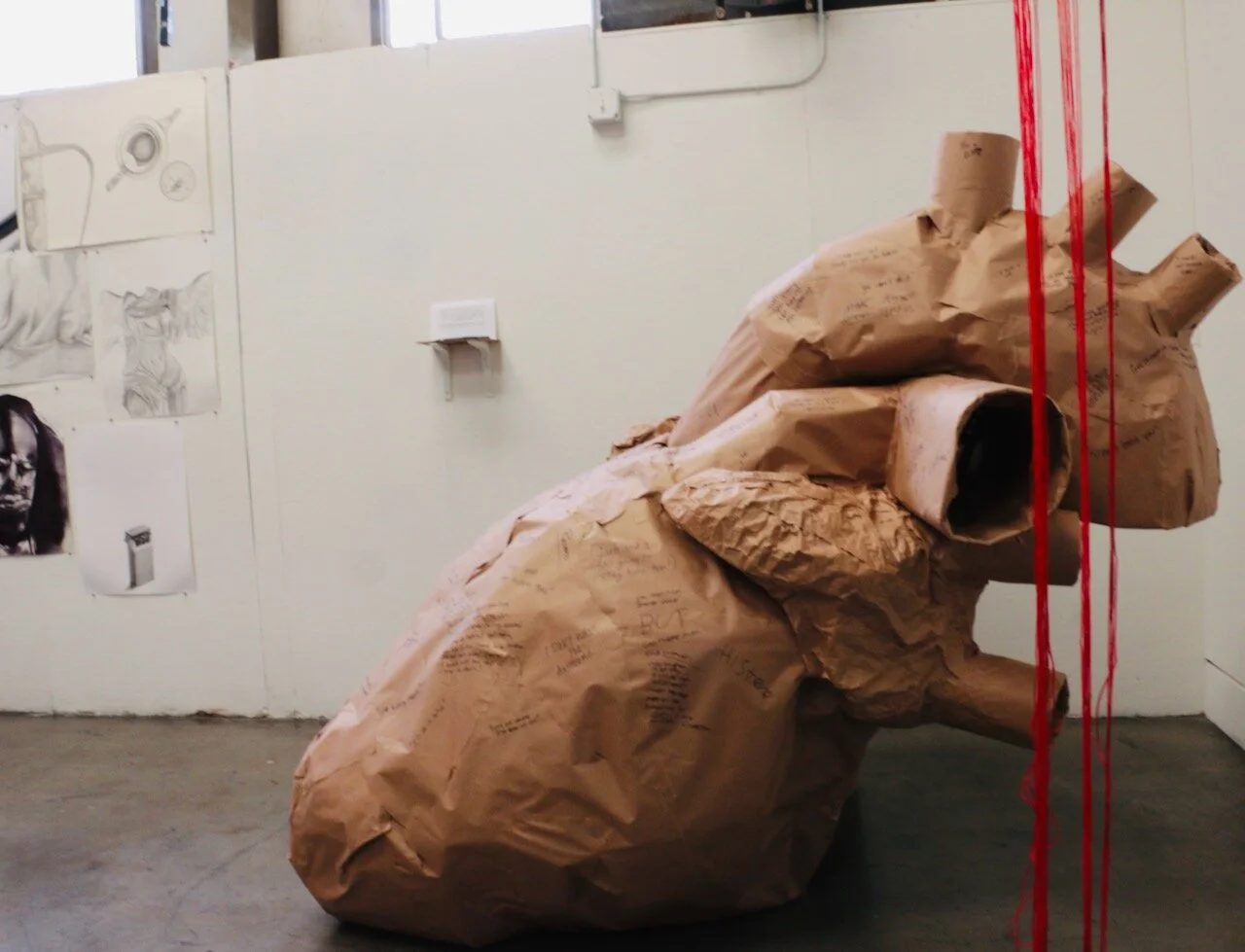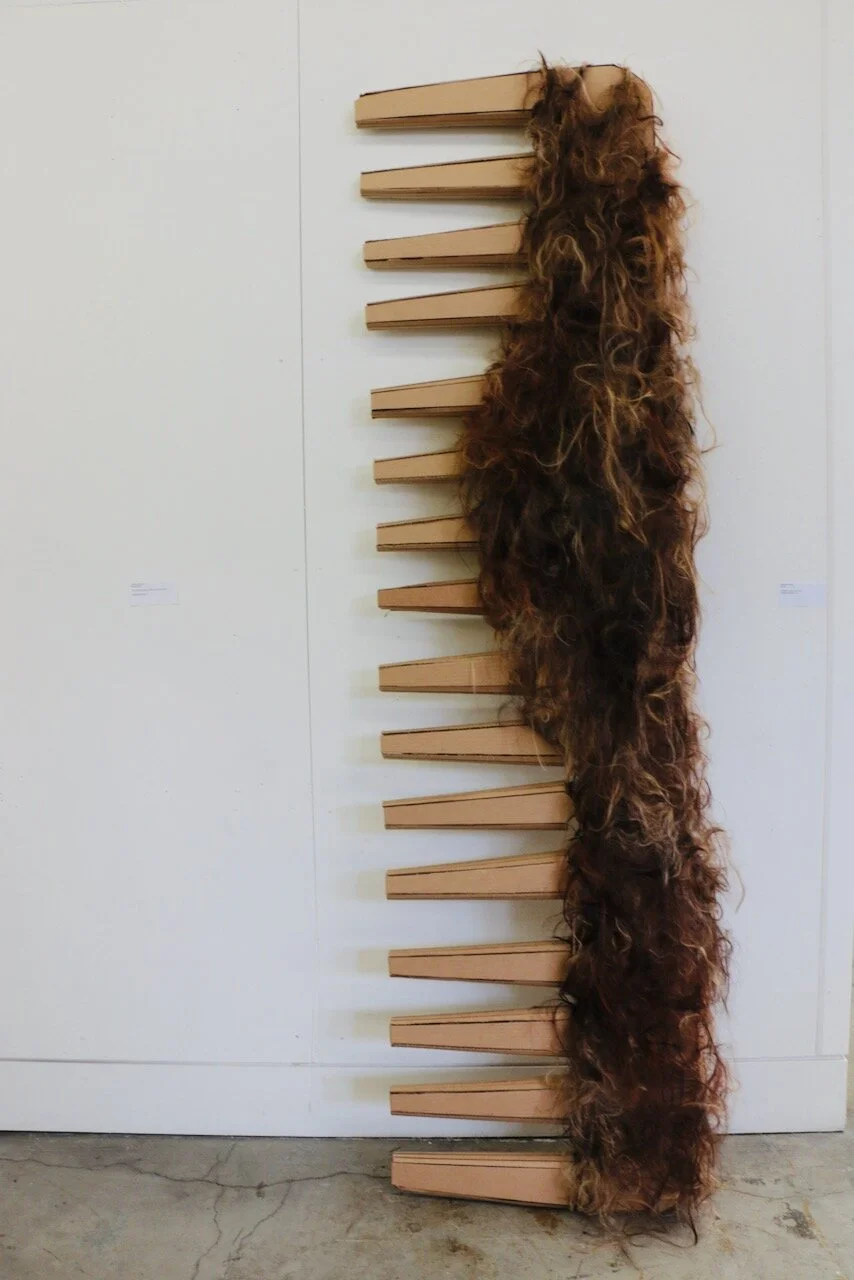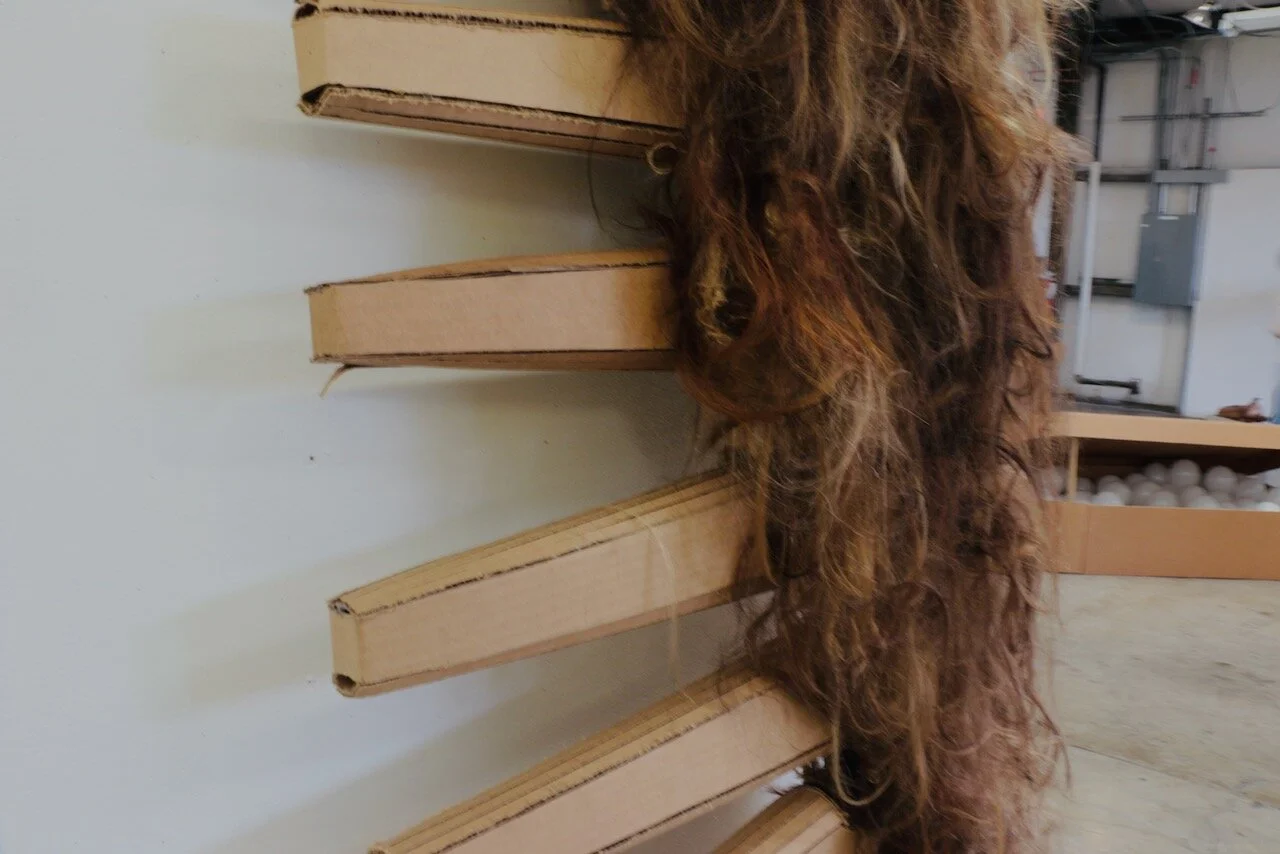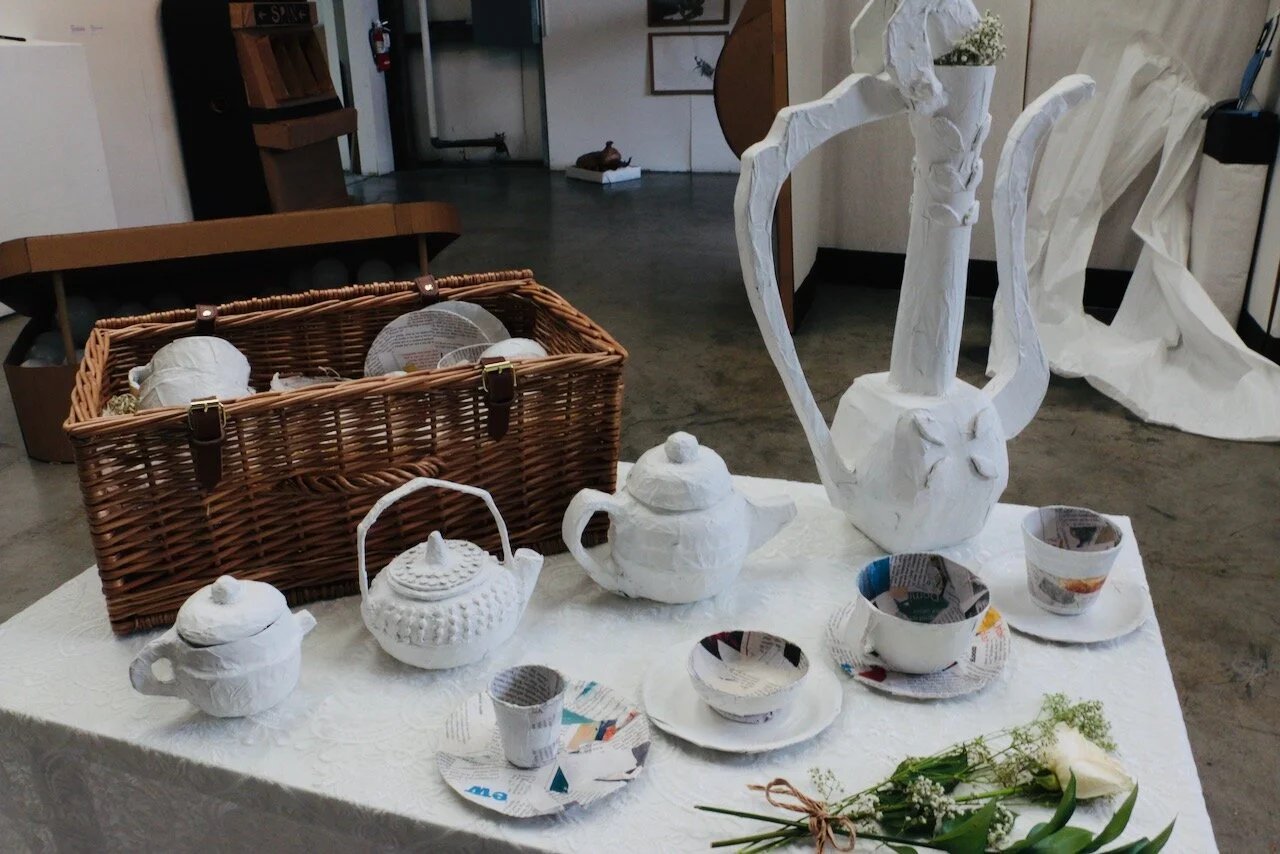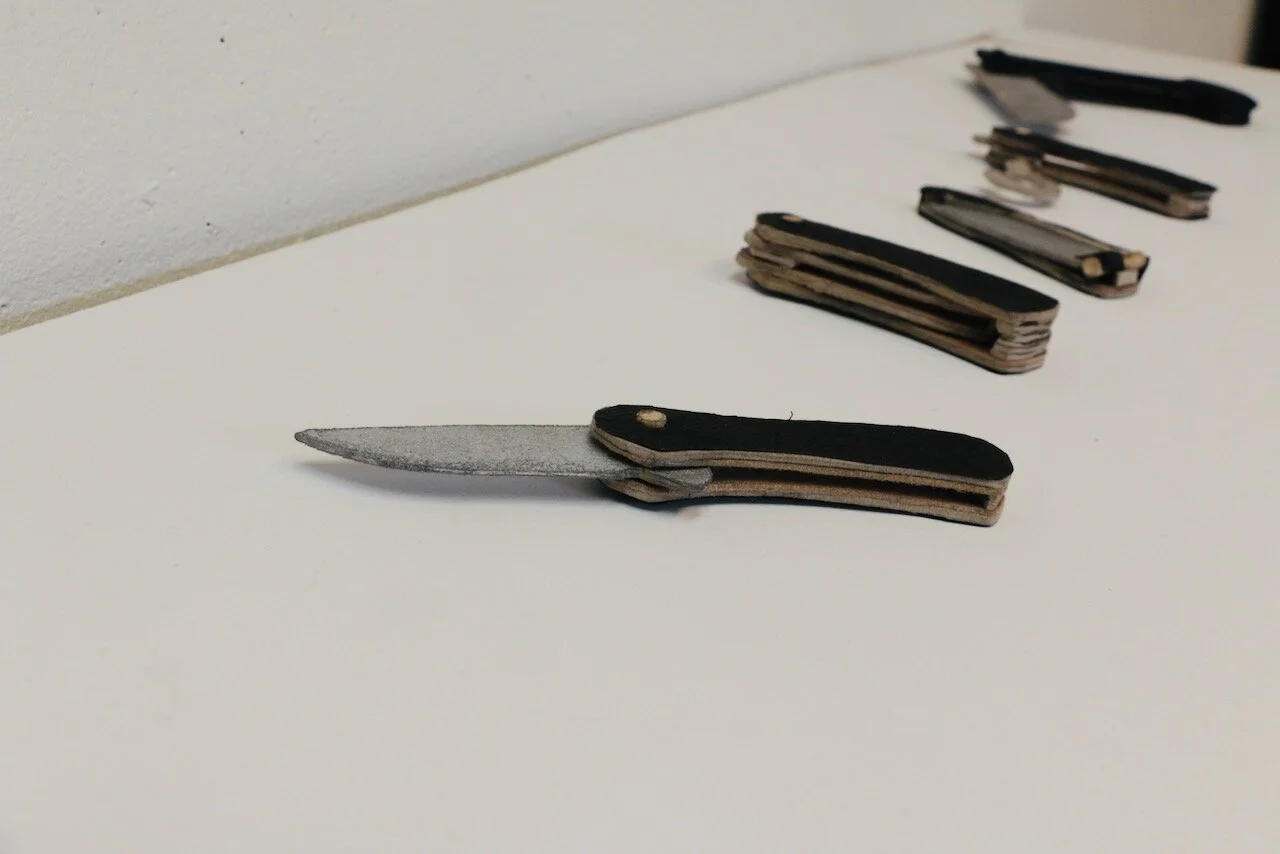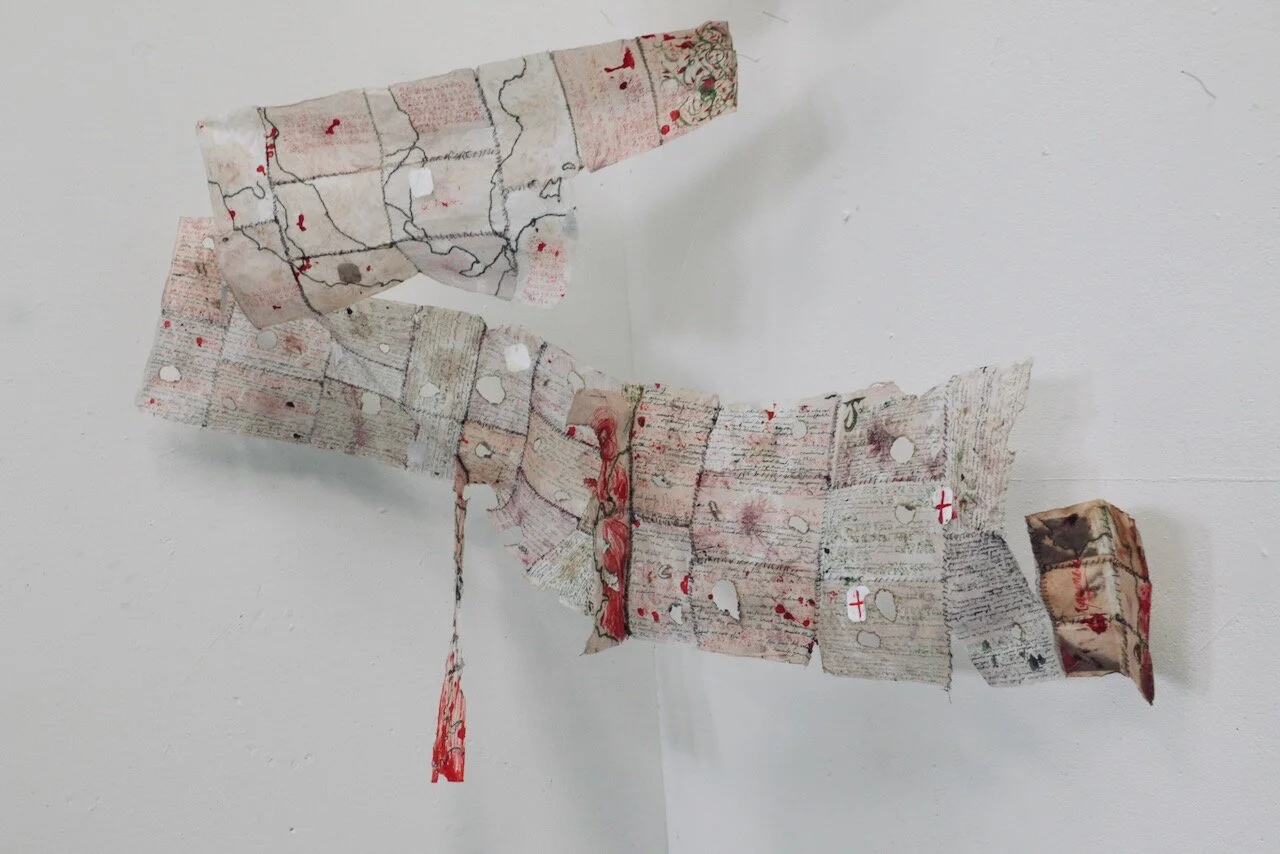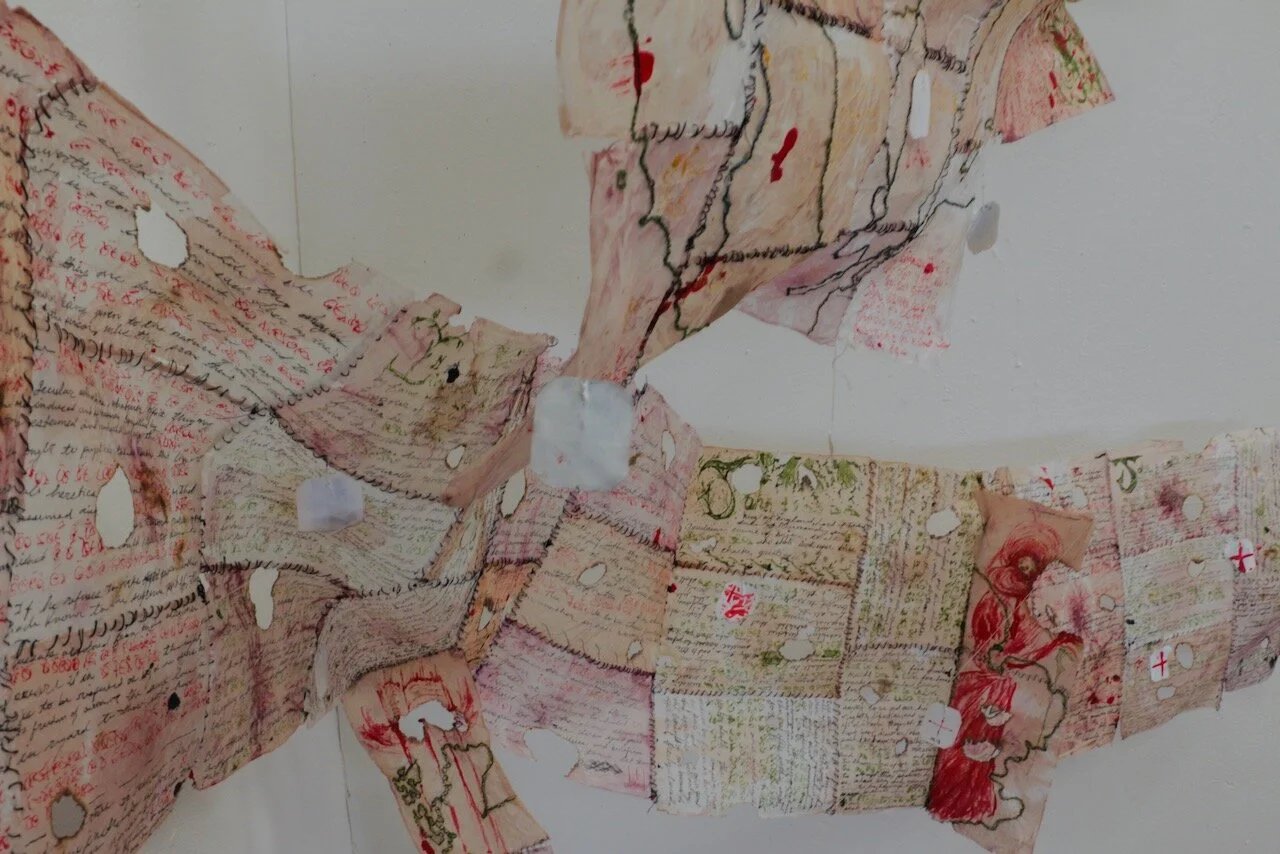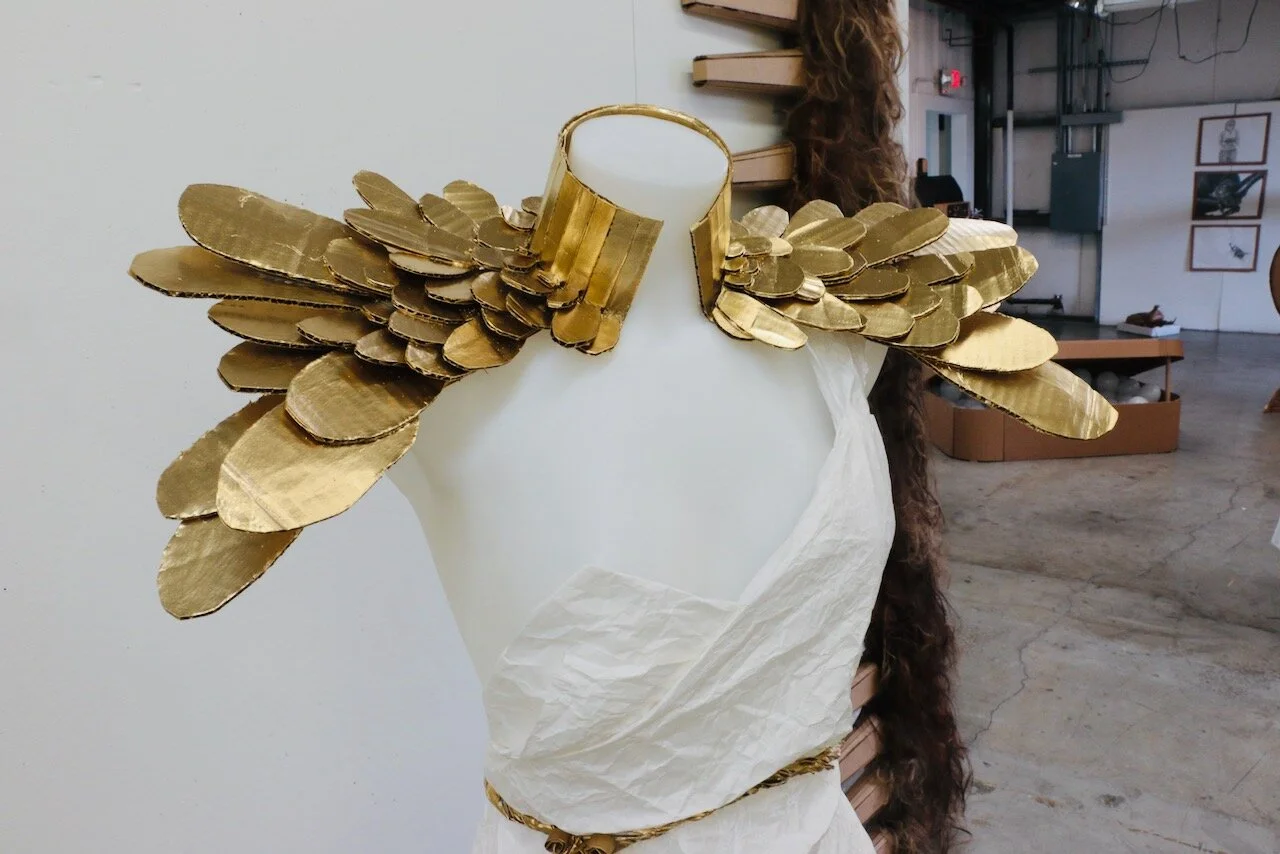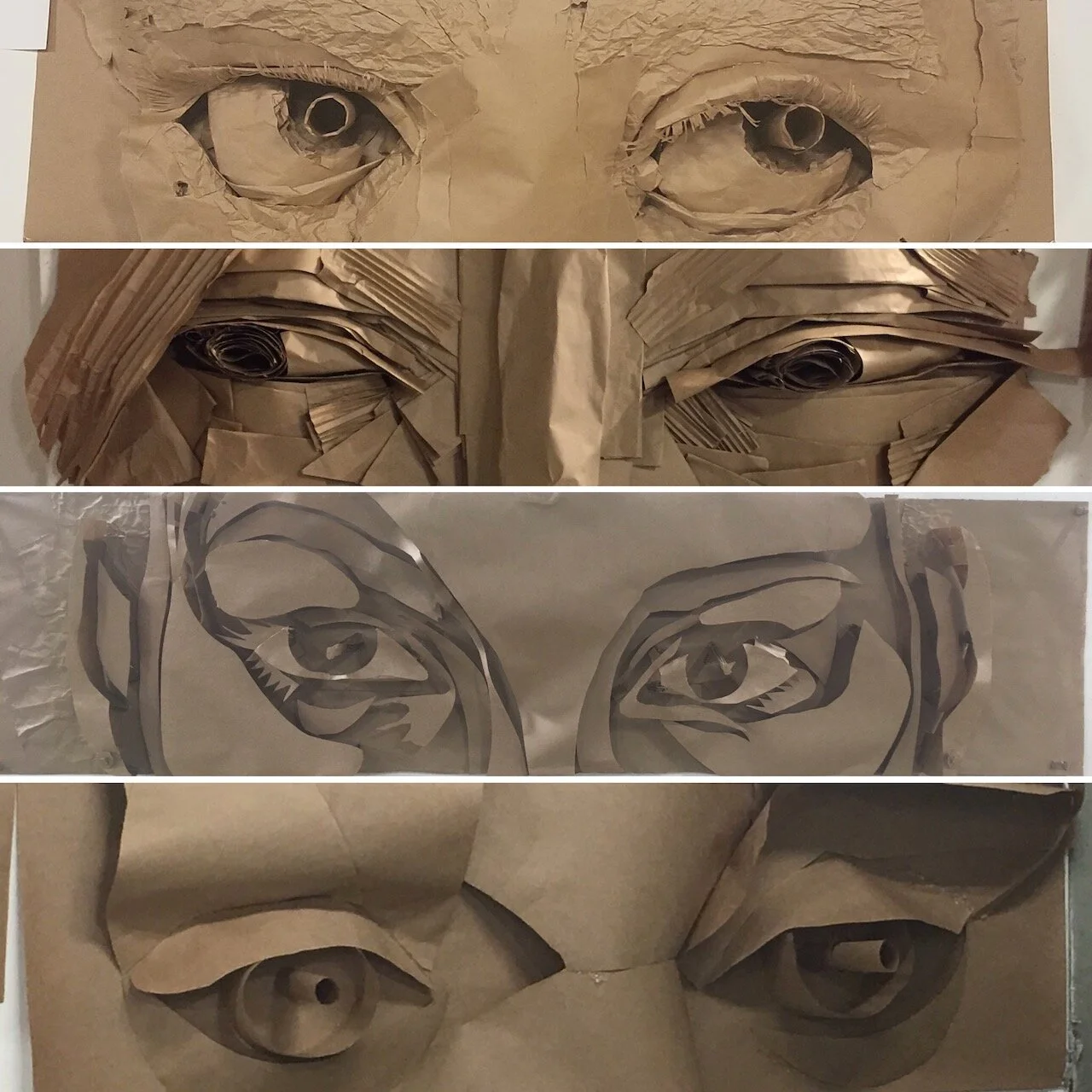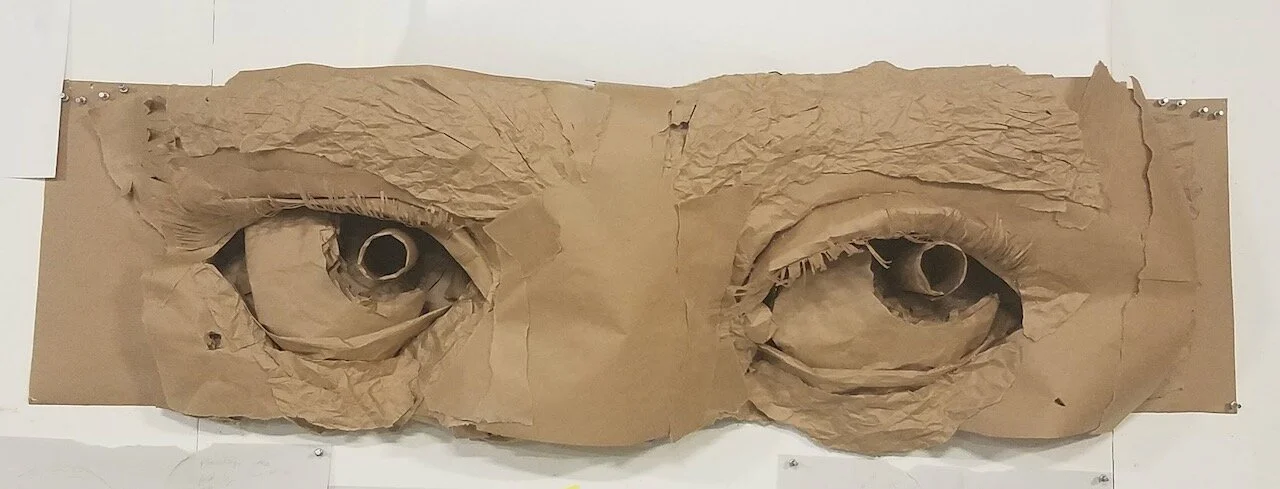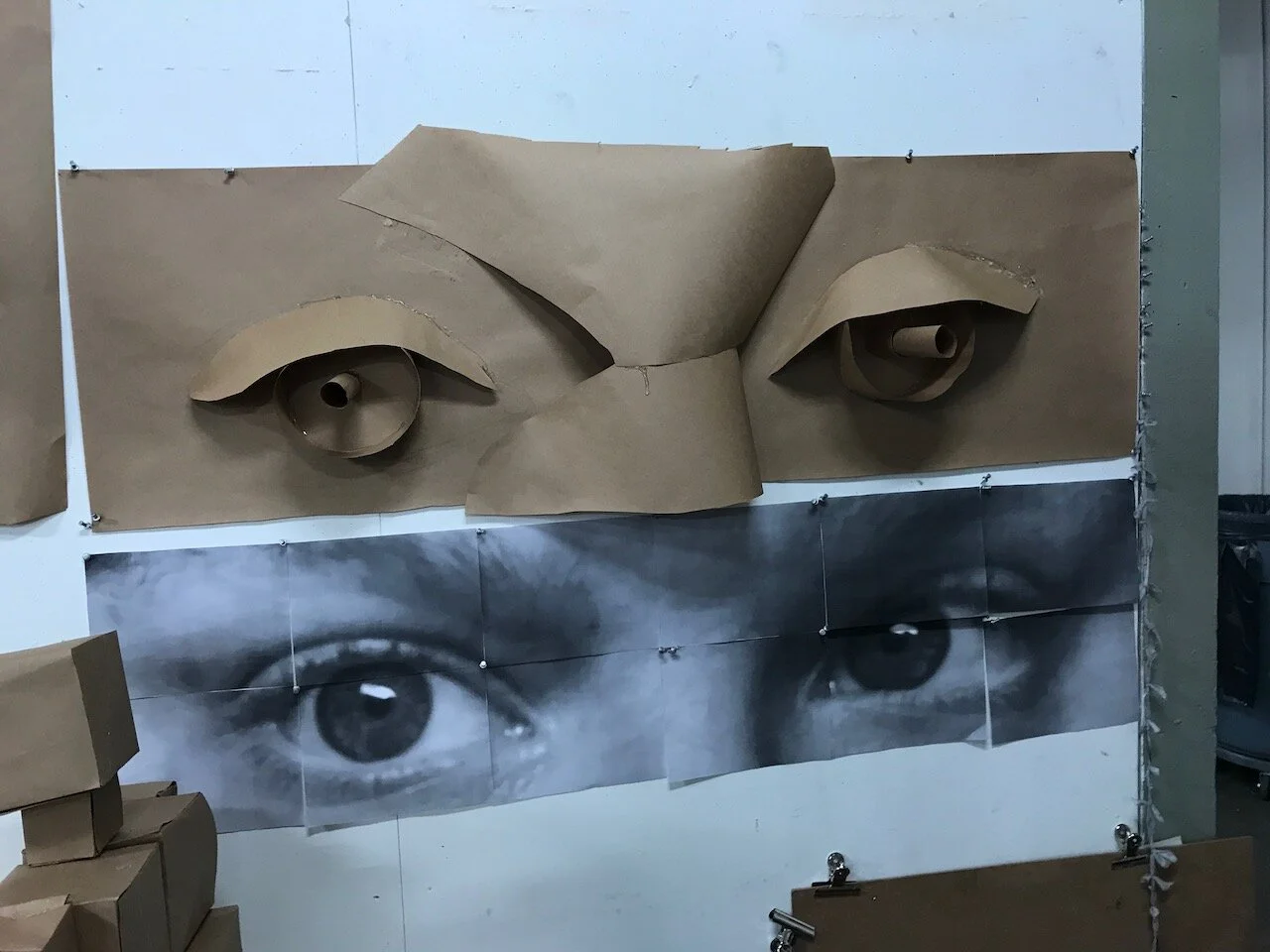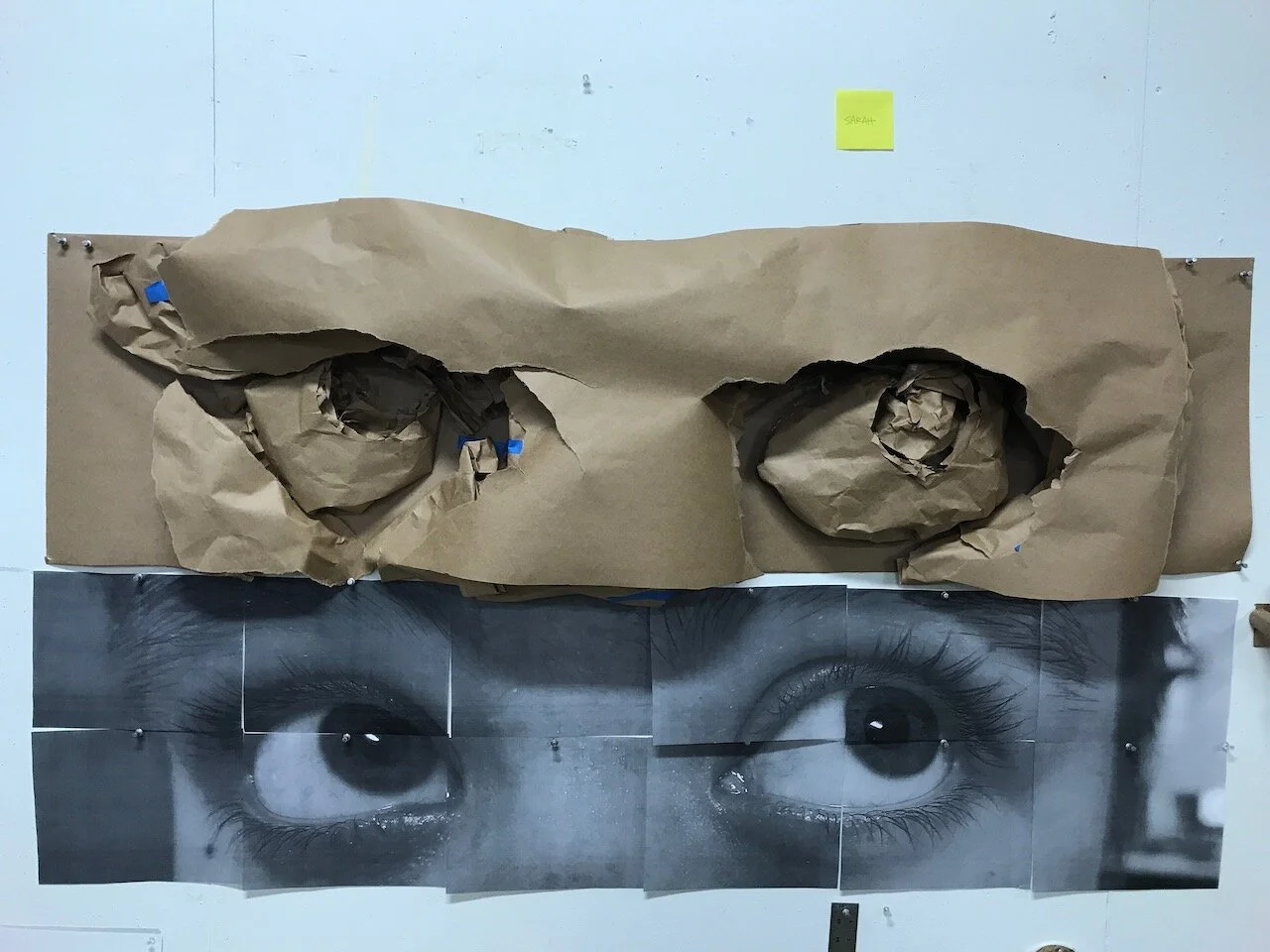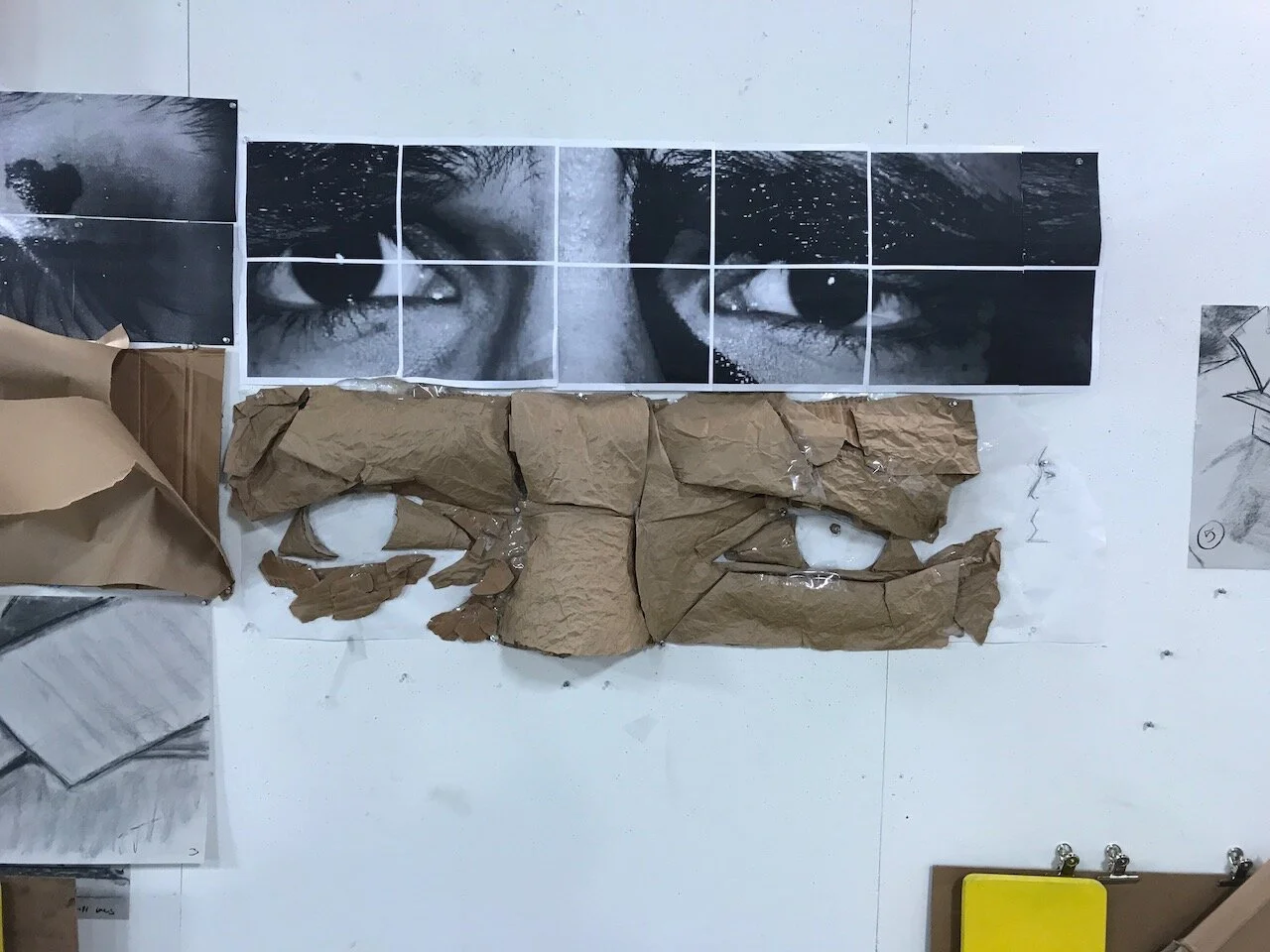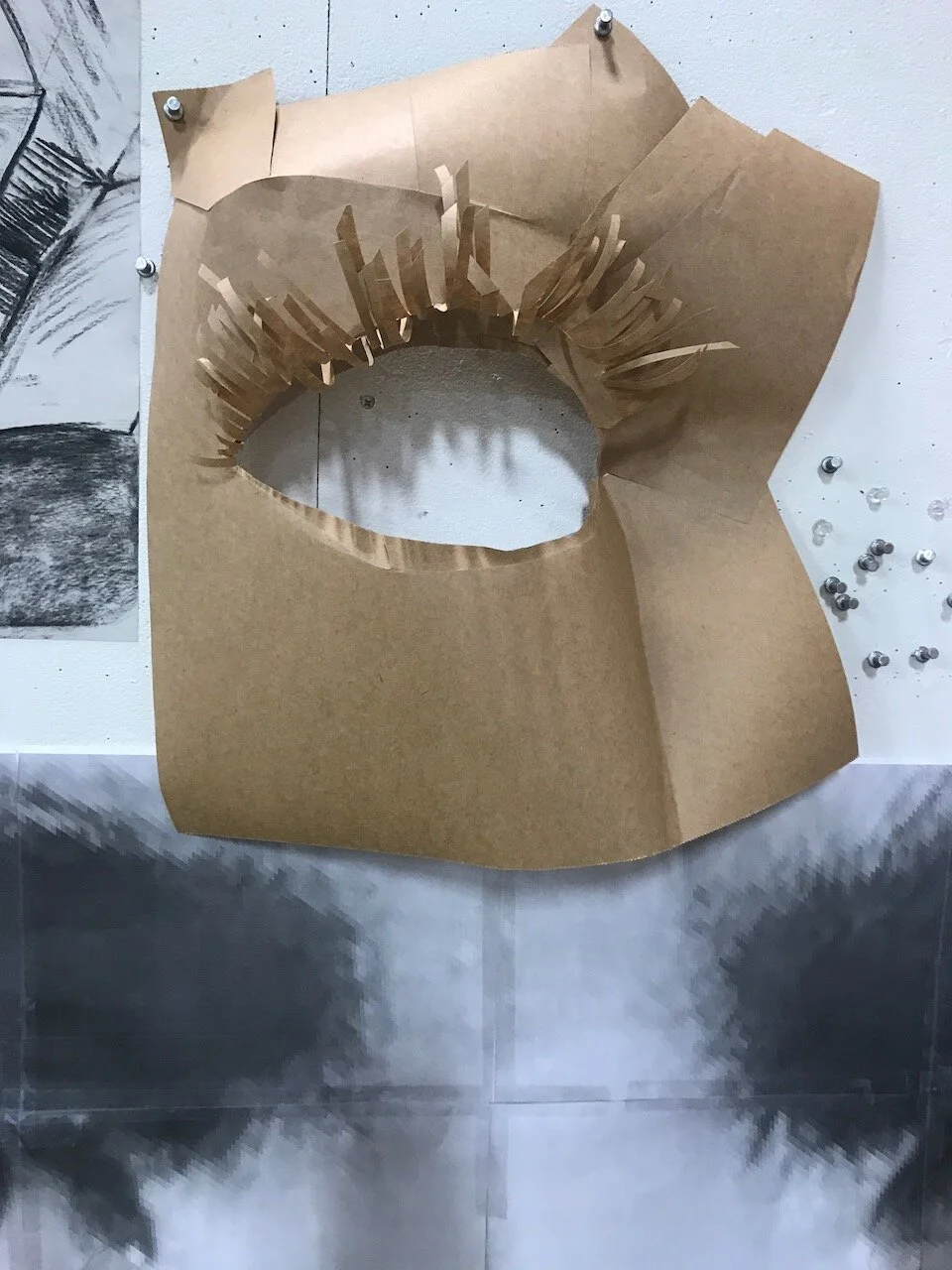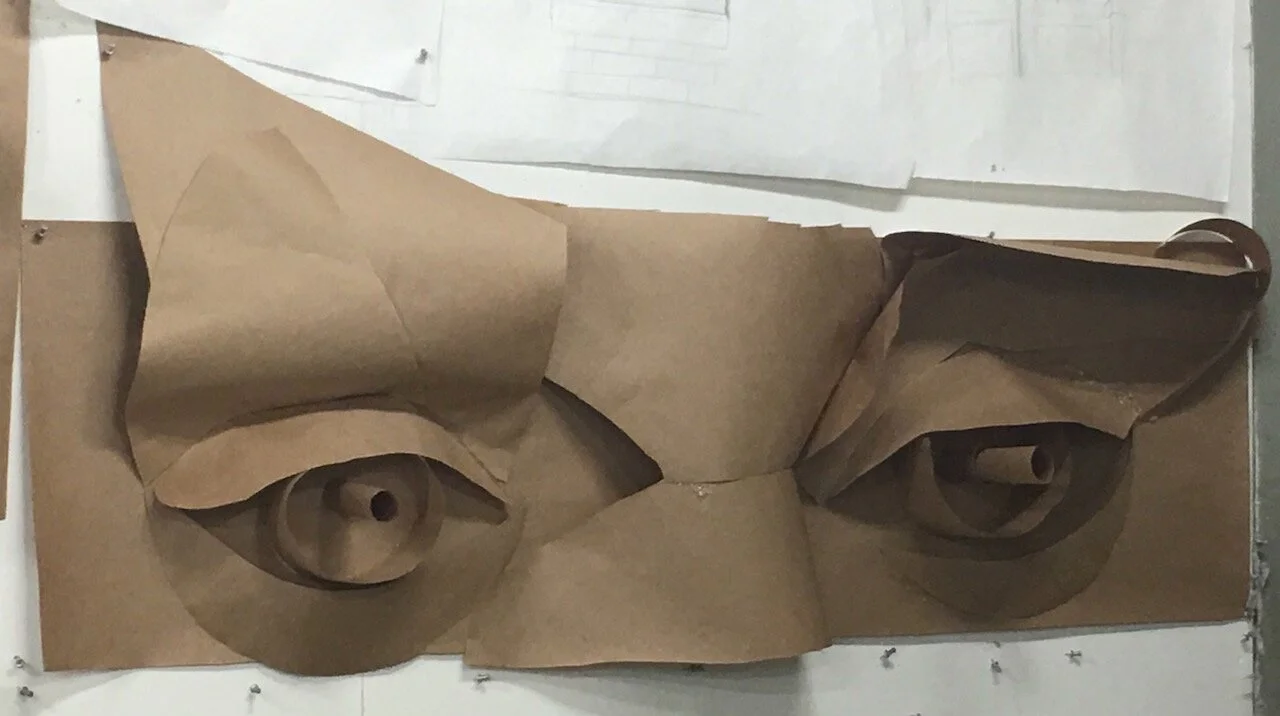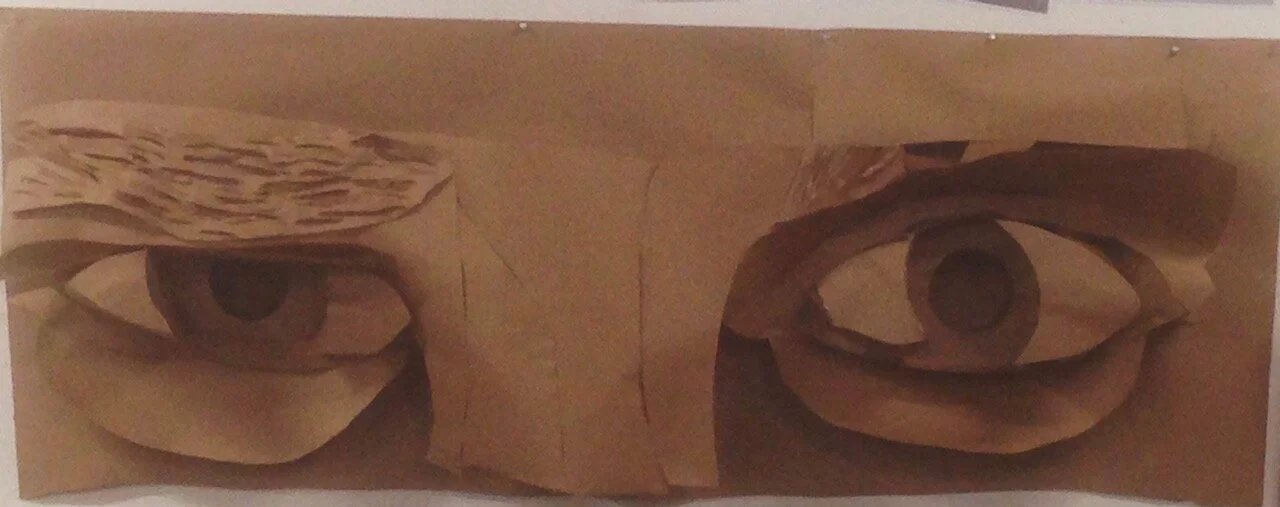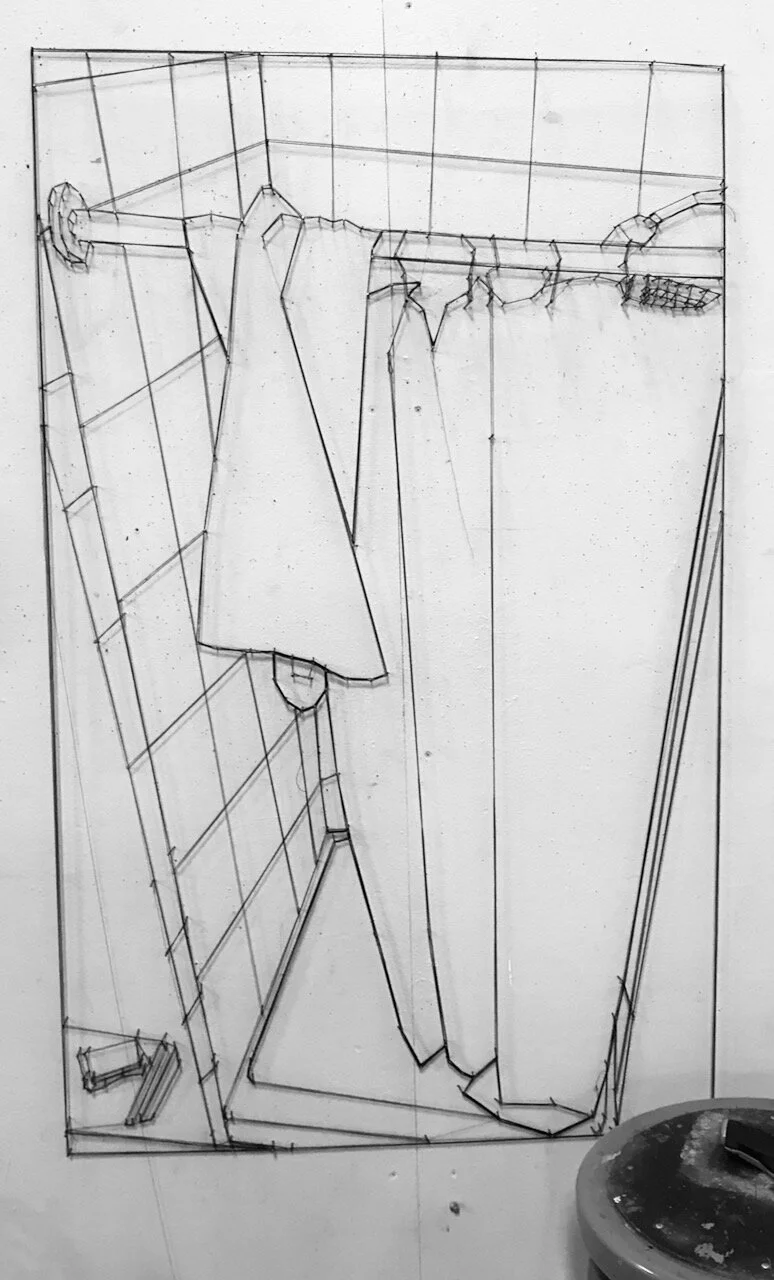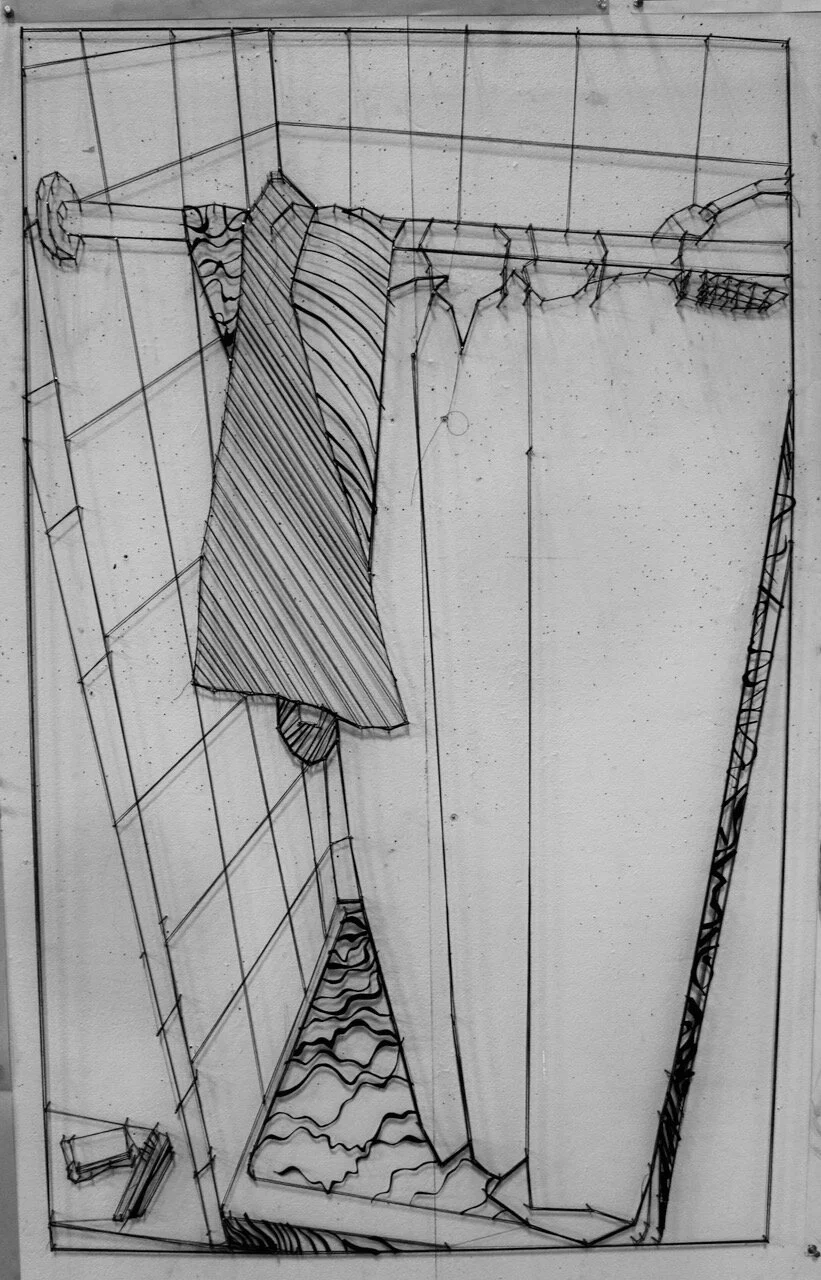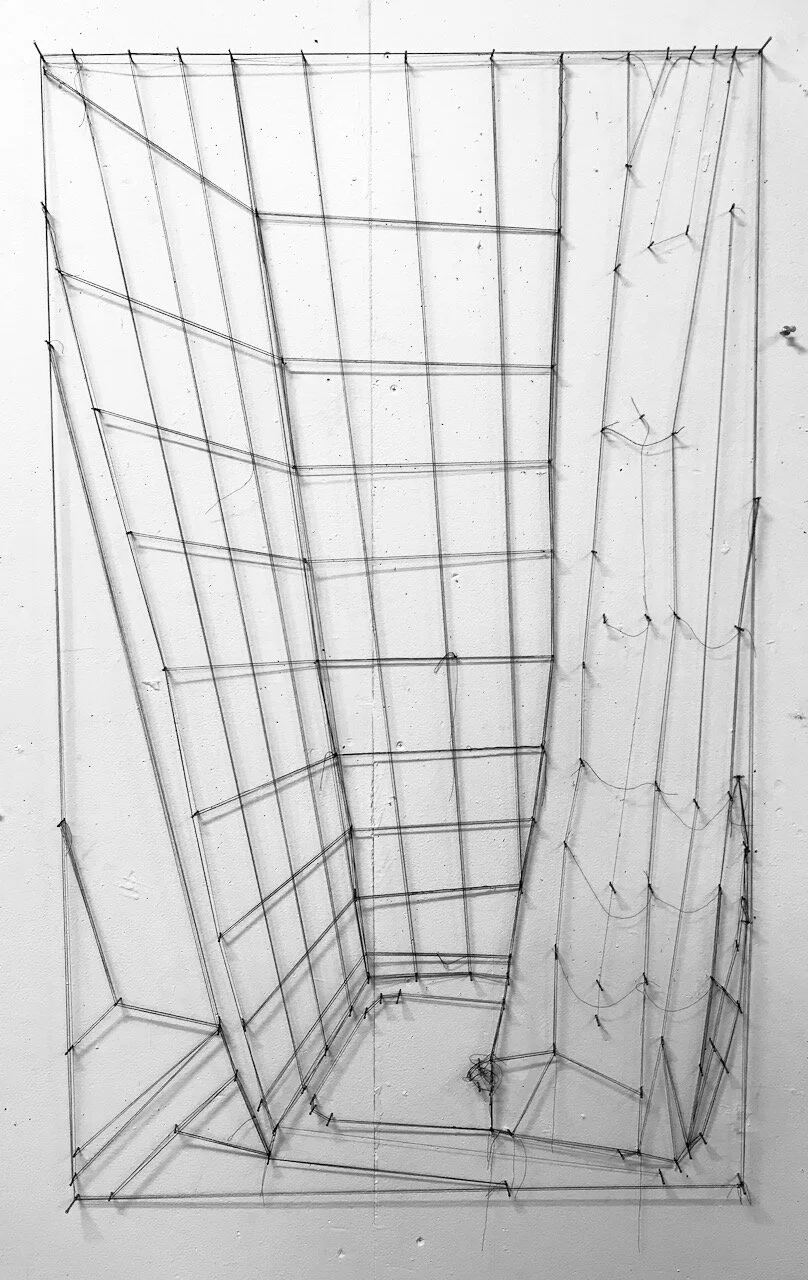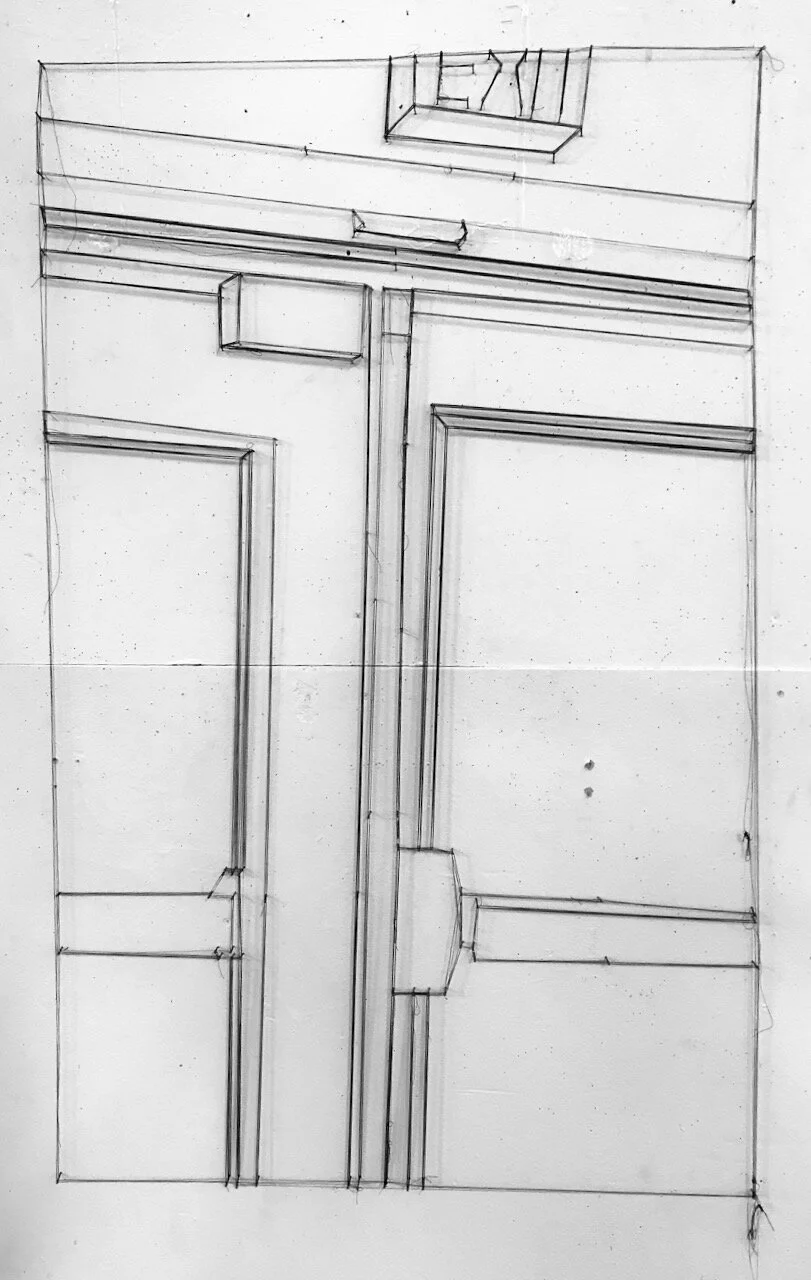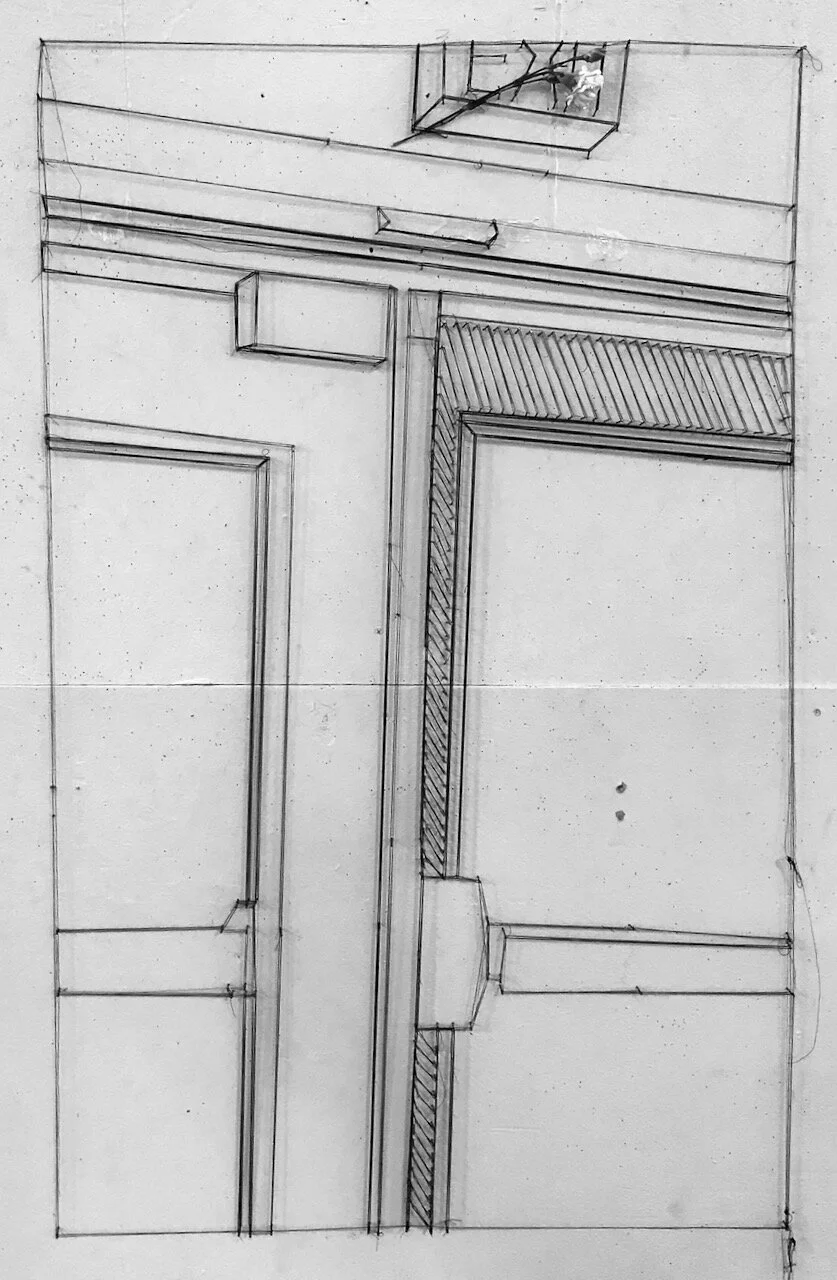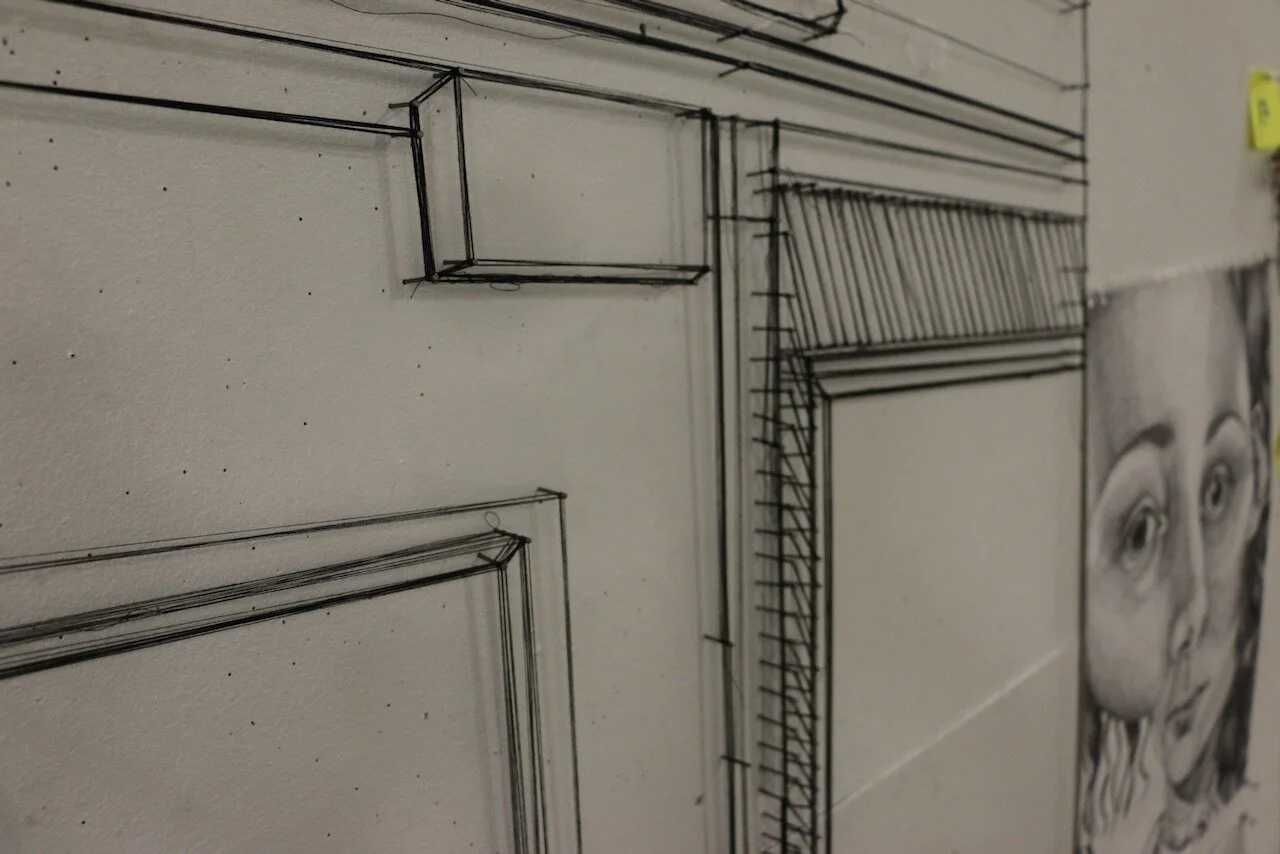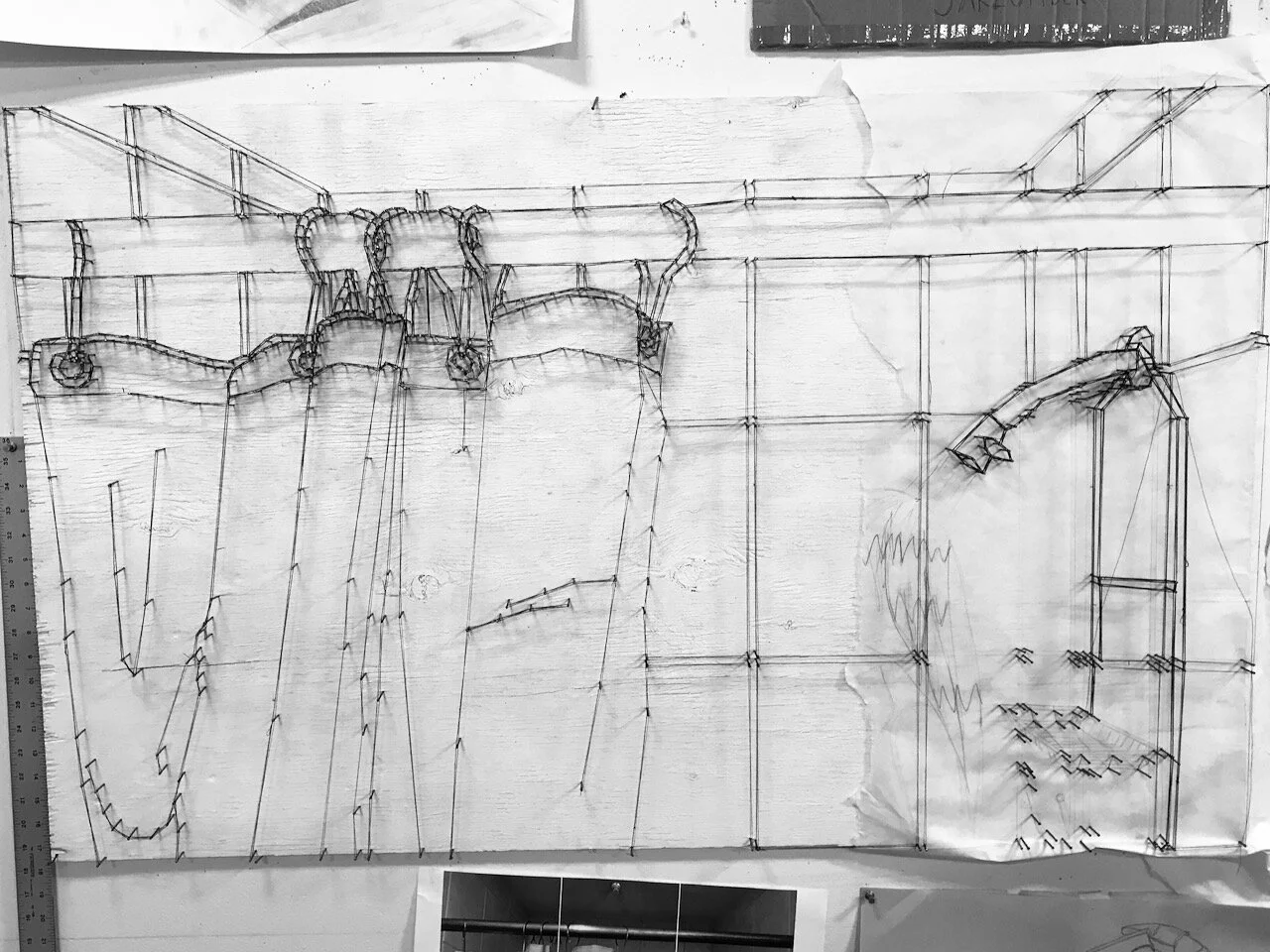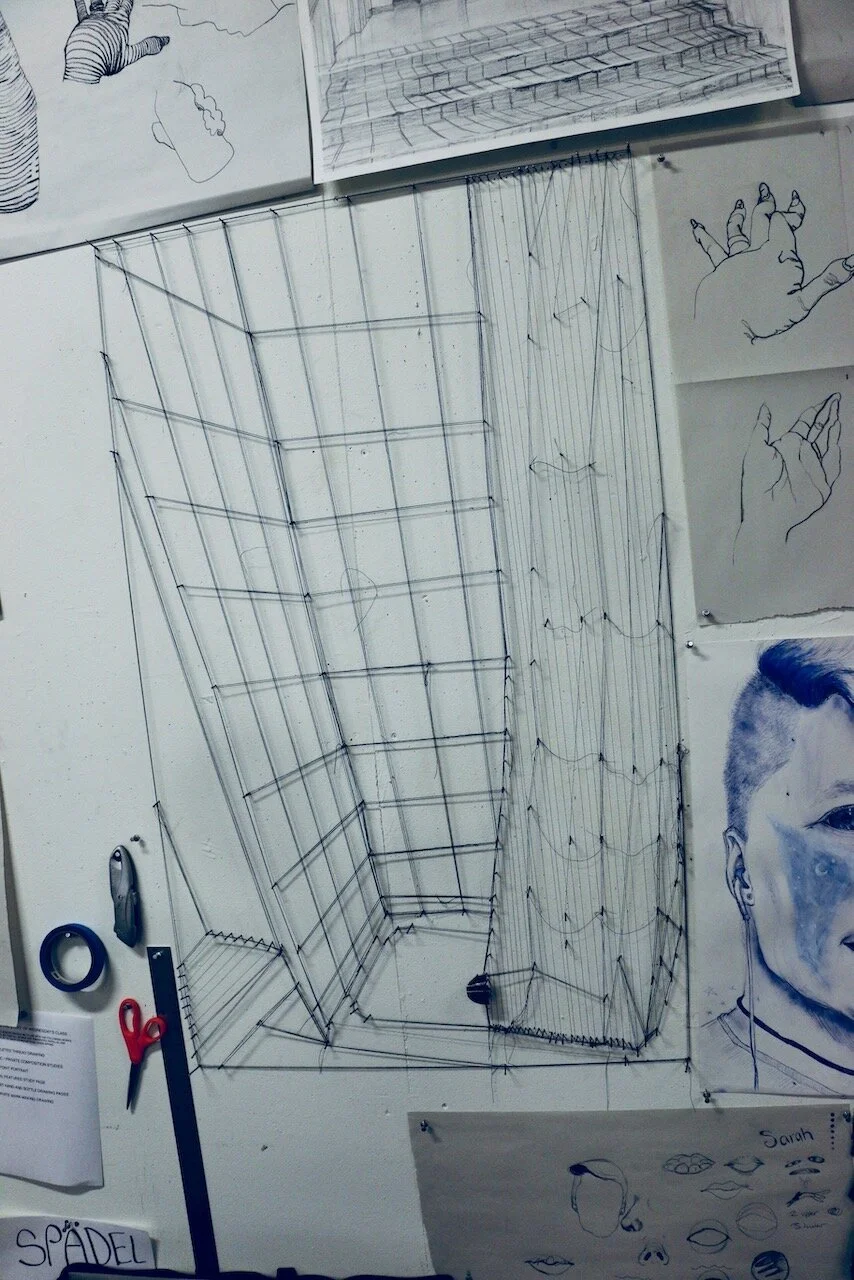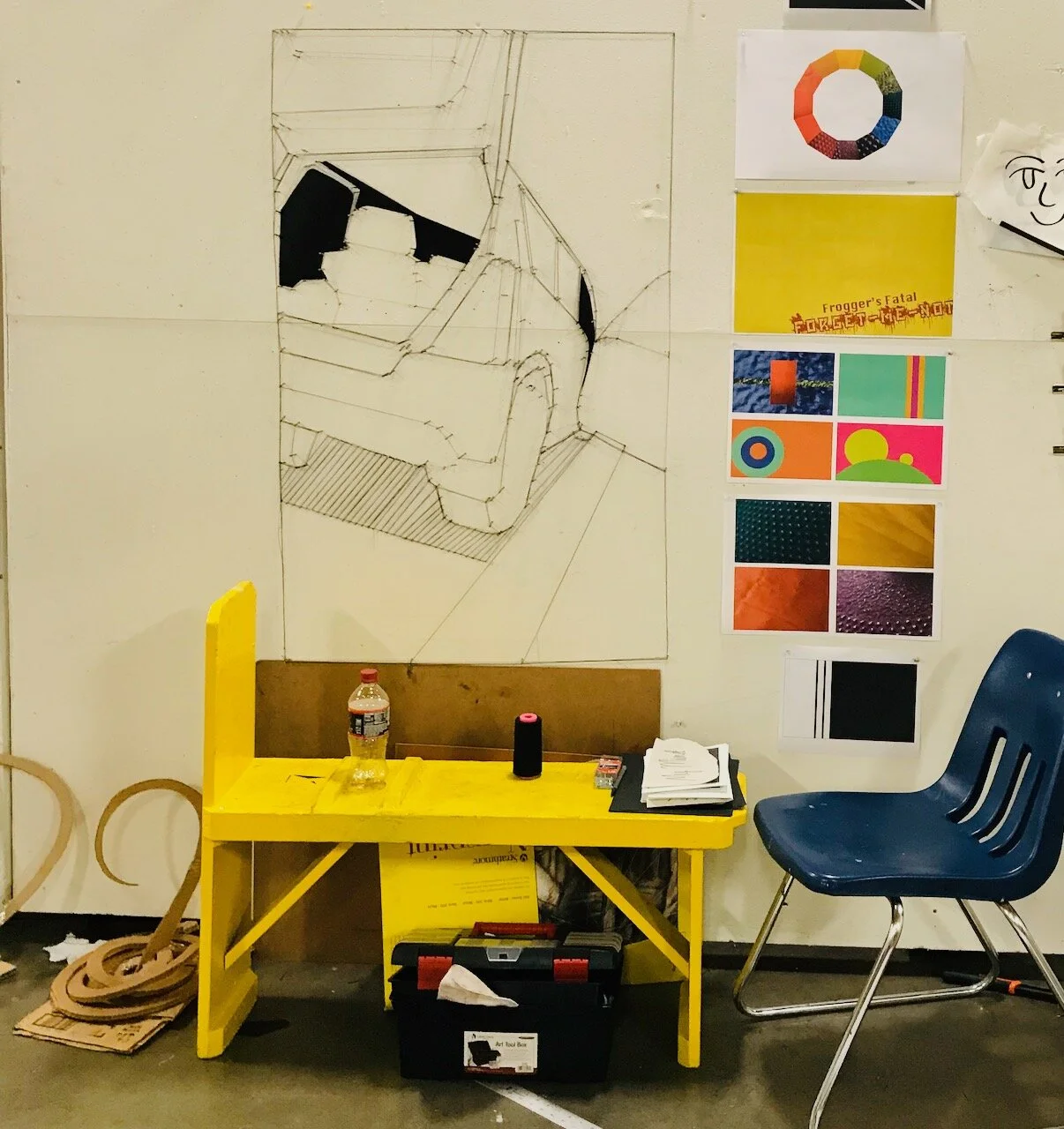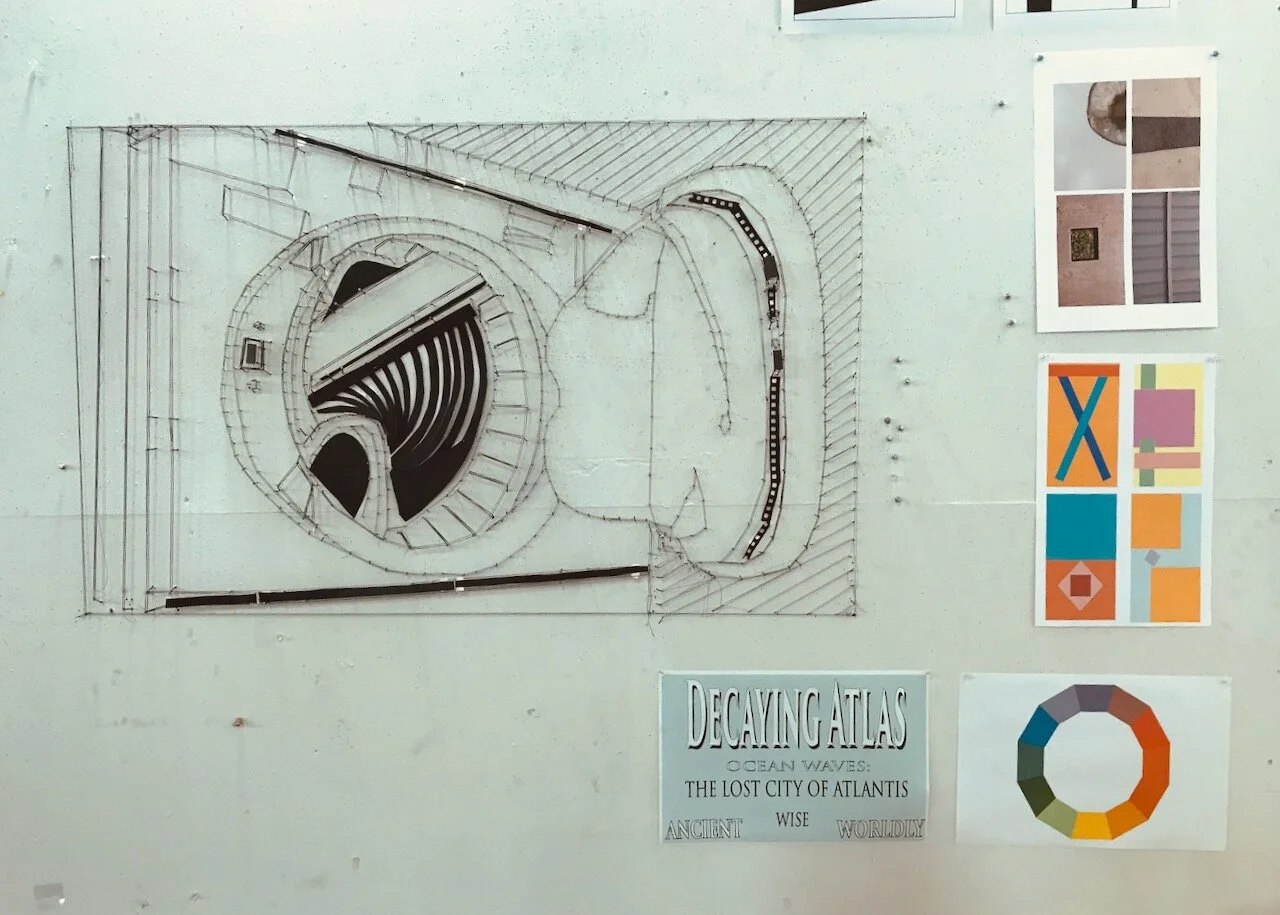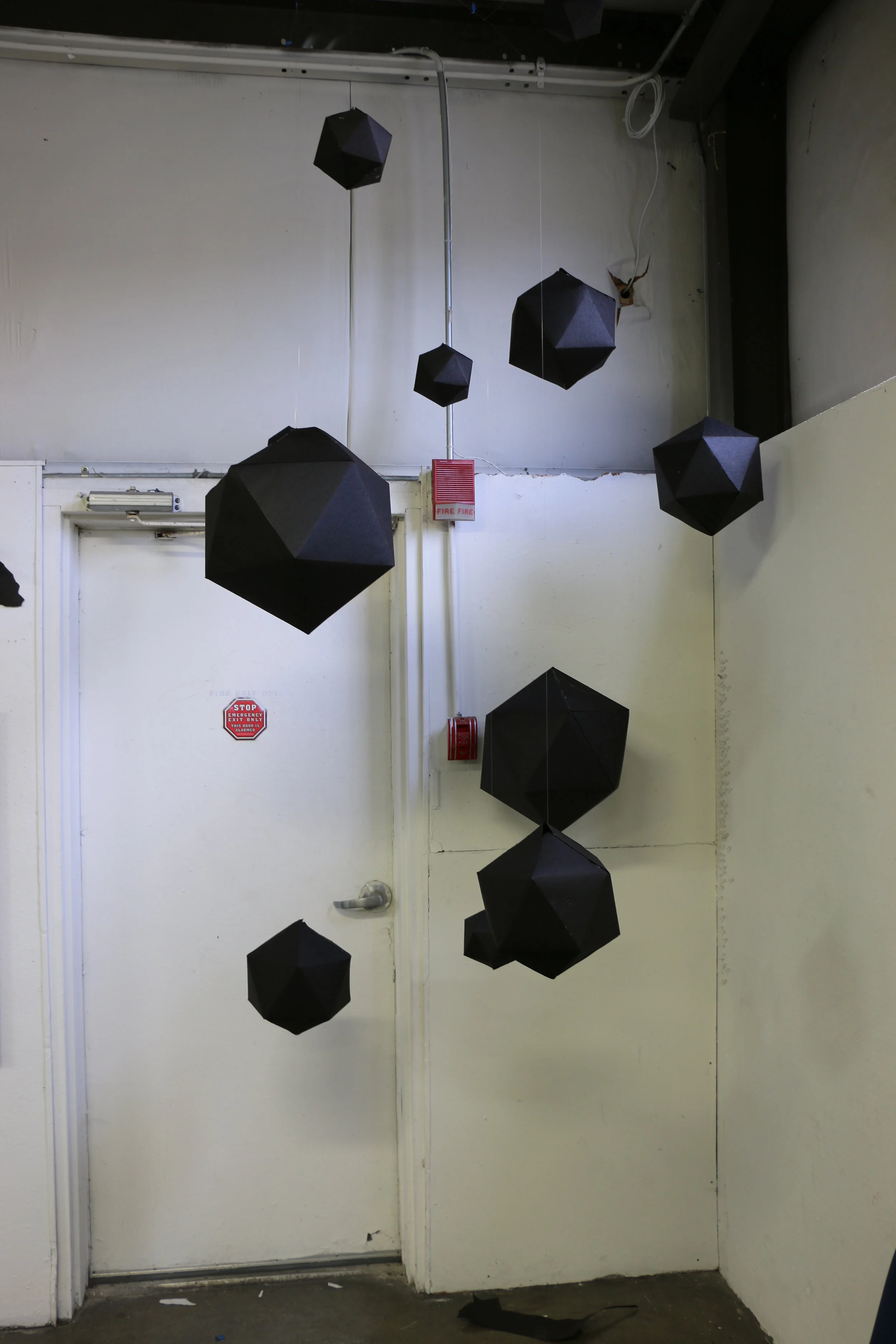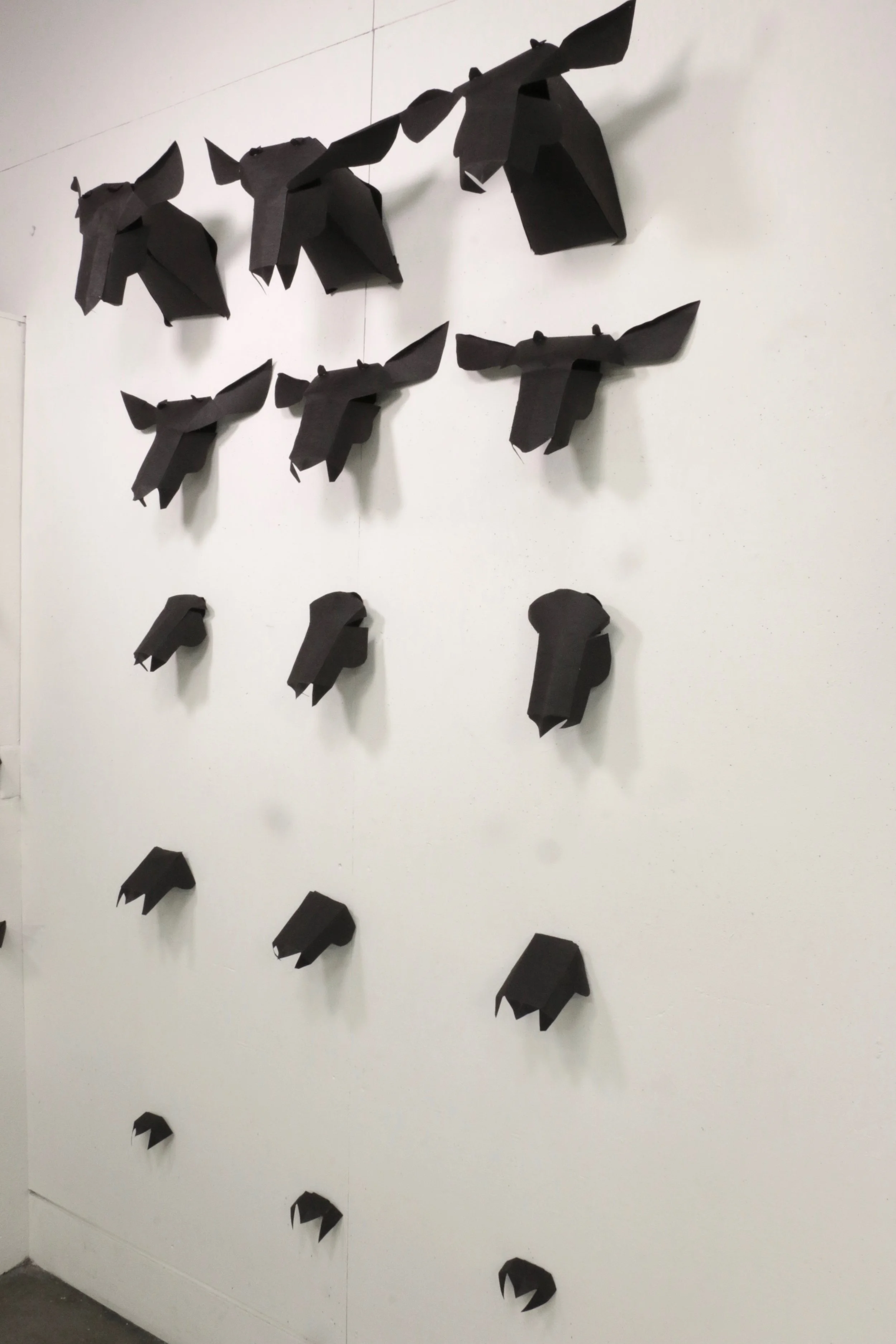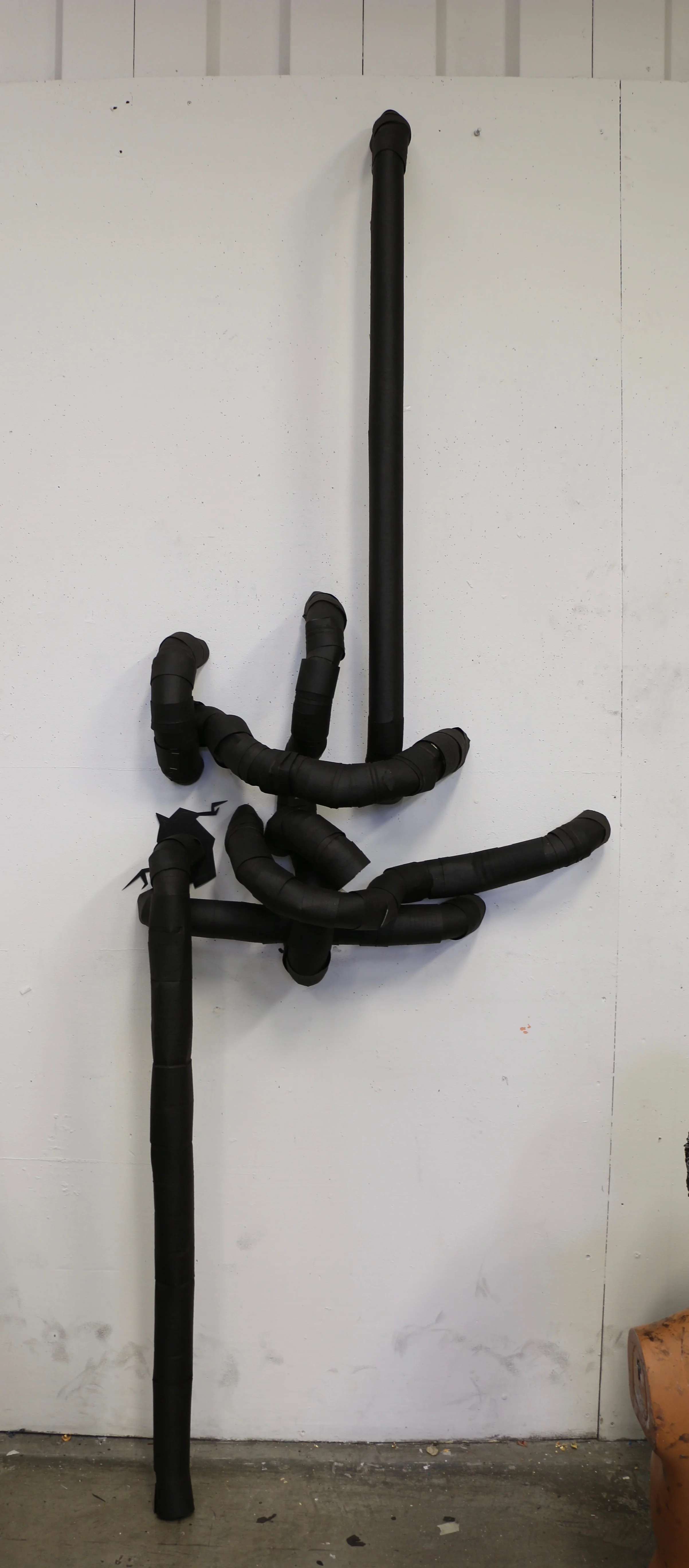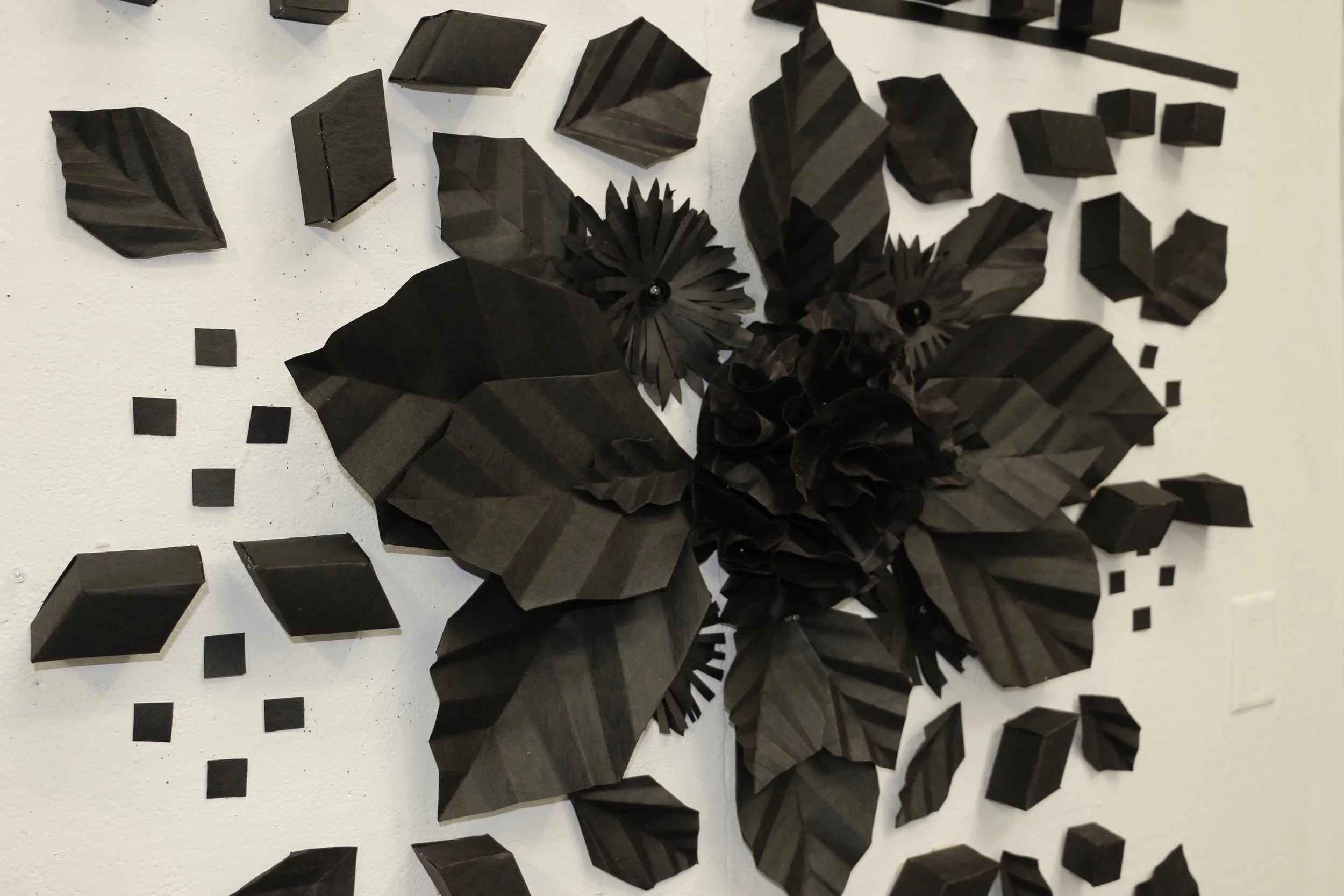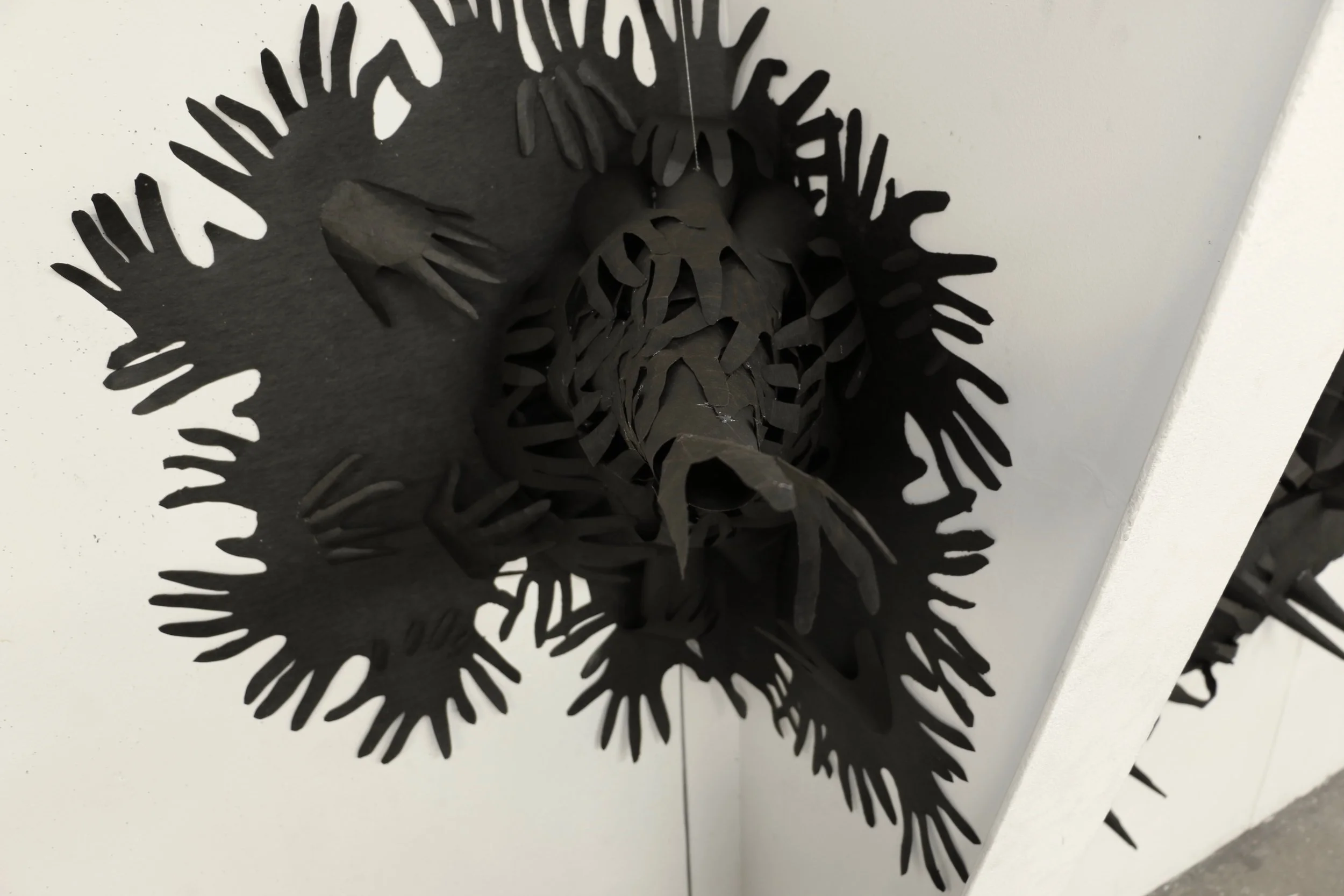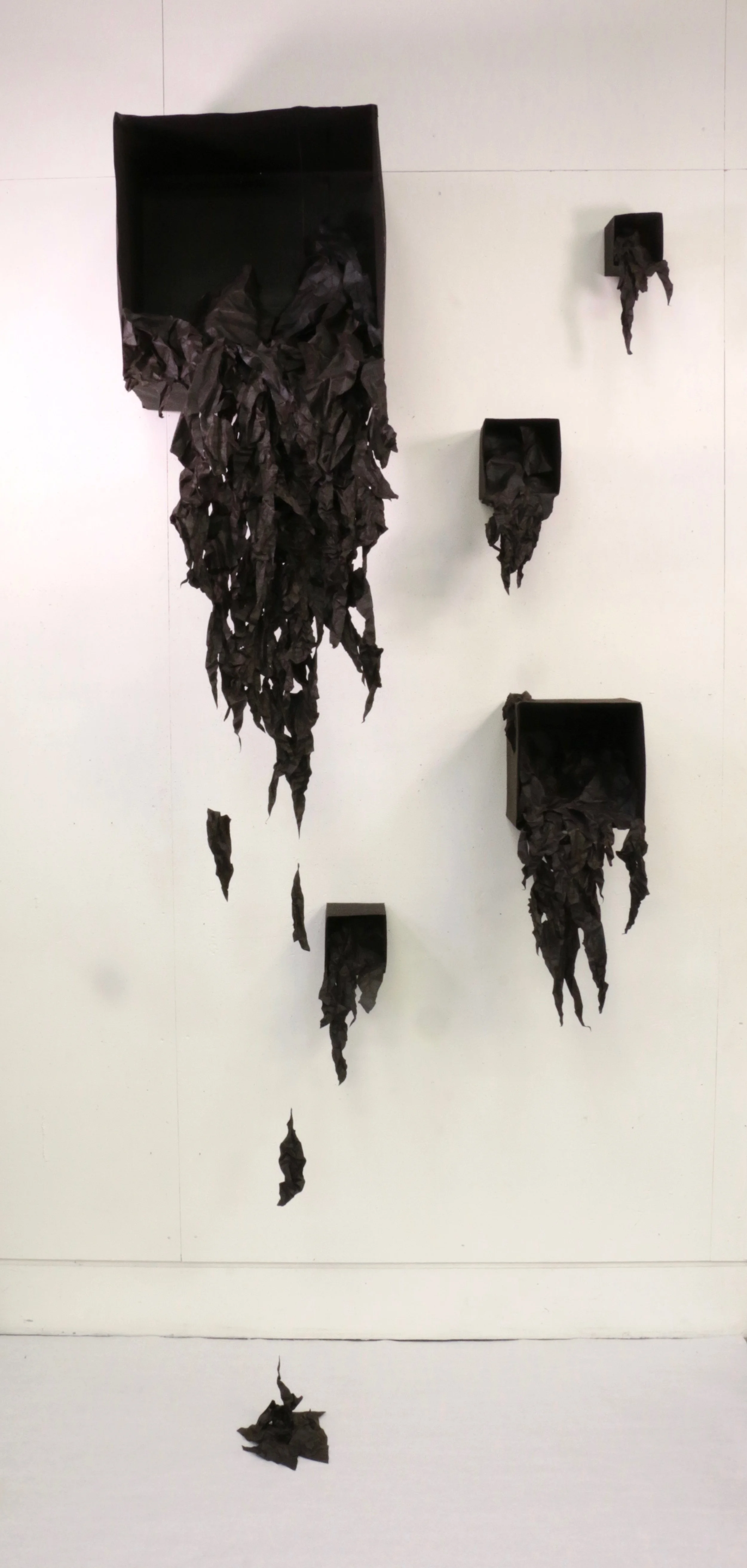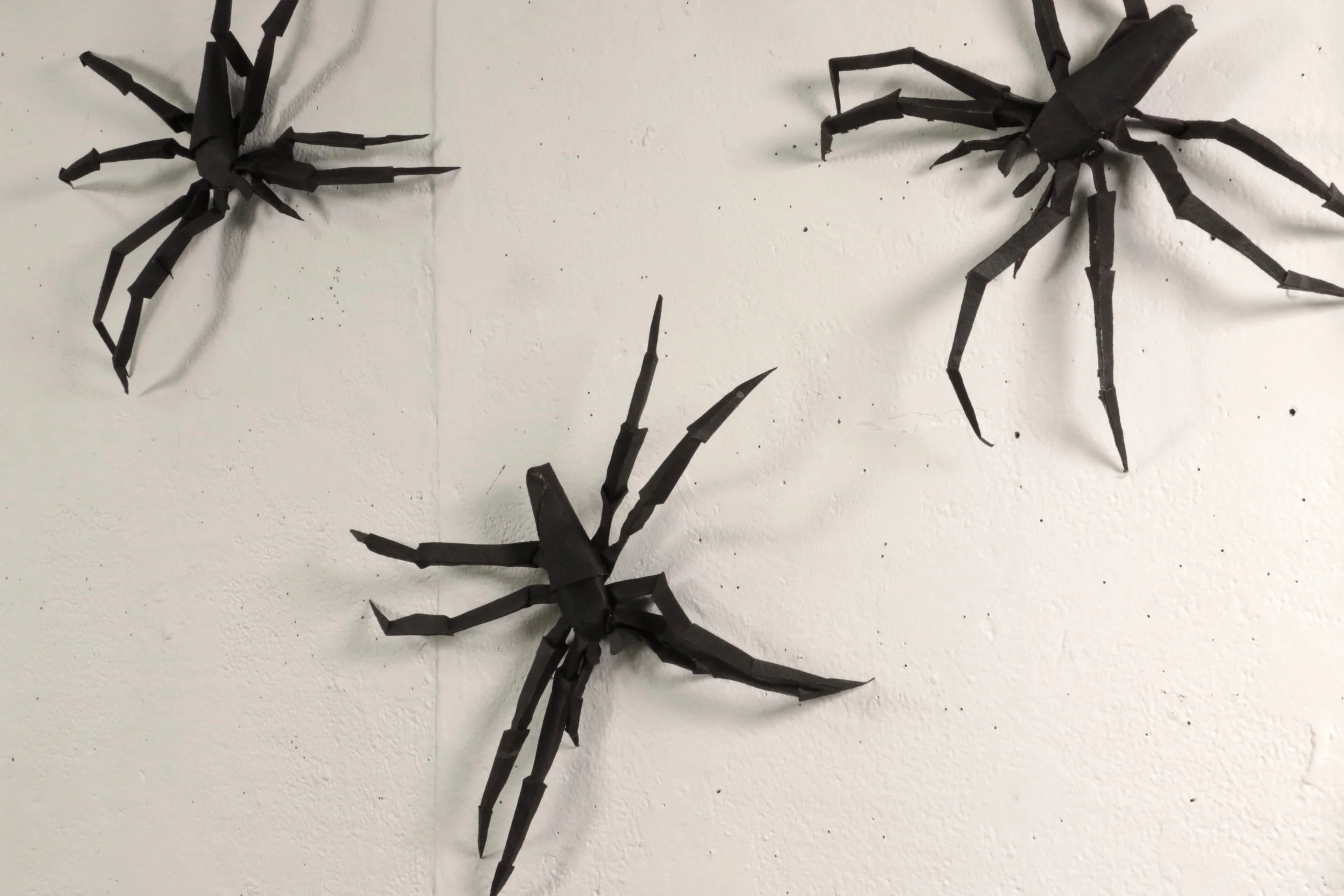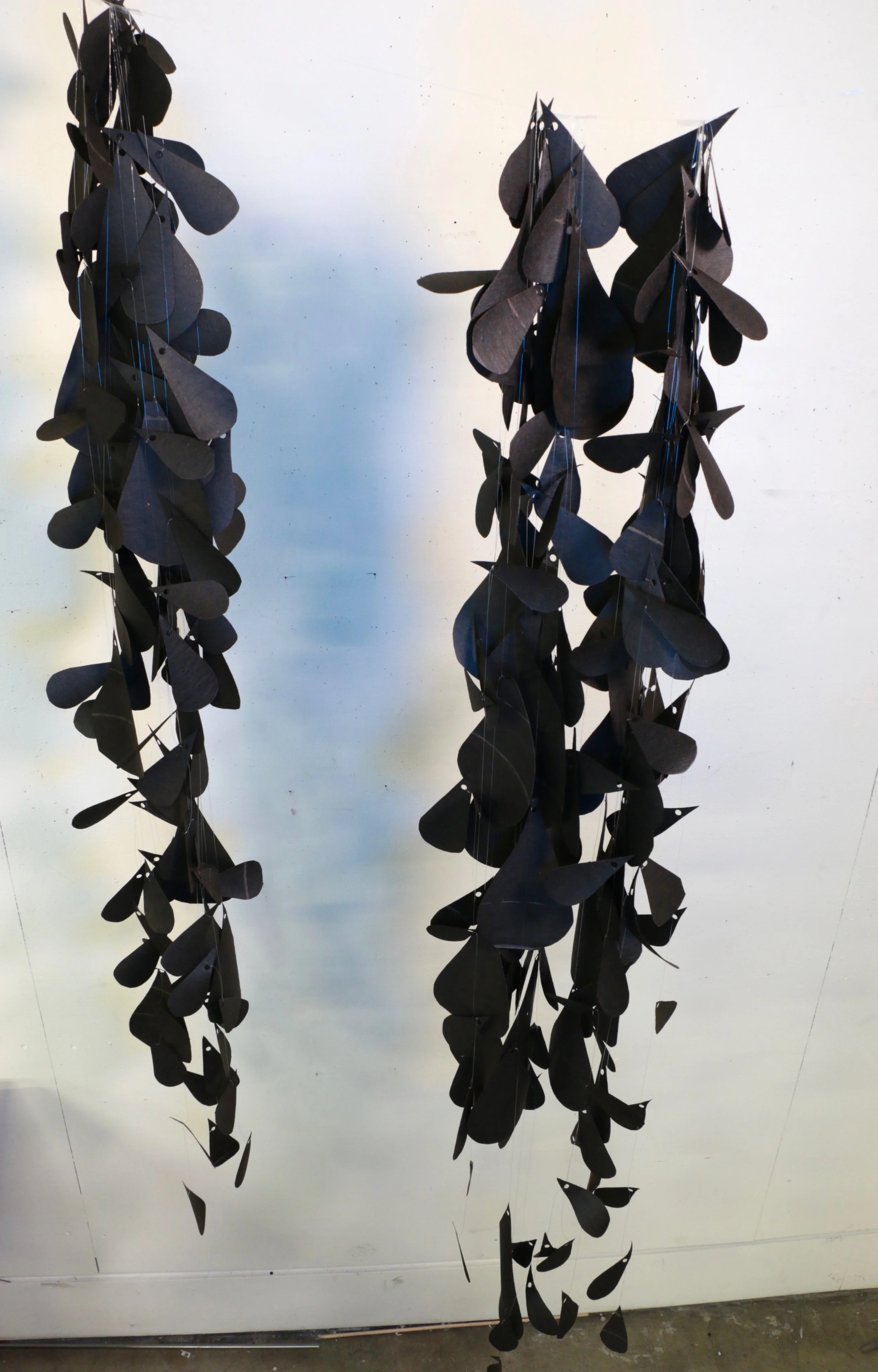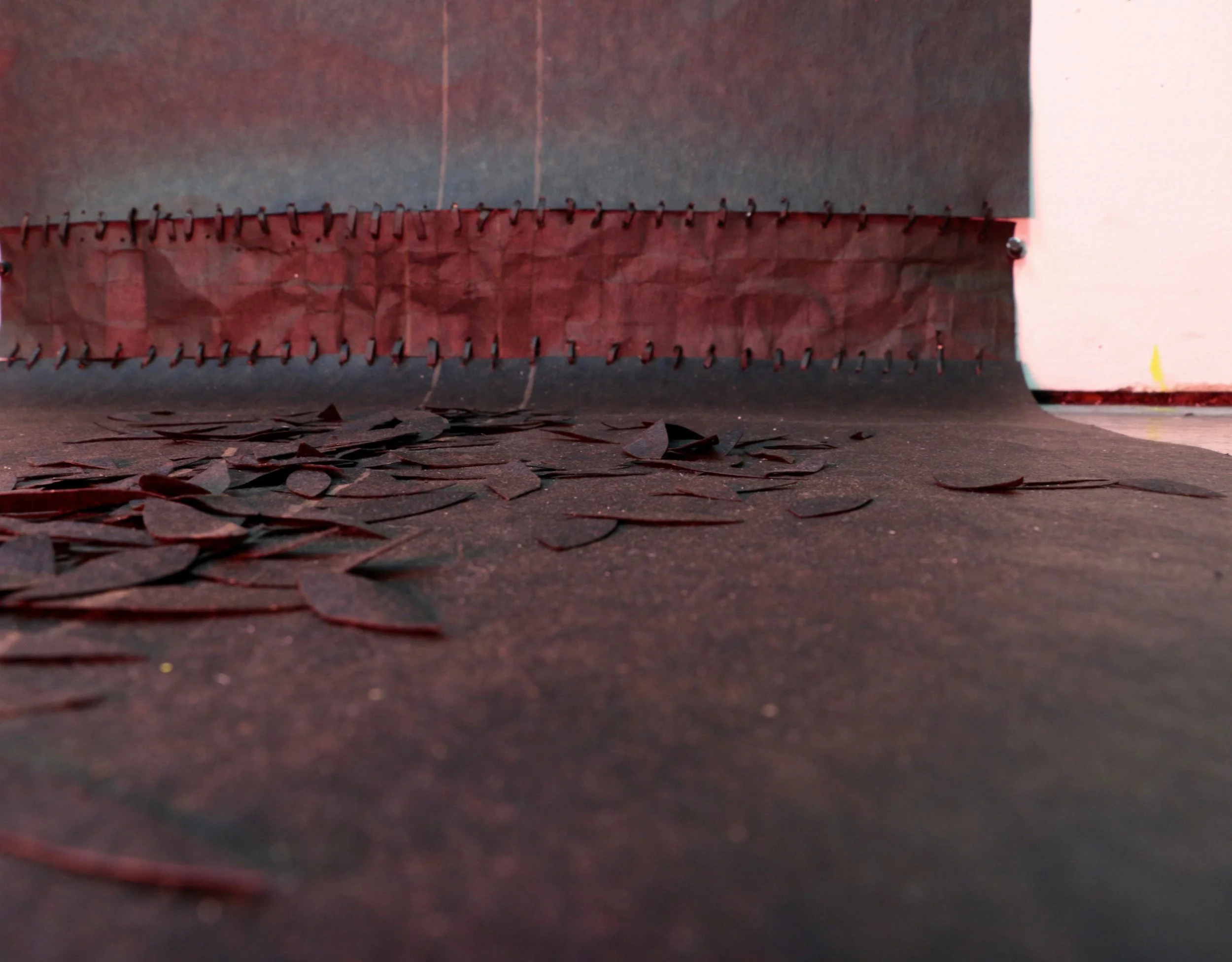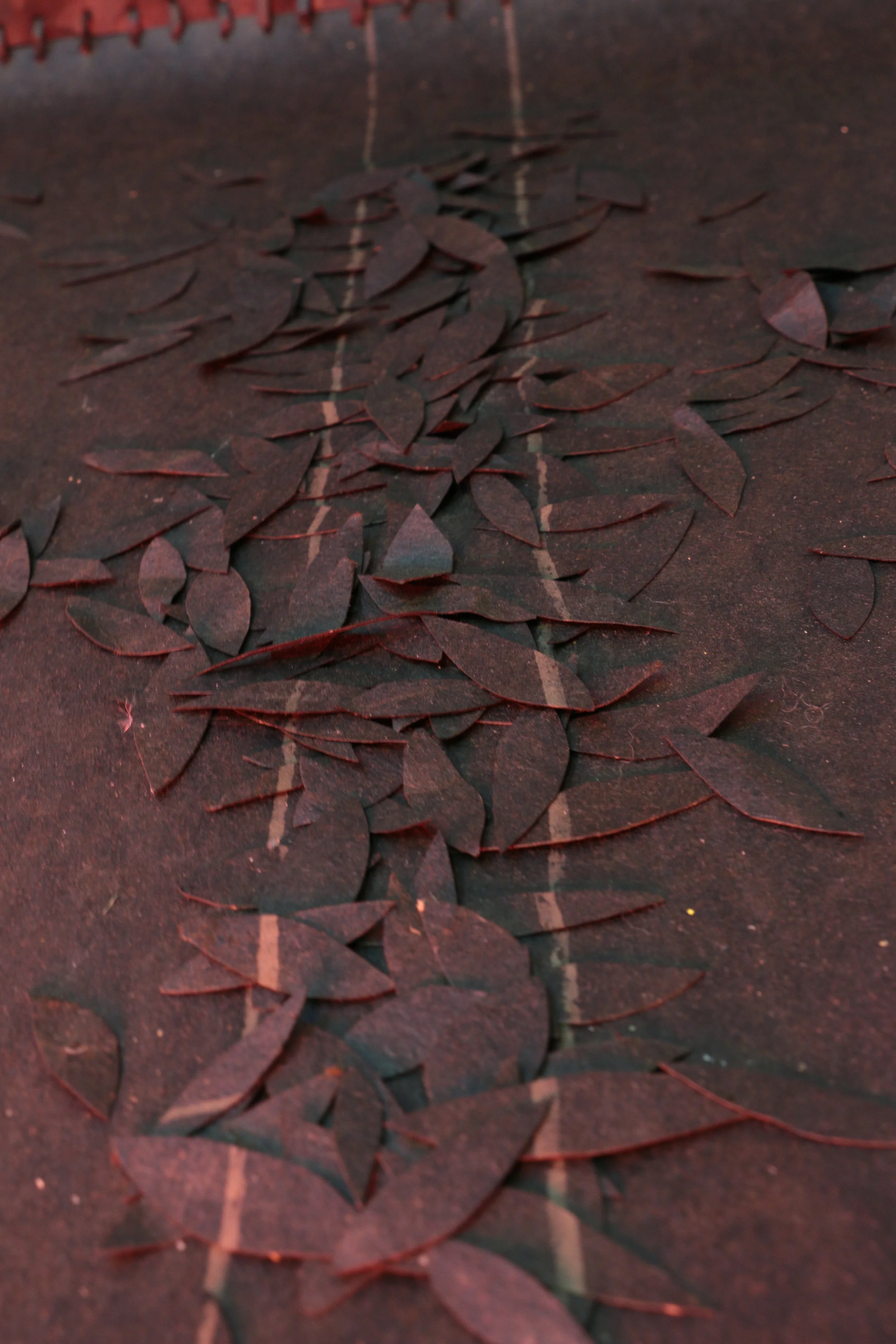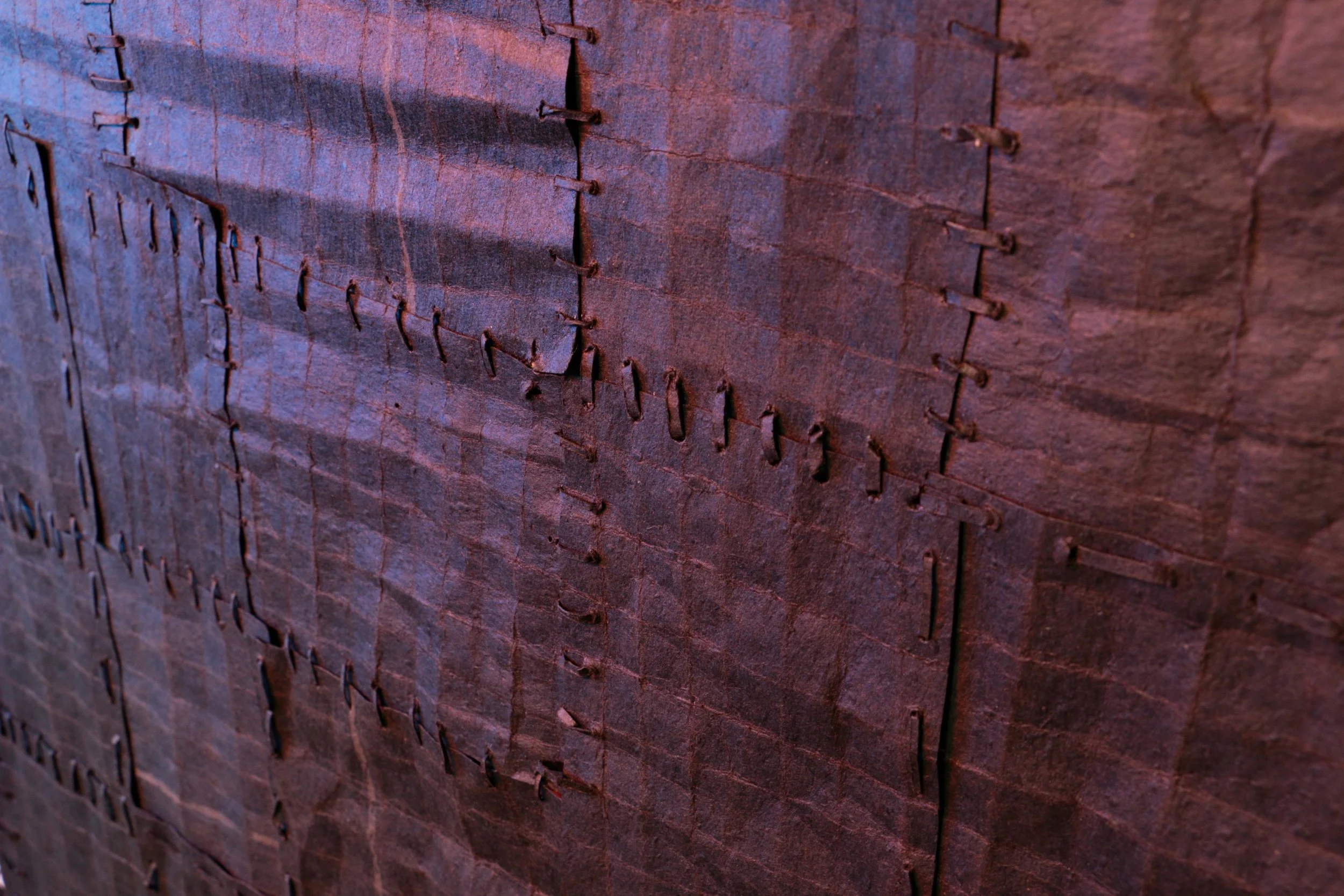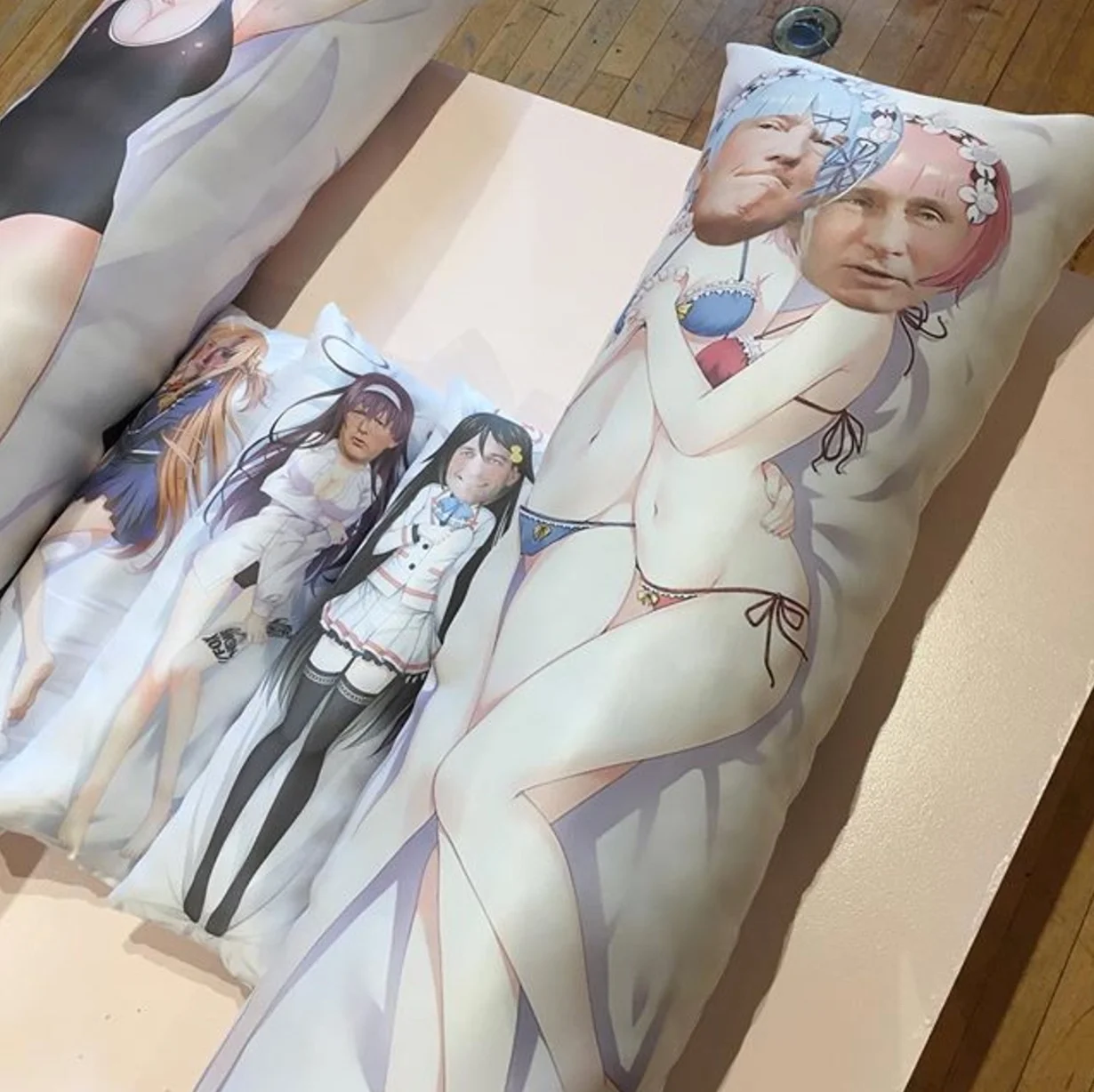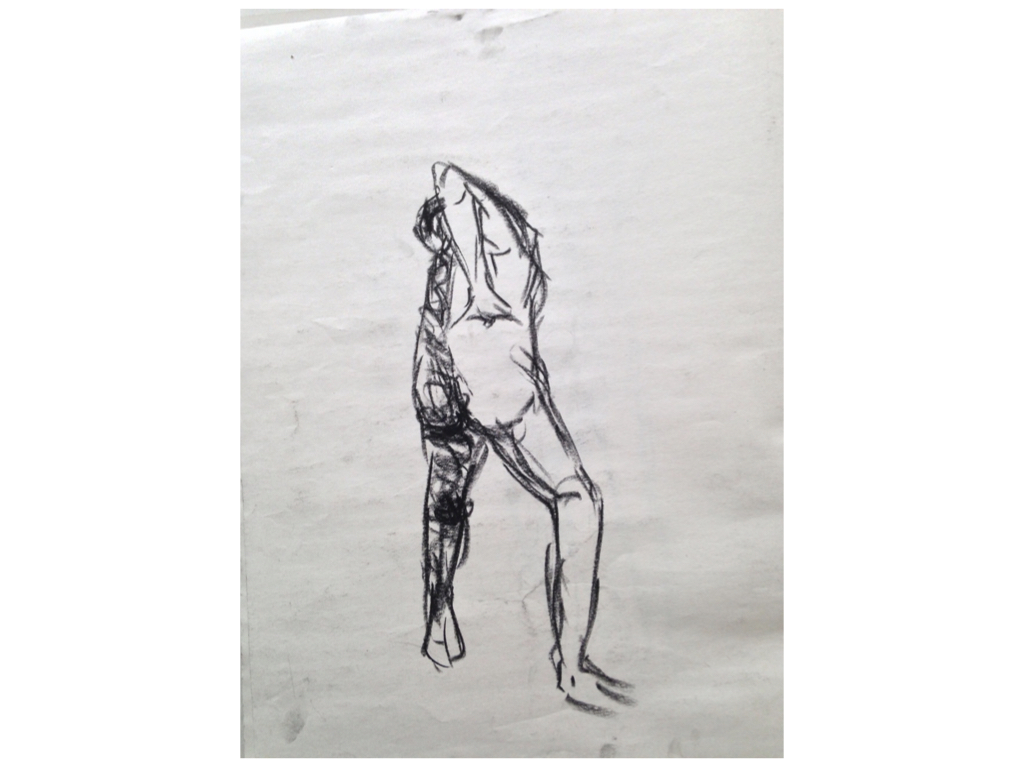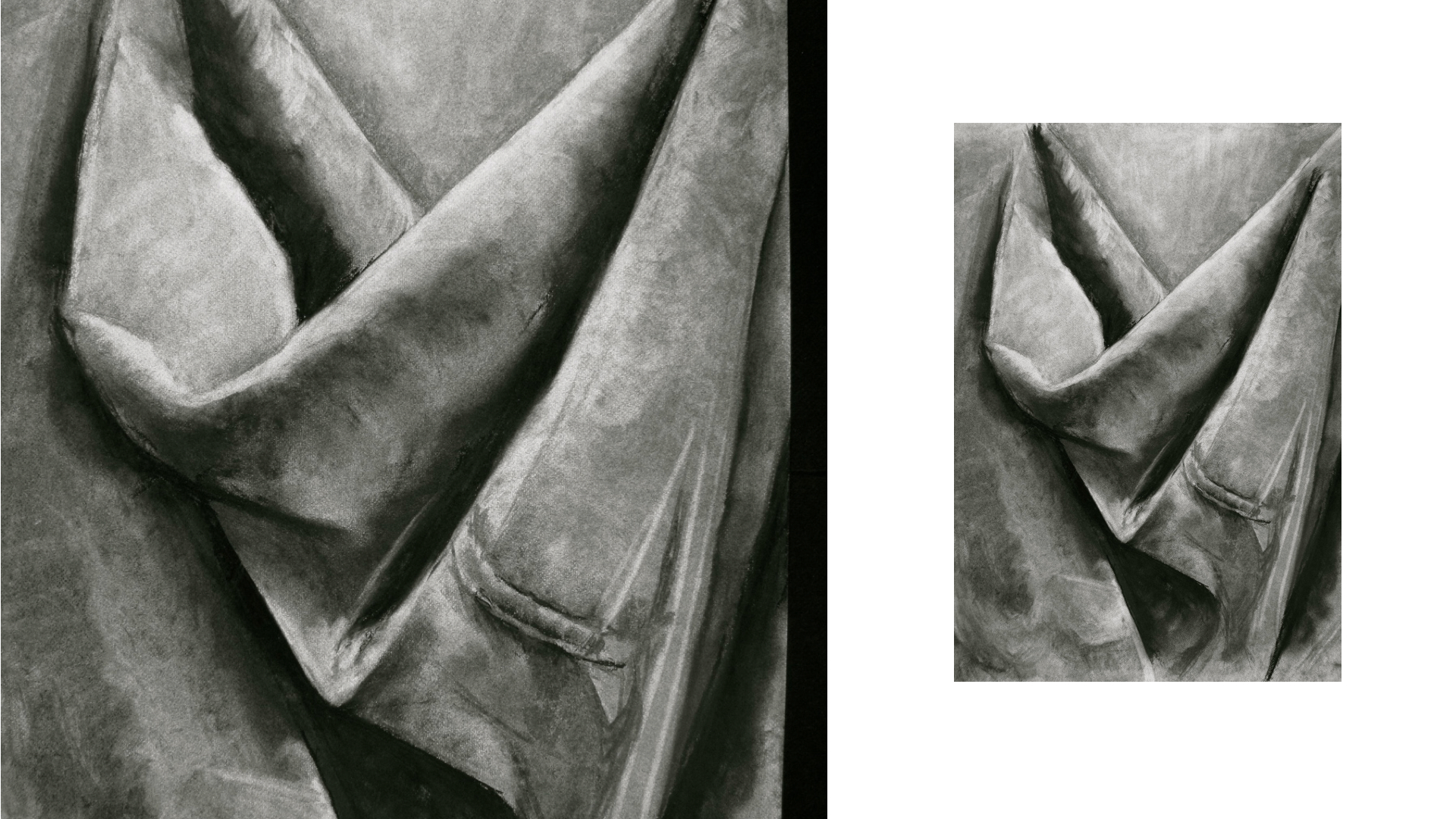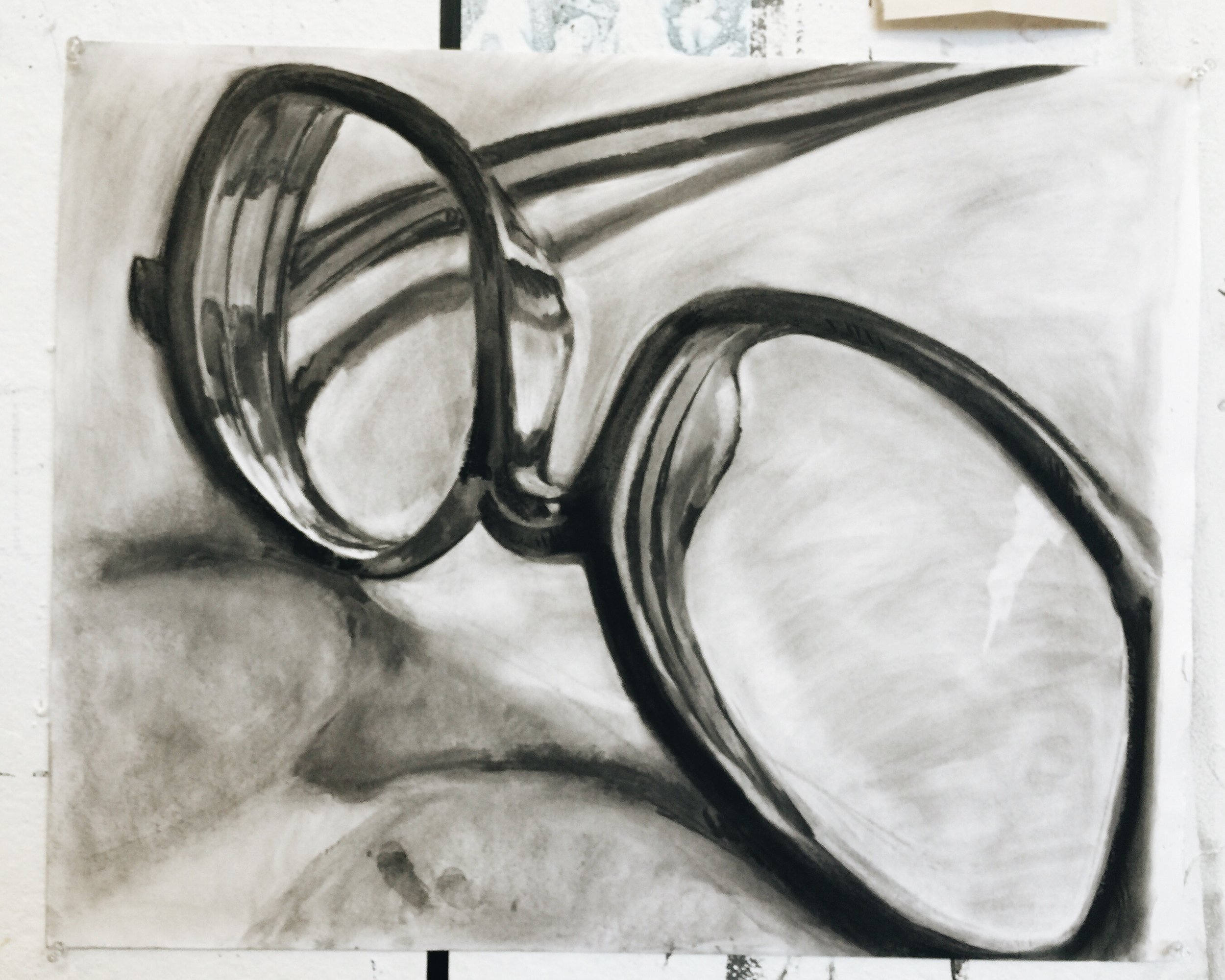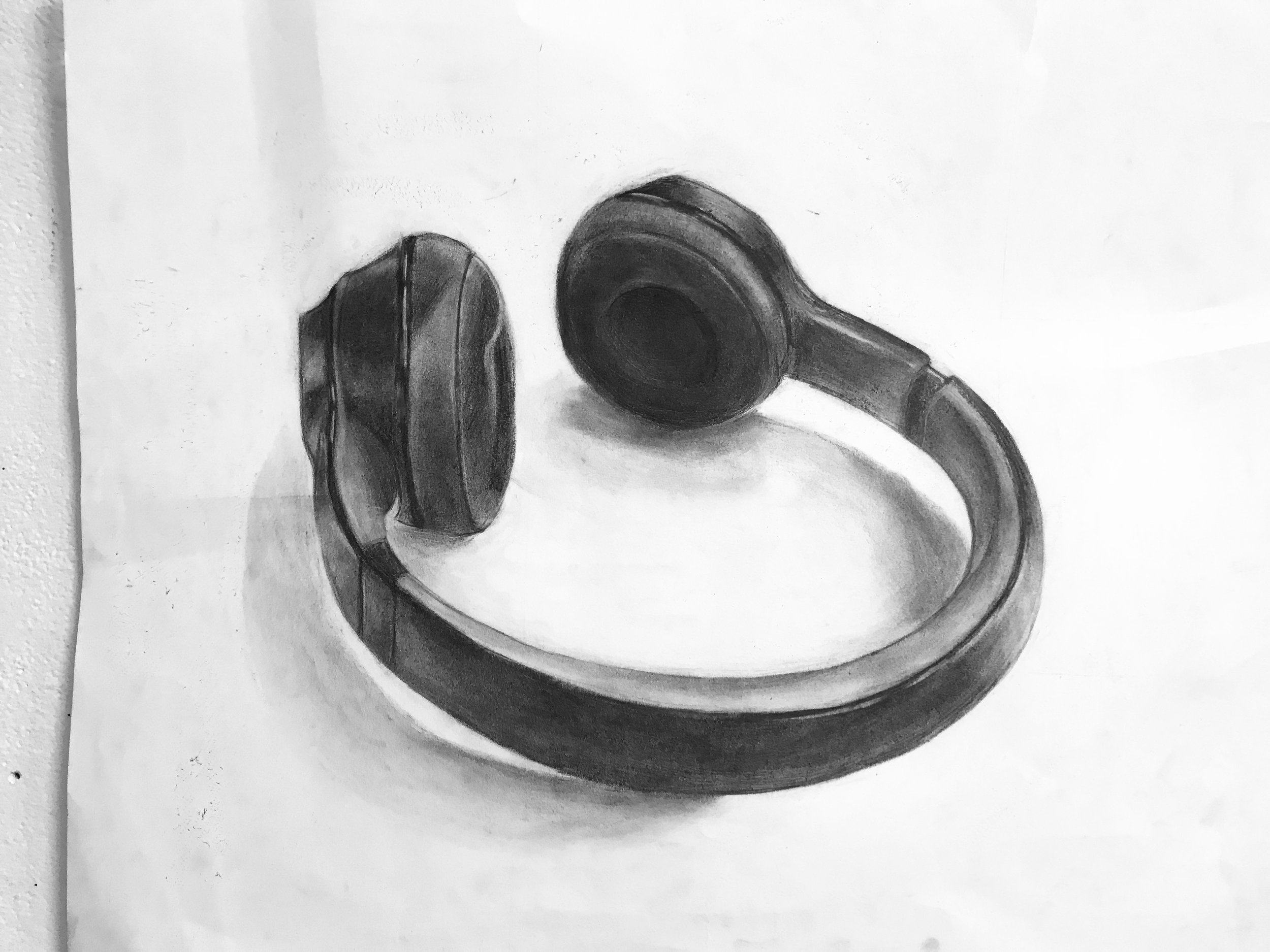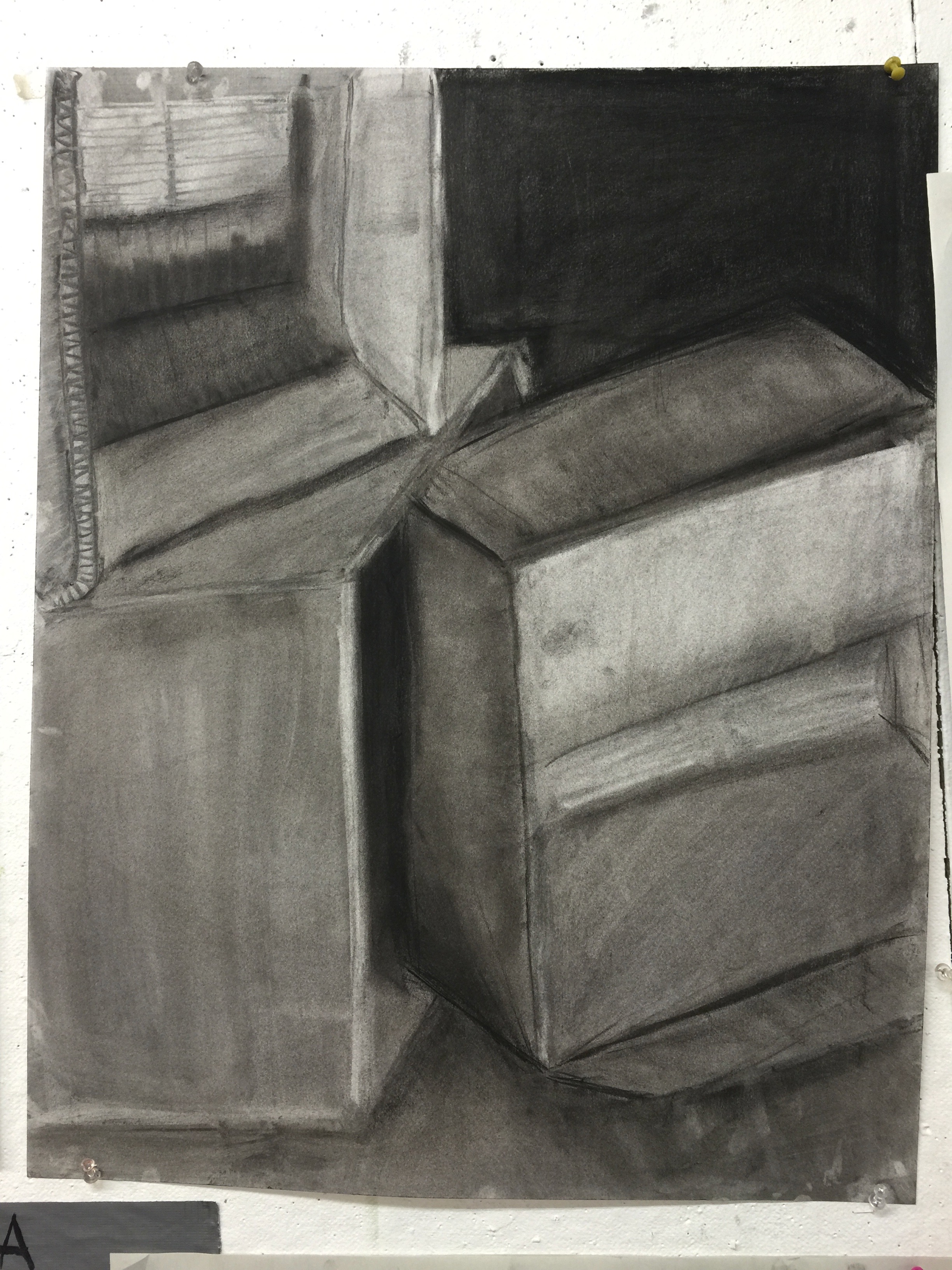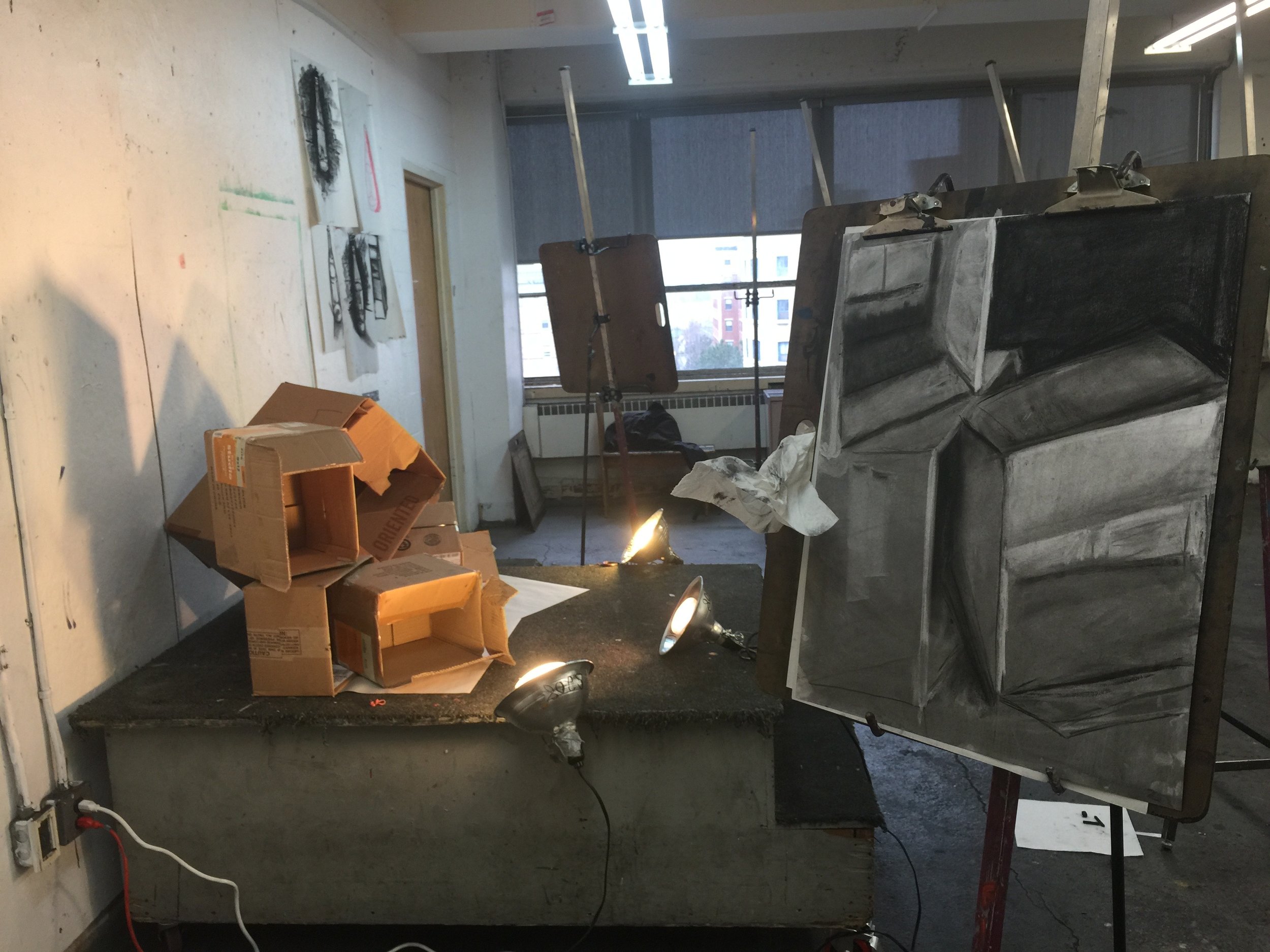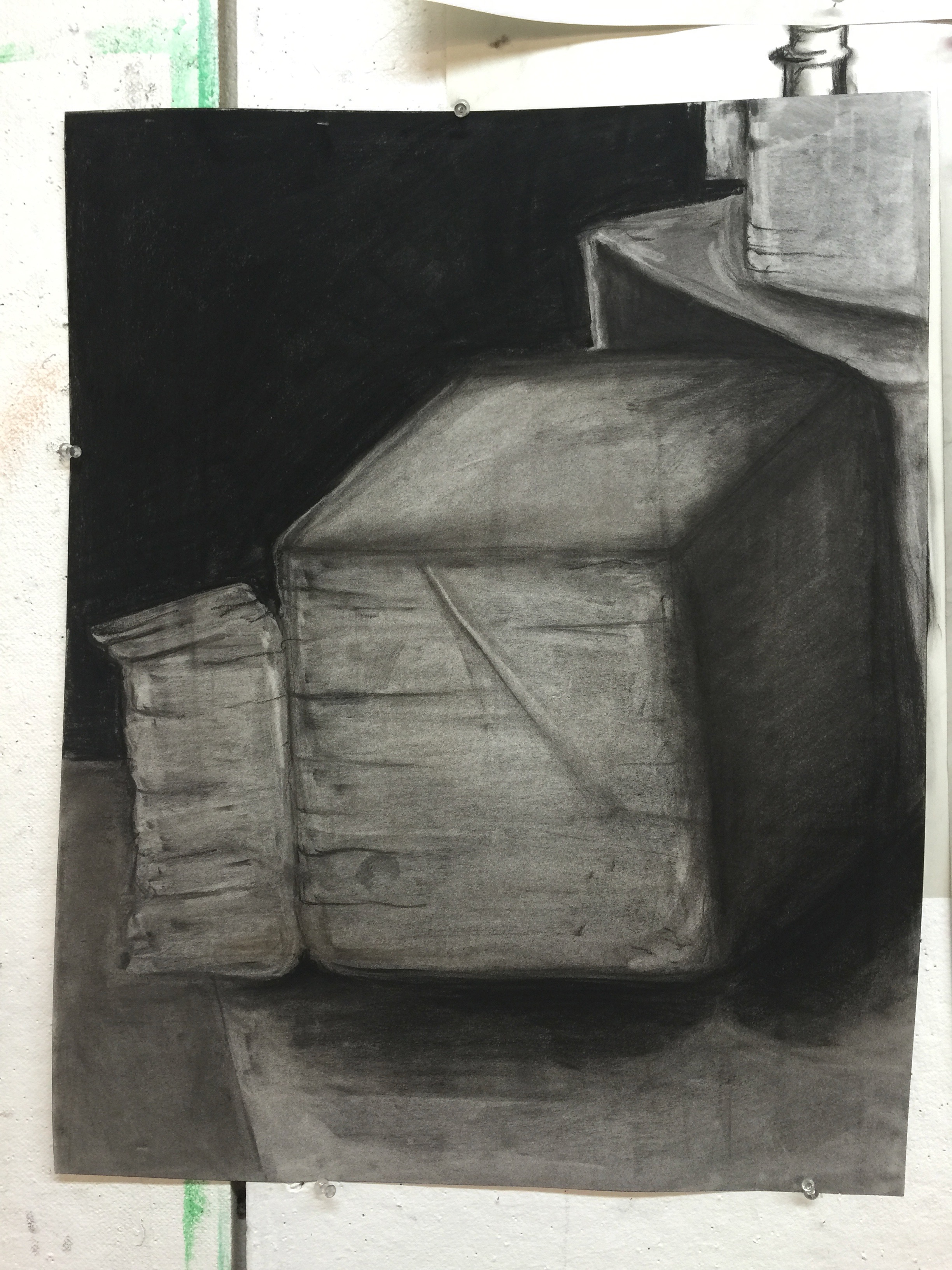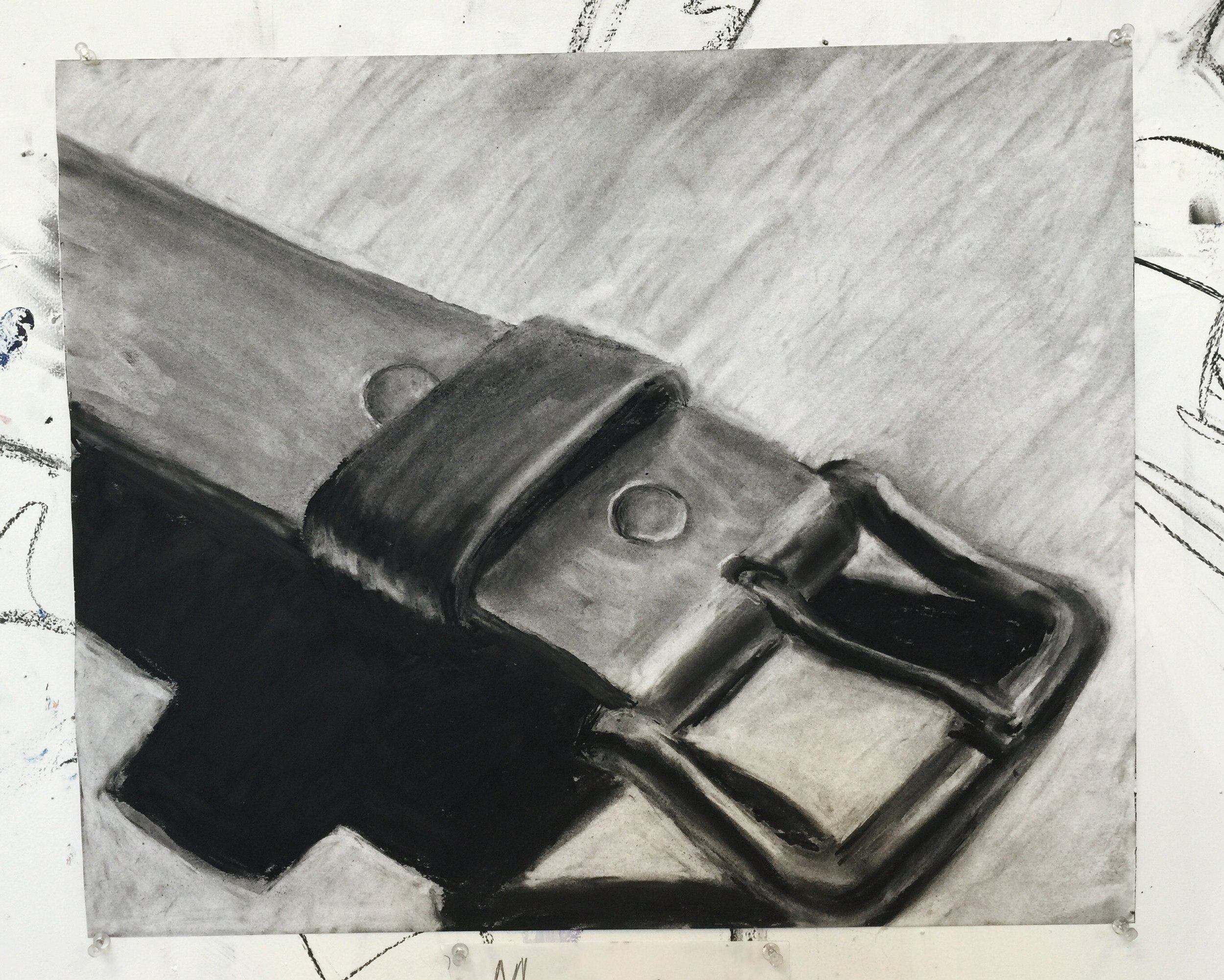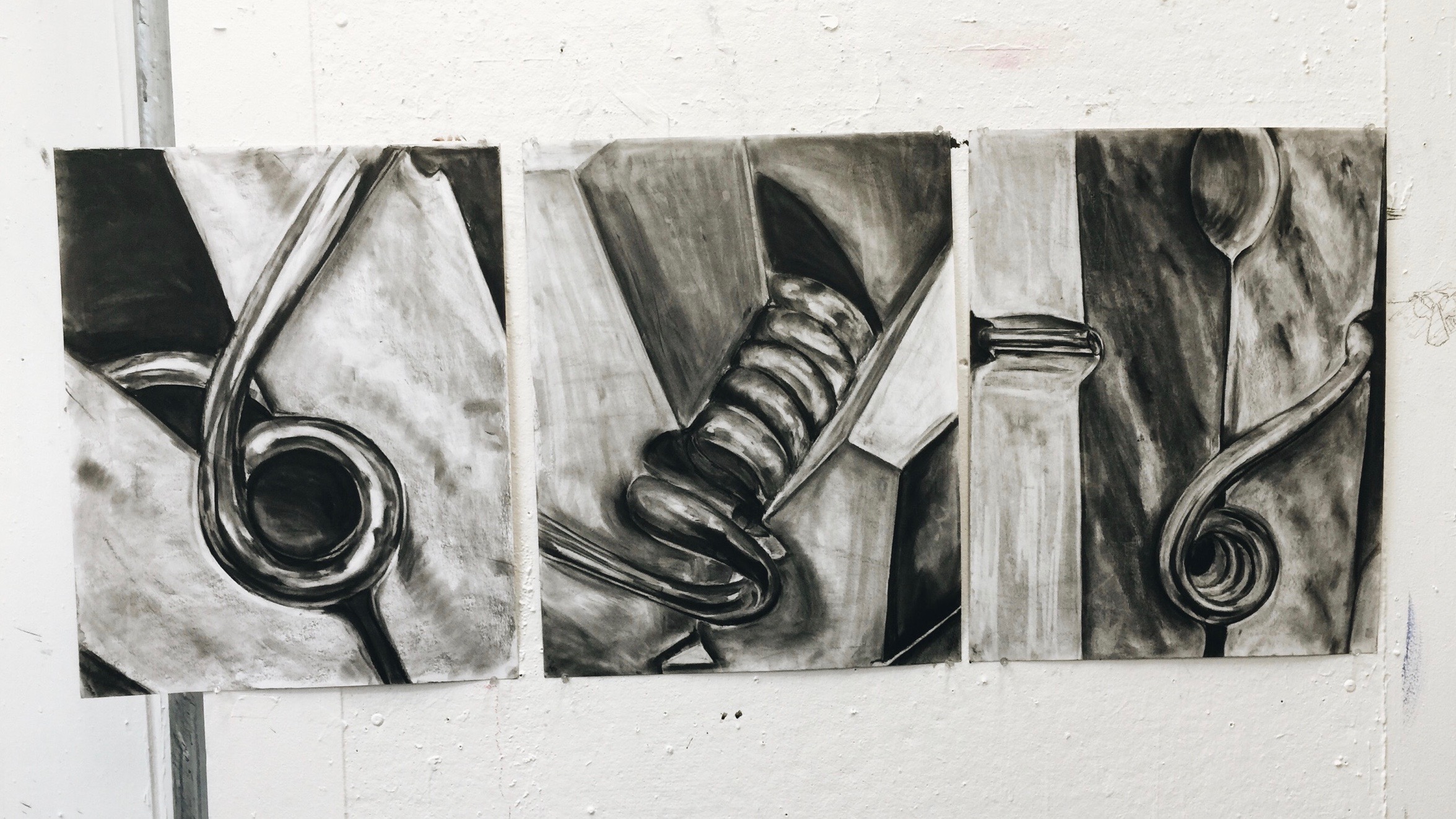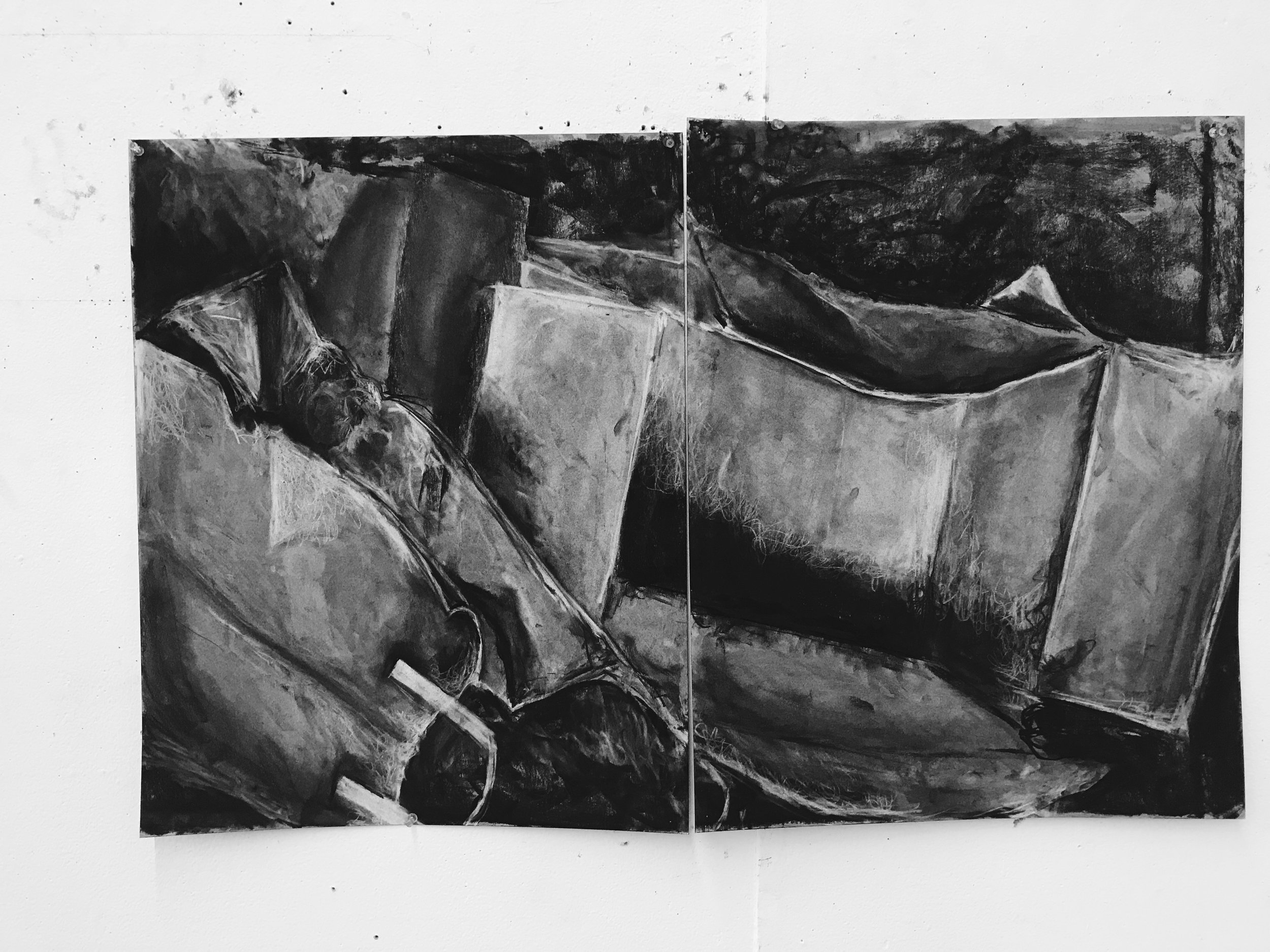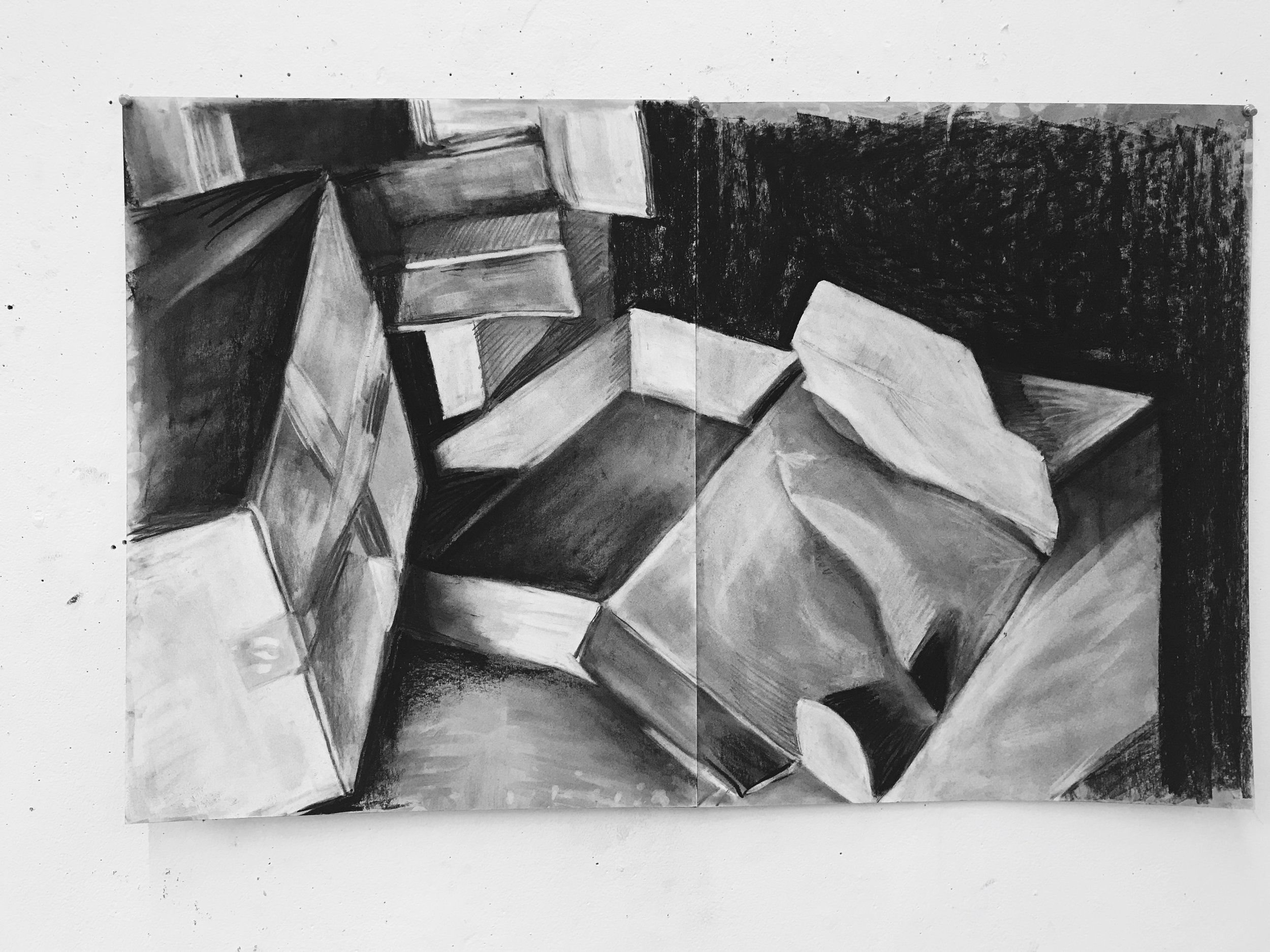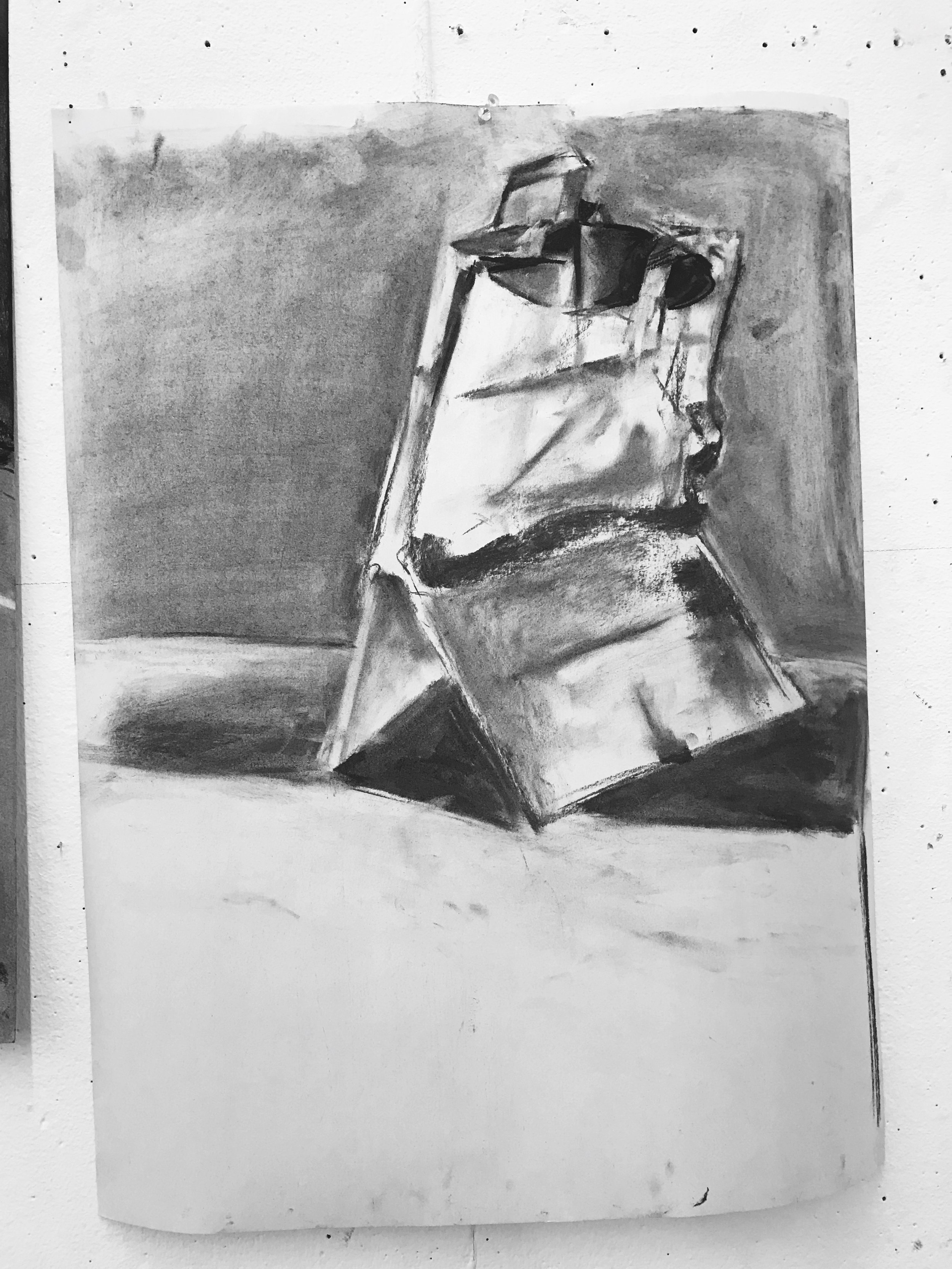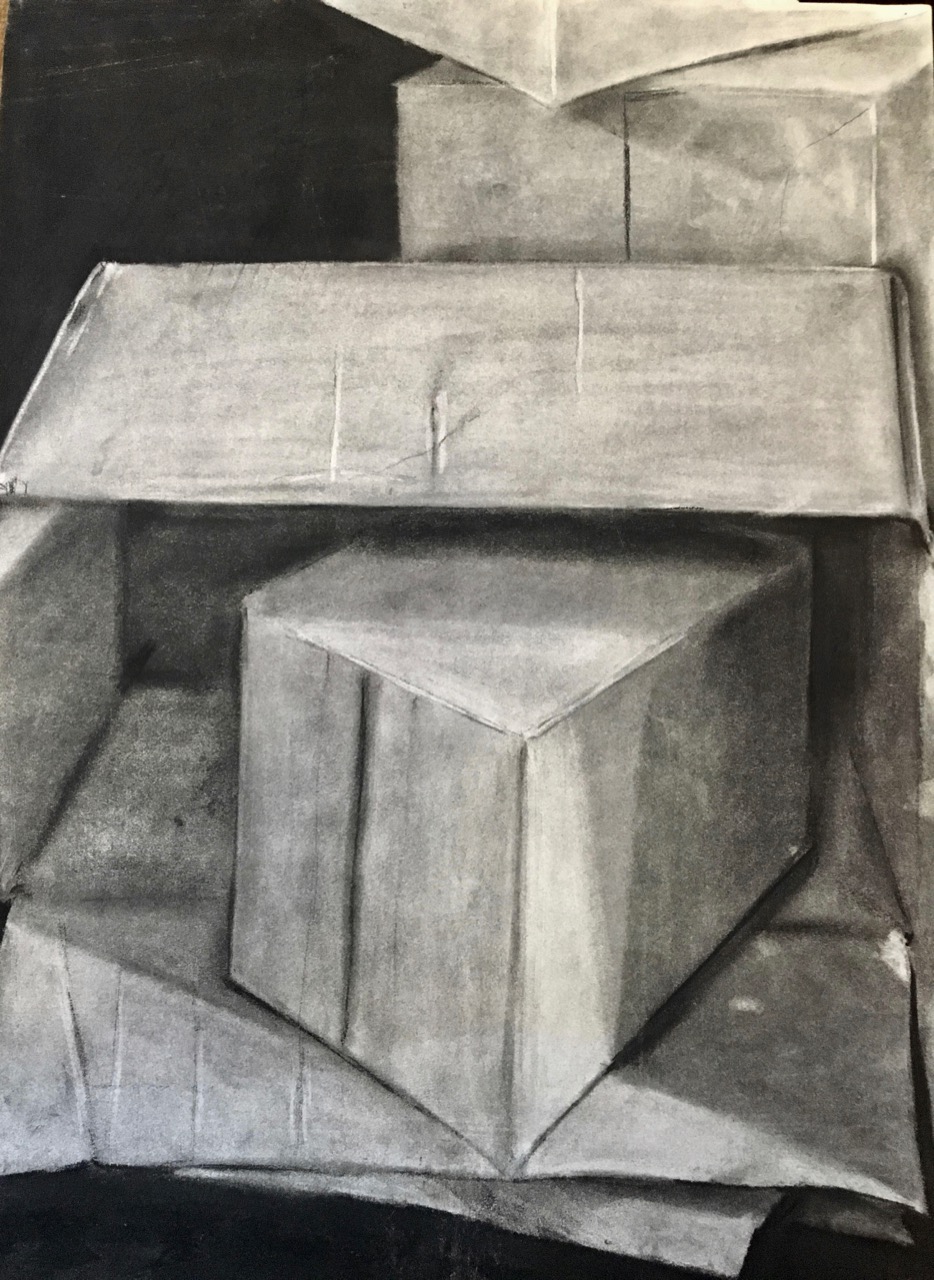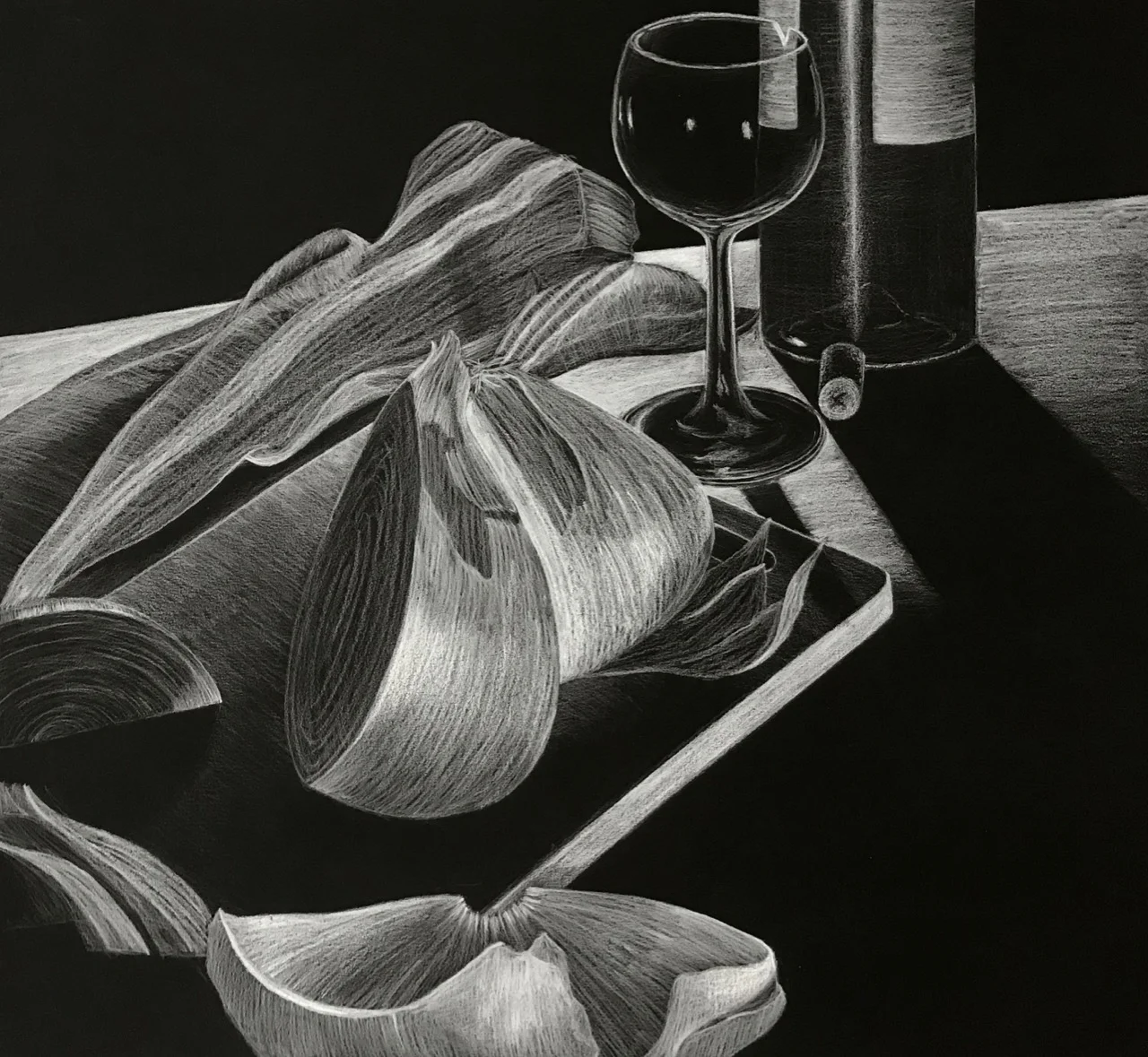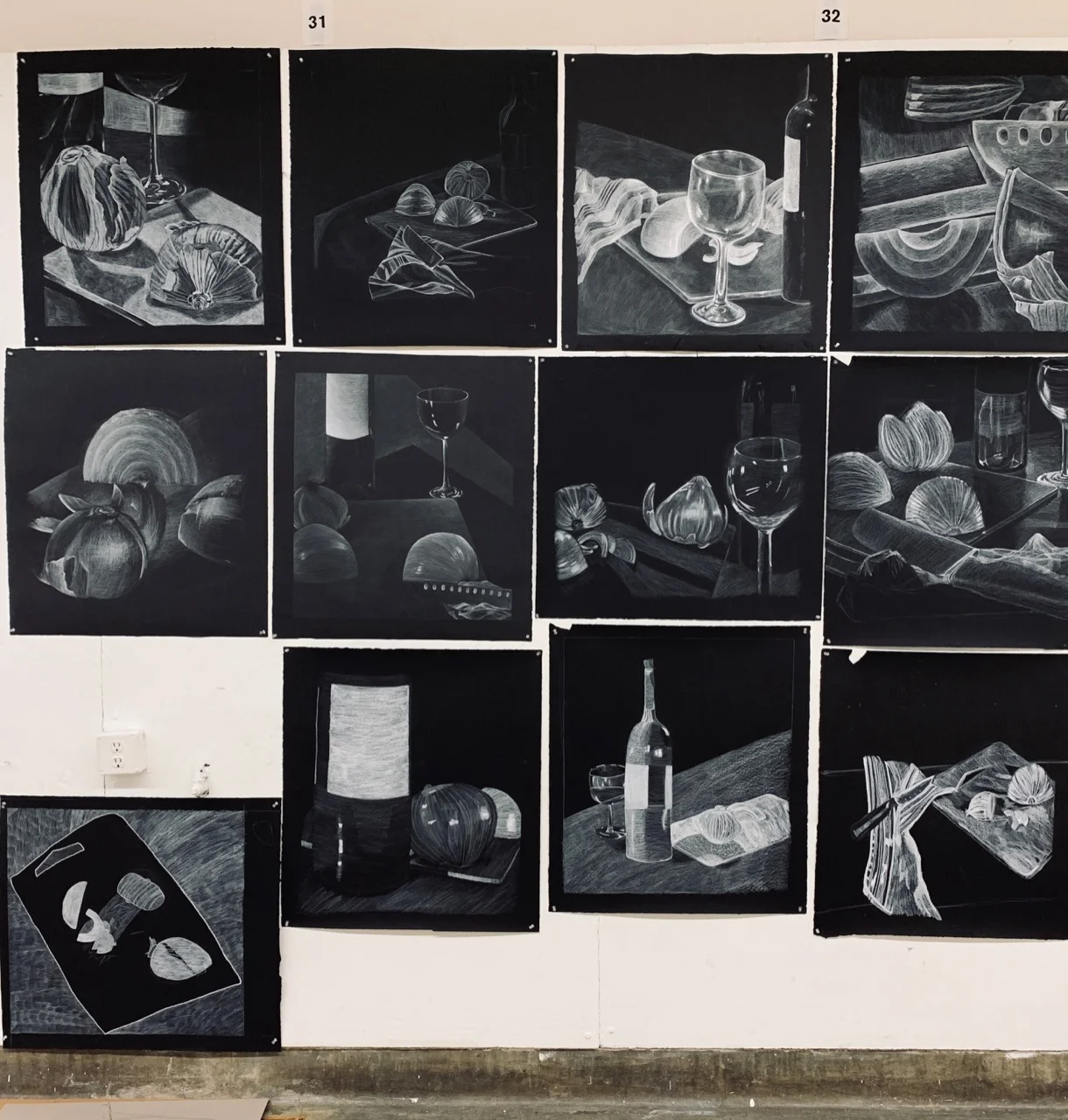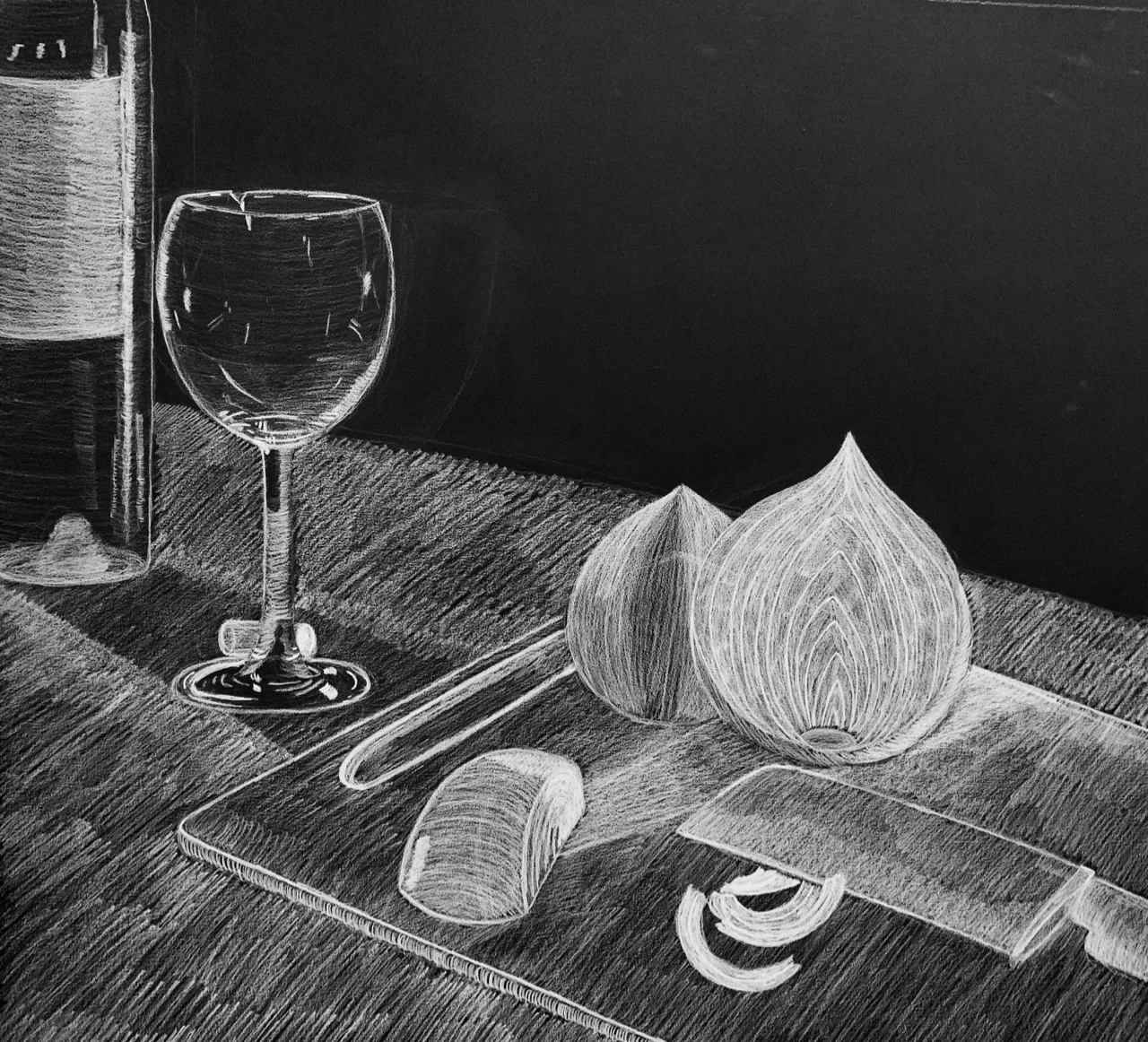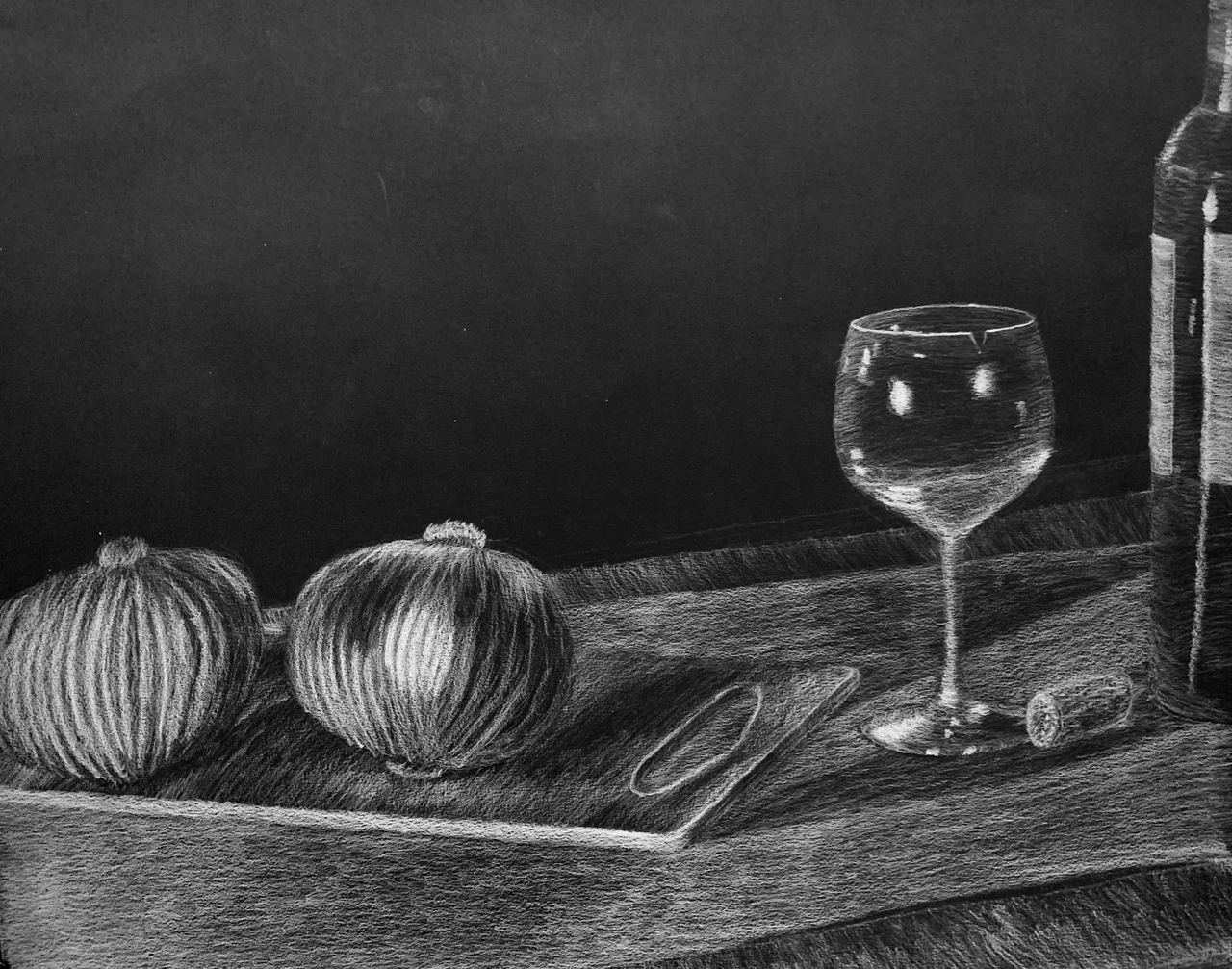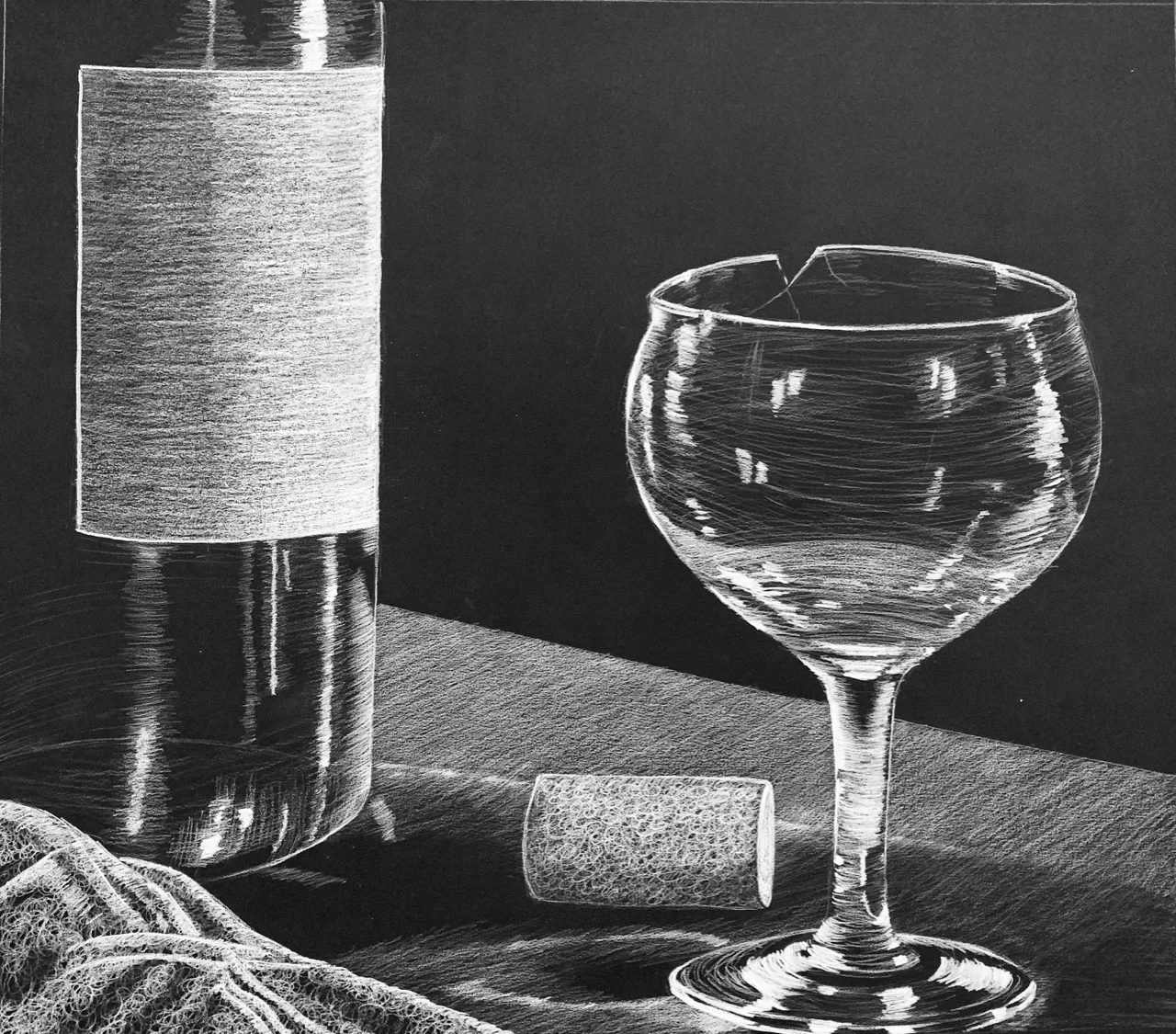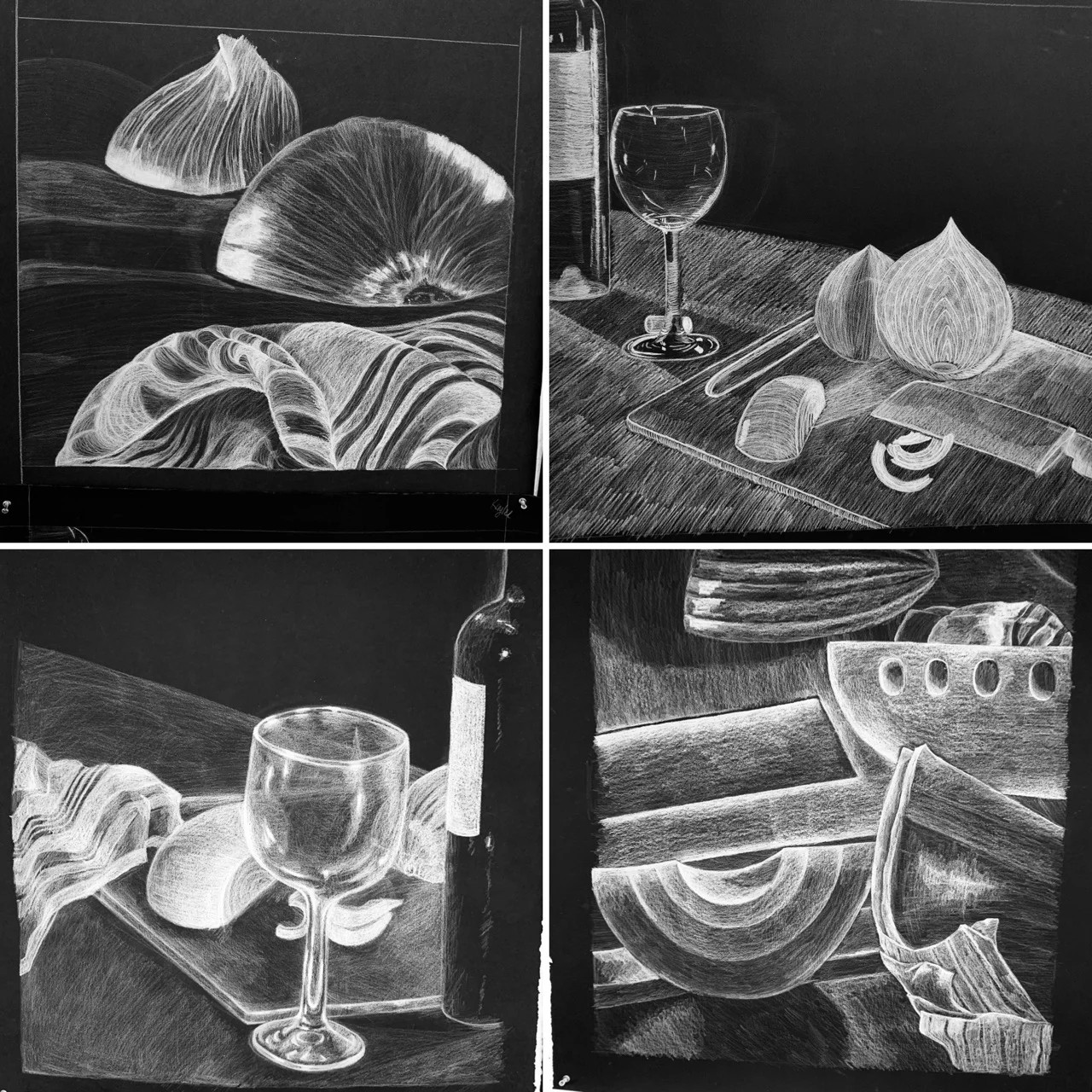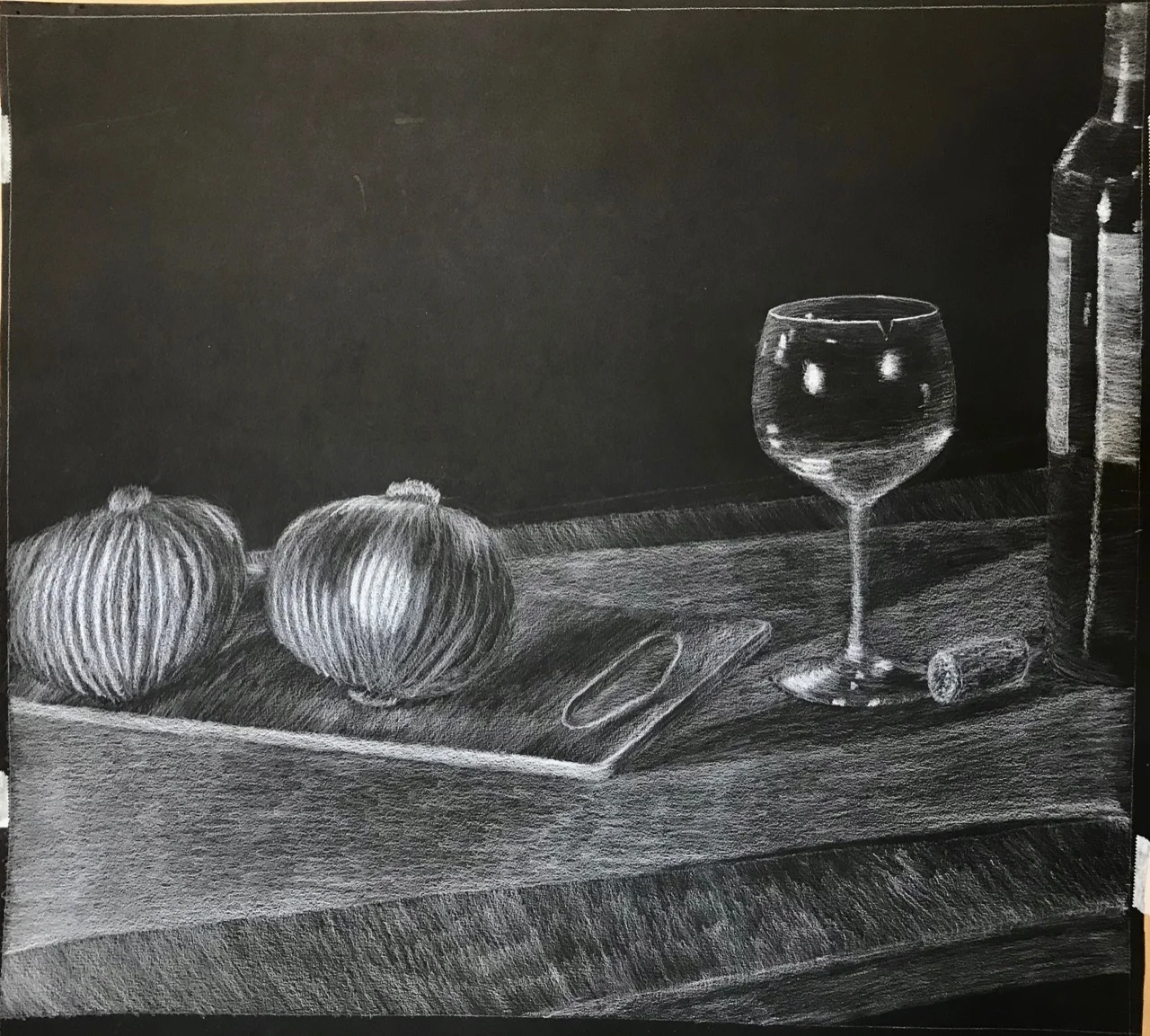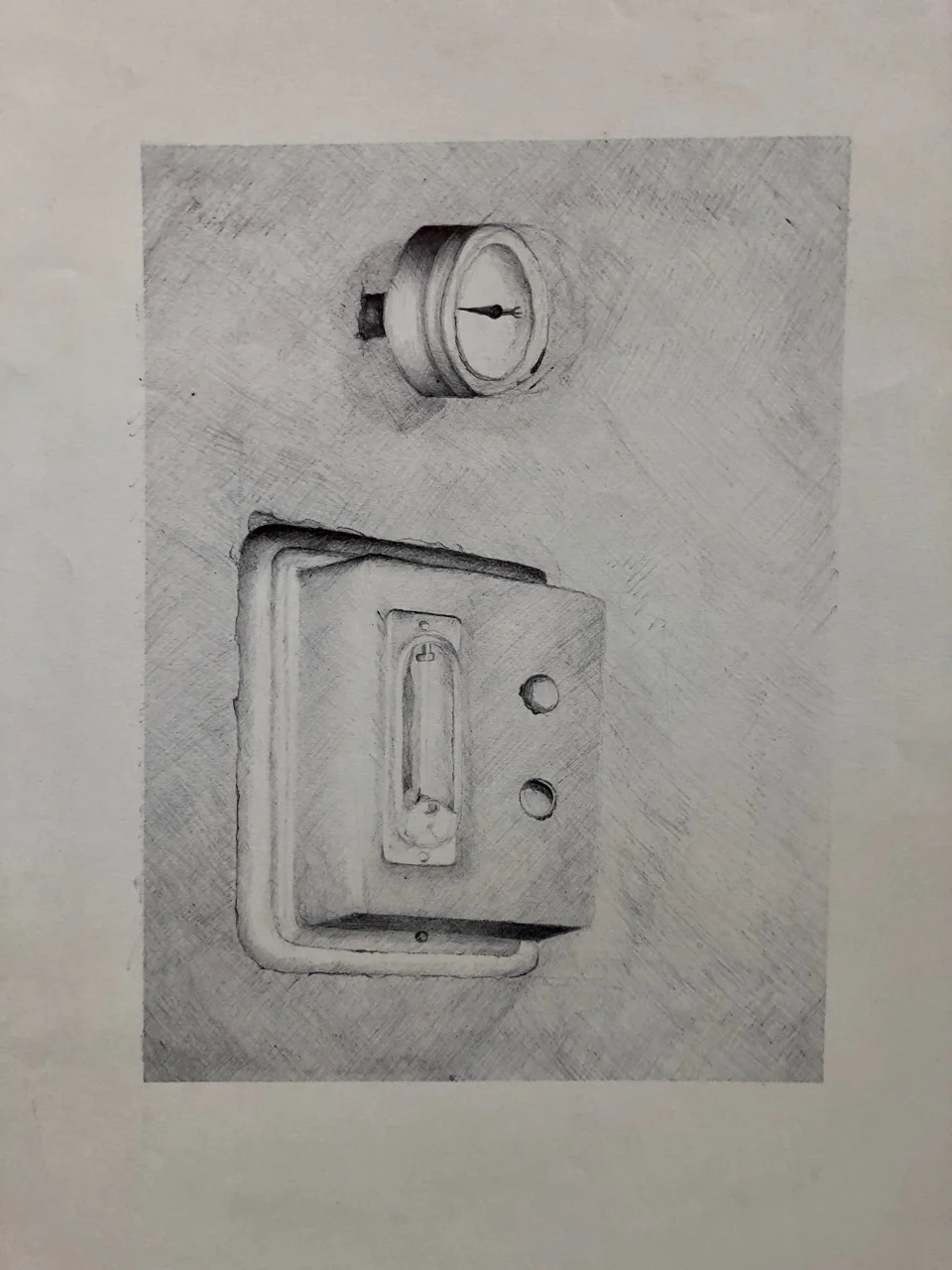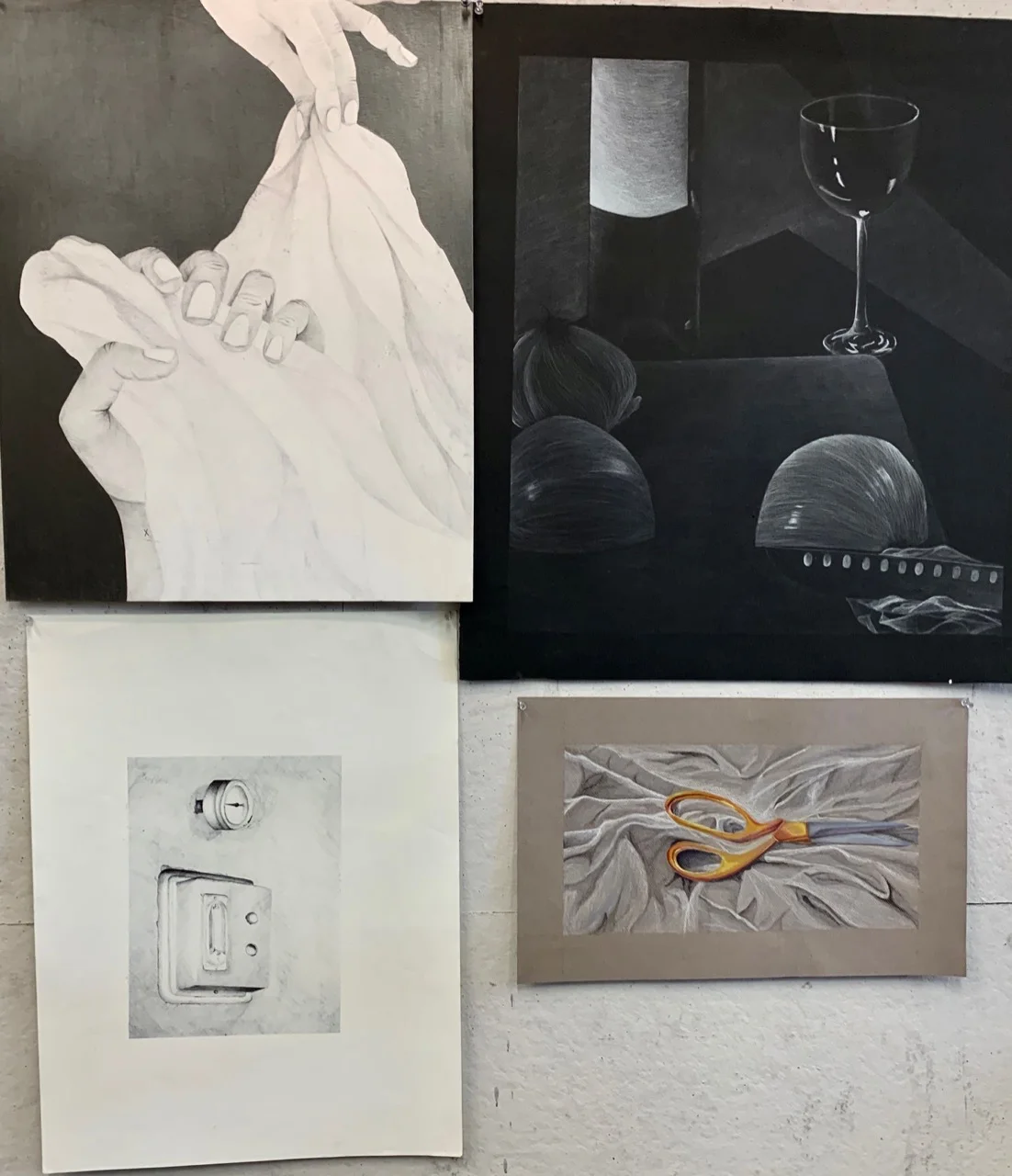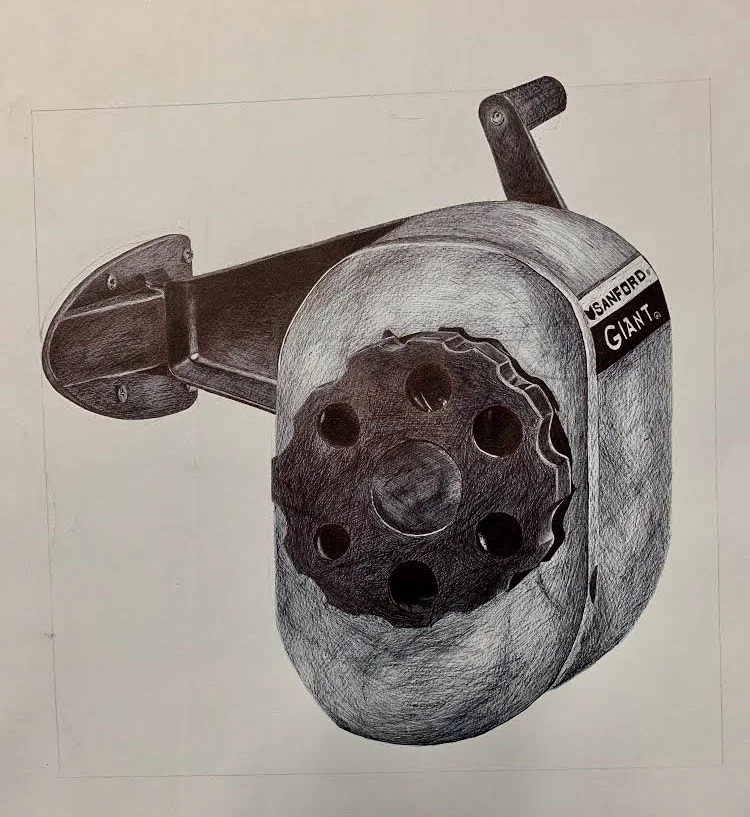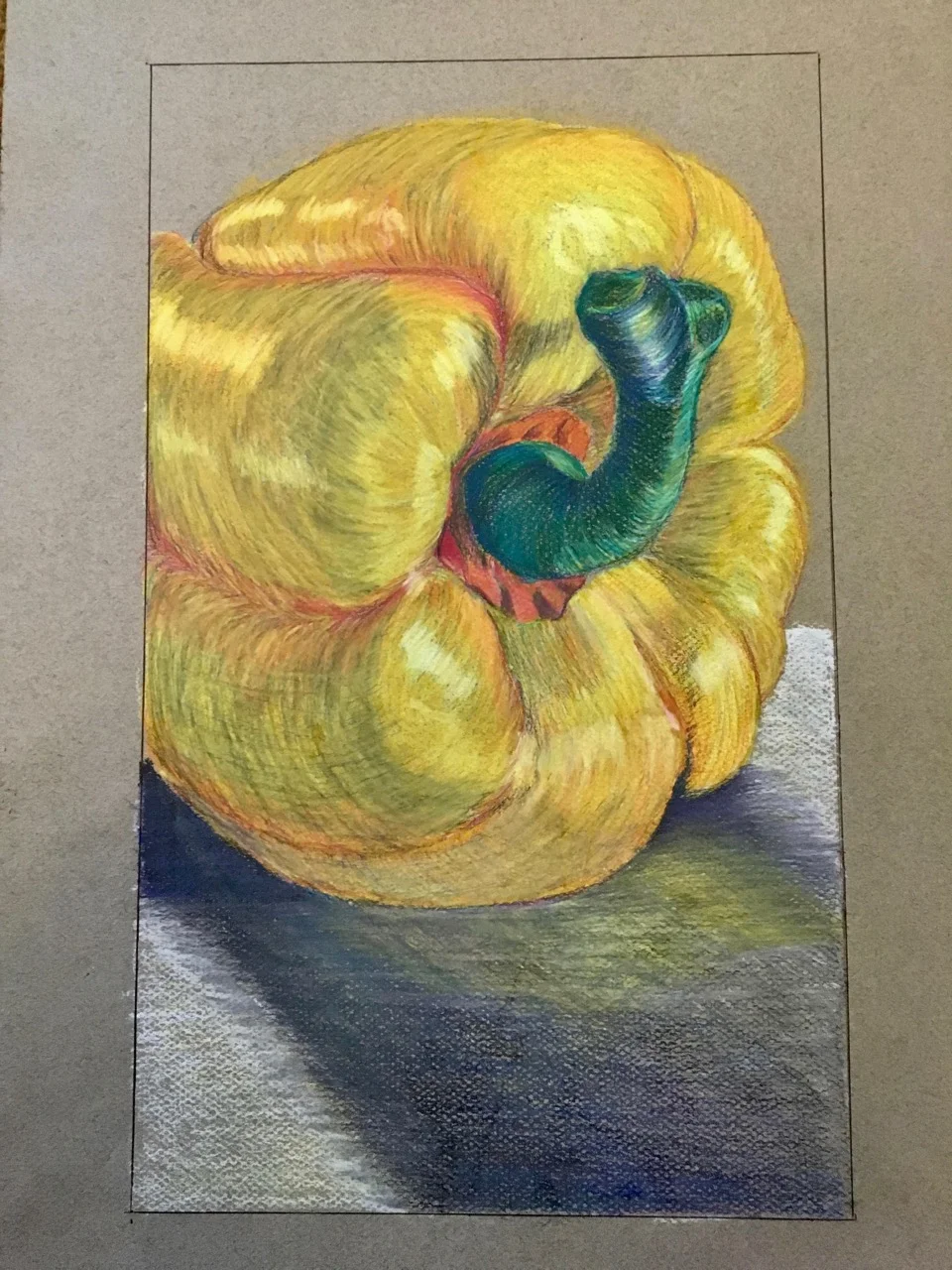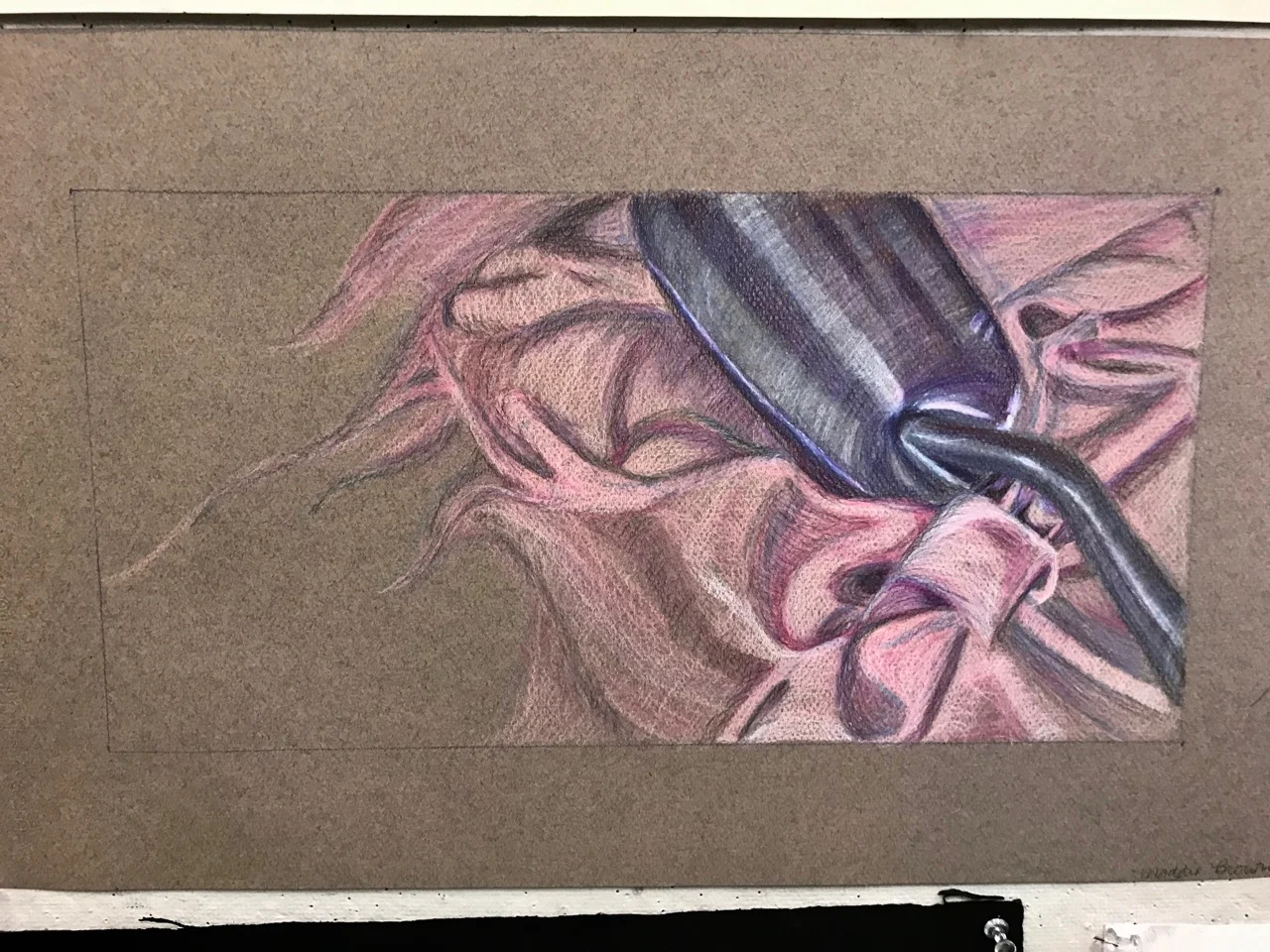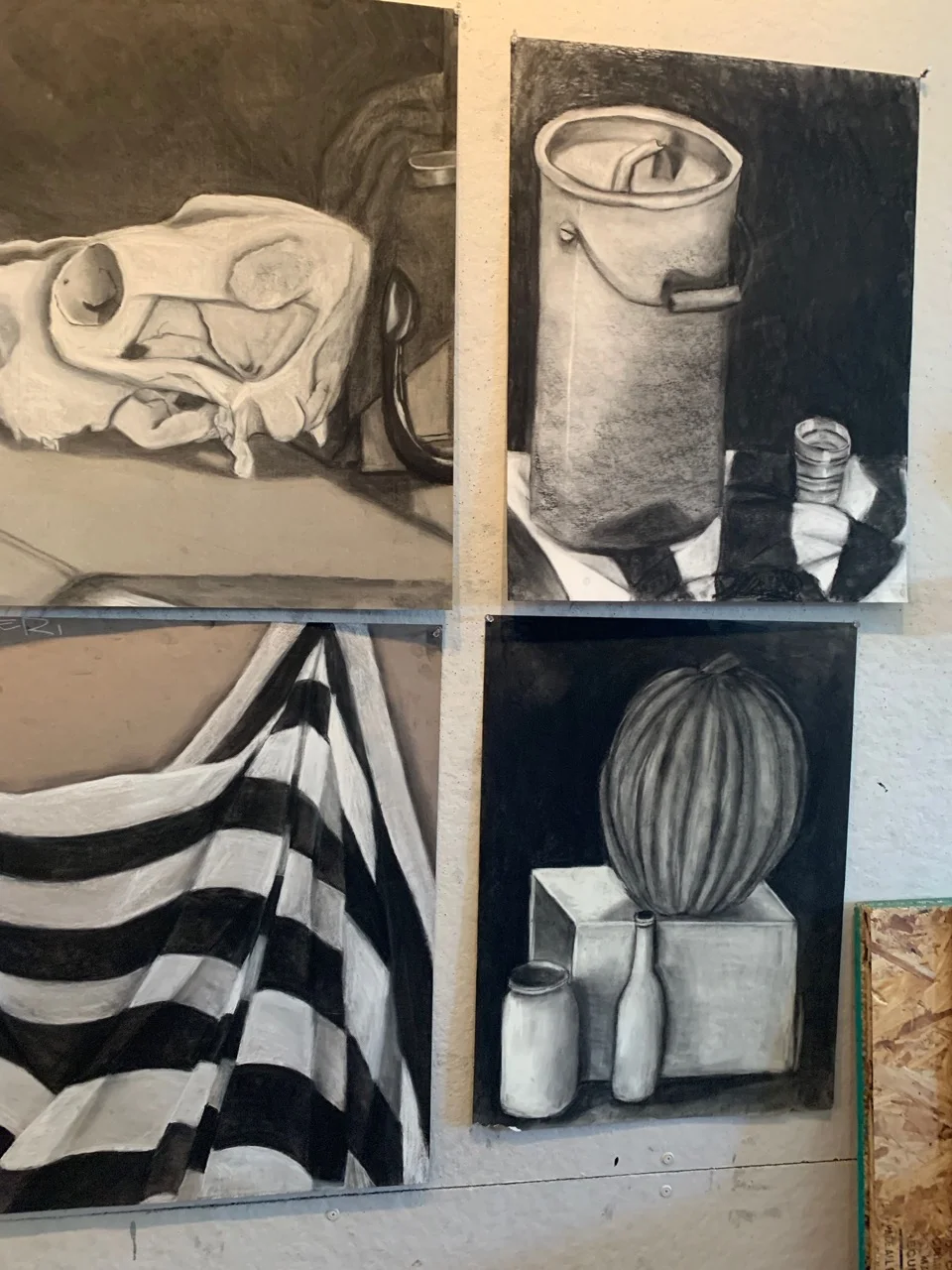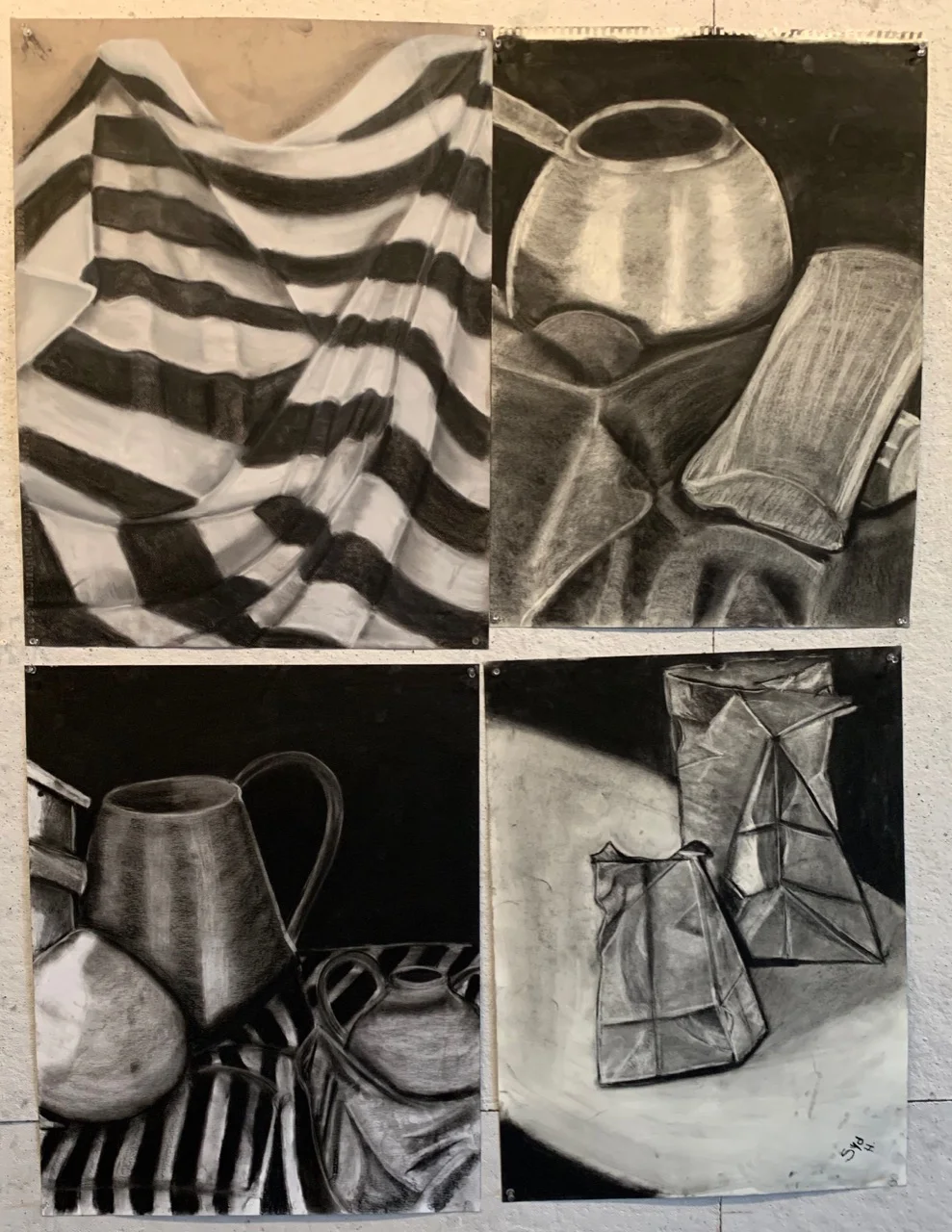STUDENT WORK SAMPLES
[ scroll down ]
STUDENT WORK SAMPLES
all of the galleries below are auto-scrolling carousels of images that can be manually advanced using the arrows—
THE POSSIBILITIES OF PAPER
For this assignment, students were challenged to deeply investigate significant objects from their past and construct them in 3 dimensions using only paper products. Investigations began with research and progressed through multiple drawings from primary observation. The images in this set represent the culmination of students’ efforts to give form to their chosen objects. The assignment focuses heavily on tactile problem-solving as each participant designs a strategy for rendering 3-dimensional forms from fragile 2-dimensional materials. Technical skills of pattern making, cutting, folding, scoring, measuring, construction, and joining methodologies are deeply embedded alongside personal content in this assignment.
3D PLANAR CONSTRUCTION FROM A B&W IMAGE
This art-thinking & making challenge was given to my Freshman Foundations students on day 2 of their first semester. Very minimal technical instruction or assistance was given as students were challenged: Using only the ambient light in the room, brown kraft paper, cutting tools, and pushpins, construct a low-relief 3D work that conjures the forms and values present in the source photograph of your eyes. Students experimented with individual possible solutions to this prompt before deciding upon an approach and creating a 1-to-1 planar rendering of their eyes.
ANALOG VECTOR DRAWINGS (USING THREAD AND NAILS)
Designed as a transitional assignment between analog and digital drawing, this project challenged students to render using only line, where each line is made using nails and threads, mirroring the process of vector-based digital drawing in programs like Illustrator. Students were asked to find and photograph line-heavy compositions from their everyday surroundings with added attention to composition and point-of-view. Students began by producing contour drawings on paper, reducing their images to the most essential lines. The drawings were then translated to the wall by hammering nails through the paper at the terminal ends of every line and placing nails at every intersection of two lines. Each student was given 500 feet of thread to create their line drawings using the nails. As a final layer, students could use networked lines and/or cut black paper to add value to their drawings.
IN STUDIO (PROCESS) AND END OF SEMESTER EXHIBITION
This is a collection of candid images taken throughout my first semester teaching in KCAI’s Foundations department that captures the dynamic range of works the students make in 3 months and highlights some of the moments of working when the studio was a mess as well as the cleaned space ready to welcome visitors for the end of semester show.
DIMENSIONAL PATTERN AND FORM WITH TAR PAPER
This assignment began with a statement the students were asked to prove: the shift from 2 to 3 dimensions can begin with something as humble as a fold. Students were asked to use only tarpaper and adhesives to construct dimensional forms that employed folding, rolling, or creasing paired with repetition to create installations that were a hybrid of object and image and that could be measured in at least 3 dimensions.
CRITIQUE VIEWS FROM INTERDISCIPLINARY STUDIO (ID STUDIO JR. SEMINAR AT MASSART)
ID Studio is a course built for lateral exploration that asks students to learn to make materials speak and to leverage the power that resides in the tools, processes, and substances their work is made from. All the images in these two galleries (above and below) were taken during our critiques. This course heavily emphasizes research, ideation, writing, presentation, and craft.
teaching philosophy
Students enter art school with production tools and unparalleled access to images carried in their pockets. Smartphones have become content creation tools: hybrid objects with high-resolution cameras, AI-powered computational photography, an instantaneously accessible streaming archive, and exponentially more computing power than the moon mission. This generation has grown up negotiating life one swipe away from the always-on social media attention market where they can make and distribute images globally without latency.
As an artist-educator, my teaching philosophy is an evolving expression of values and approaches that influence the environment, content, and concepts of any course I teach. The dynamics of culture, individual learning styles, ready access to answers, and expanding technology-fueled modes of creation have all informed a teaching philosophy that prioritizes the learning environment, values process, and leverages experiential learning to promote the development of dispositions, critical artistic skills, and habits of mind.
At its core, my philosophy requires interdisciplinarity and embraces divergent ontologies, lived experiences, cultural influences, philosophy, theories of knowledge, and contemporary art practice. All of my work in a classroom depends upon cultivating a healthy, dynamic studio. A studio embodies physical and psychological needs; it is a place of possibility that empowers artists to move between the known and the unknown, between problem and solution, or the idea and its manifestation.
The studio spaces I engineer center around synthesis, where Inclusive critical thinking and making merge to foster the development of critical interdisciplinary dispositions. Openness, characterized by active listening and receptivity to new ideas, is nurtured through exposure to diverse perspectives, inclusive content, collaborative projects, and open discussions. Problem-solving skills, encompassing analytical thinking, brainstorming, and decision-making, are honed through assignments with open-ended problems, real-world limitations, cross-disciplinary thinking, and opportunities for experimentation. Adaptability, marked by flexibility, resilience, and the ability to adjust to change, is cultivated through immersion in a learning environment with varied assignments, exposure to different processes, and open-ended projects. Critical thinking skills, analyzing and synthesizing information develop through conversations, writing, critique, and exposure to art history and contemporary theory. Curiosity is modeled and nurtured through the promotion of asking better questions, exposure to a wide range of thinking approaches, and exposure to diverse artists. Risk-taking, requiring courage, persistence, a willingness to experiment, and an acceptance of failure, is facilitated through assignments that encourage boundary-pushing supported by a non-judgmental atmosphere that values iteration as an evolutionary force. Precision and craft, encompassing technical proficiency, attention to detail, and mastery of tools, are emphasized through skill-building exercises, demonstration, and dedicated independent studio time.
I take pride in nurturing and facilitating a classroom-studio environment that functions like a laboratory, where experimentation is essential, students’ lived experience is valued, work produces work, and learning is not limited to the top-down dissemination of knowledge. I approach my role in the classroom as a catalyst, collaborator, mentor, and advisor focused on students’ ideation and critical thinking skills. The energy generated from this combination fuels a culture that plays with taxonomies, encourages leaps in thought, values subversive connections, and new approaches to making. From the consistency of this environment, students embrace risk-taking, abandon their non-functioning habits, transcend established logic, and move past the stability of repeatable, known results into the realm of discovery. The dispositions, attitudes, skills, and habits of mind they grow in our shared studio translate to the production of agency and the power to become active contributors to the studio, the art world, and beyond.
THE OBSERVED AND RECORDED BODY
The black and white drawings that begin this collection come from an assignment that challenges students to use scale, representation, proportion, contrast, value, composition, and point of view. Students are asked to render a fragment of their bodies to represent their whole being & self, using only two humble materials. Each student is given a sheet of tar paper 36’’ wide with a length that matches their height. The students are provided with white classroom chalk as their rendering material. Students had only 2 class sessions (on sequential days) and the overnight time between them to complete the challenge. Included in this collection, you will also see the beginning, observational figure drawings focusing on the whole body in space that preceded the prompt to zoom in and focus on details.
CHARCOAL DRAWINGS OF PLANAR OBJECTS
Drawings above, in this collection, are produced using a timed charcoal drawing process over 1 hour. Using vine charcoal, compressed charcoal, and a white plastic eraser, students work on their drawings in 3-5 minute cycles with each material. The goal of this assignment is to get students to treat the drawing as a whole rather than a series of details. The first focus is on composition, followed by repeated layers of value. Each tool is dedicated to a value range; mid-tones are rendered with vine charcoal, shadows are rendered with compressed charcoal, and highlights are rendered with erasers.
LINE. MARK. FORM. VALUE.
The drawings in this collection emphasize the importance of line and mark-making in rendering believable representational form. The goals for the assignments presented in this collection are all about choice-making in the moments of drawing. Composition, line weight, speed, and networking relative to the drawing material are all considered.
STUDENT COLOR STUDIES IN COLORED PENCIL (DRAWING 1)
assignment goal: integrate mark-making, line-networking, local color and complex color building to render believable form from an observed object.
DRAWING 1: FIRST 3 WEEKS PROGRESSION
The work in this gallery shows a glimpse of the typical growth that occurs in the first 3 weeks of my drawing 1 classes.
Before students can deeply explore composition we are focused on line, plane, form and value in black and white. In the early stages of learning to draw I am helping students analyze what they think they are seeing, providing them with systems to break their world into pieces and rebuild it through layering in their drawings.
diversity statement
As an artist-educator with experience in a range of educational environments, I understand teaching as a profession defined by a set of skills, requirements, and operations within a school's system. I also appreciate its deeper dimension as a worldview experienced through the skin, person to person. In the context of art schools, teaching is modeling, transparency, mentorship, translation, transmission, synthesis, and evolution of thinking. Beyond its visible mechanics, the practice of teaching is central to the expansion of social capacity and the active construction of alternative, inclusive futures. Cultivating cultural competencies, open-mindedness, inclusivity, equity, advocacy, and empathy are paramount in realizing the evolutionary power of teaching and learning.
My pedagogy embeds the language and values of diversity into daily actions, interactions, and experiences. Acknowledging and actively valuing diverse voices, cultures, and ways of being demands a classroom culture of continuous dialogue, reflection, and adaptation. In this way, diversity functions as a dynamic force shaping our intimate educational environment and catalyzing the expansion of each student's space of possibility. In practice, diversity transcends boundaries of demographic language and embraces the plurality of perspectives that converge in the classroom. Students should fluidly encounter and engage with many, often diverging perspectives that can validate their ideas or function as new branches in their thinking.
The inclusive ontological frameworks in my curricula recognize, accommodate, and embed the expansive diversity of our students' lived experiences at the core of the classroom experience. By integrating art-making practices with science, theory, philosophy, social concepts, and the work of living artists across the spectrum of humanity, I aim to scaffold and expand students' intellectual and artistic investigations, encouraging them to approach problems with a multidimensional mindset. Through daily interactions, instructional design, and curriculum development, my pedagogical approach reflects a deep commitment to inclusivity. In my studios, students feel seen, heard, and valued because their unique contributions are integral to the group's learning journey. The principles of diversity are spoken and authentically lived at all times in my studios and classrooms.

